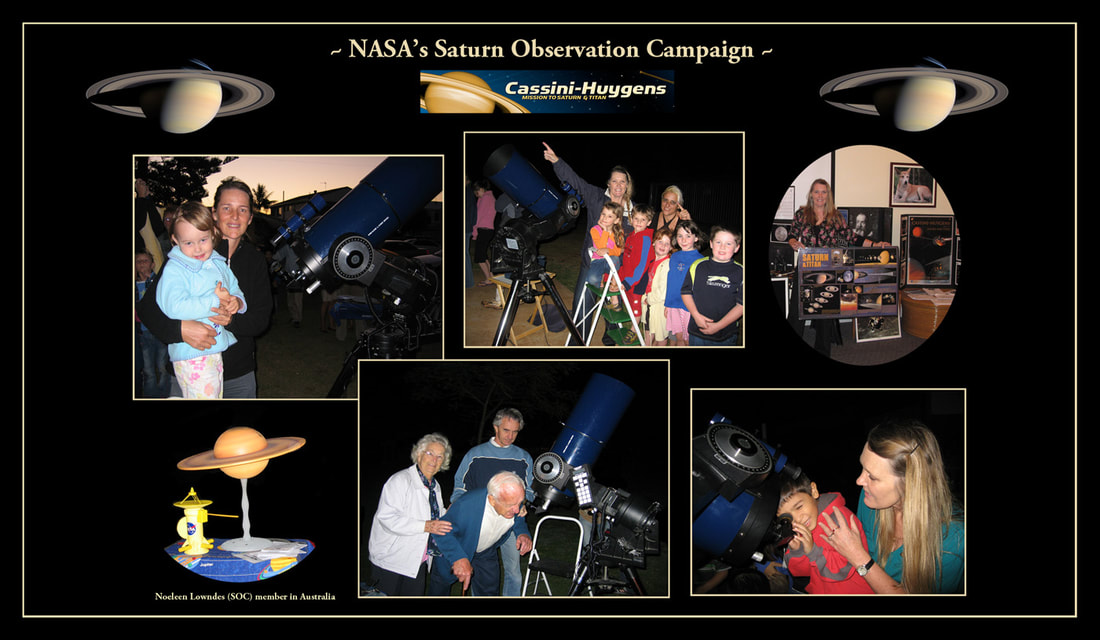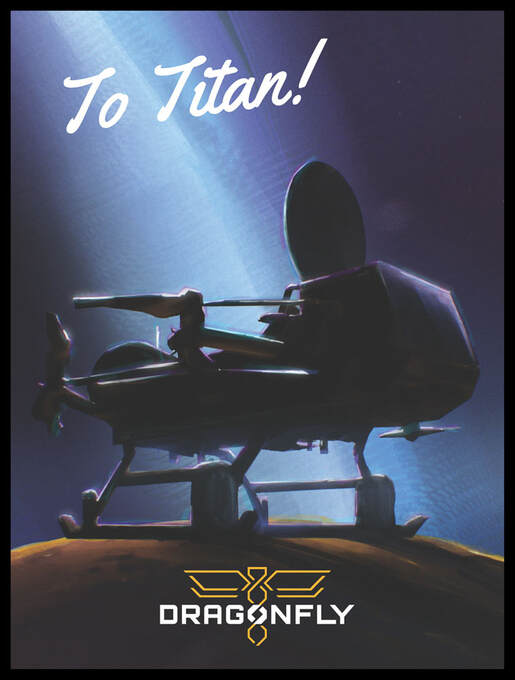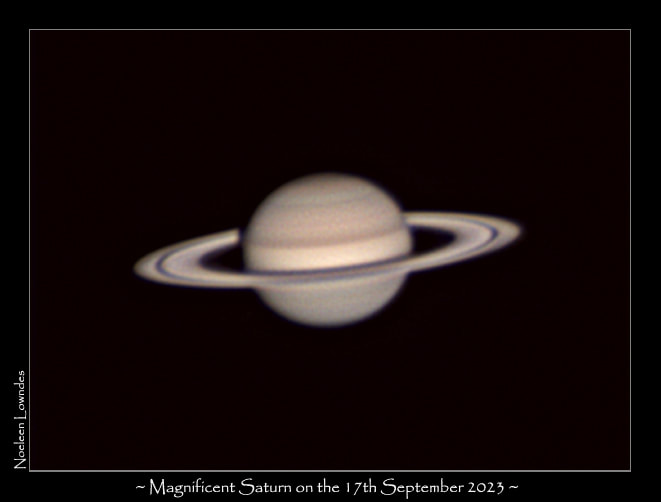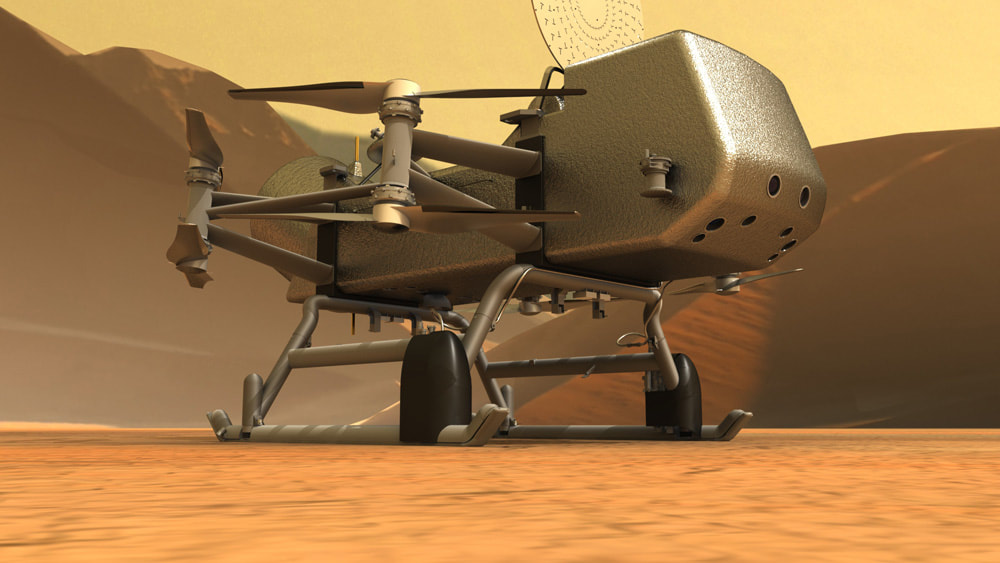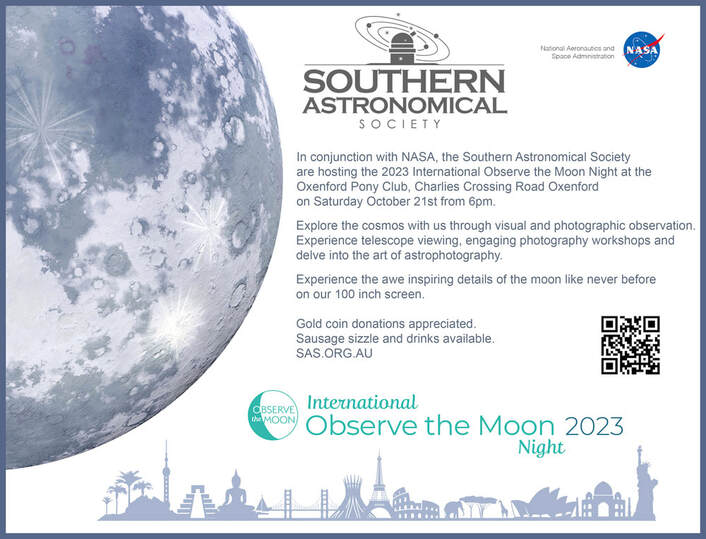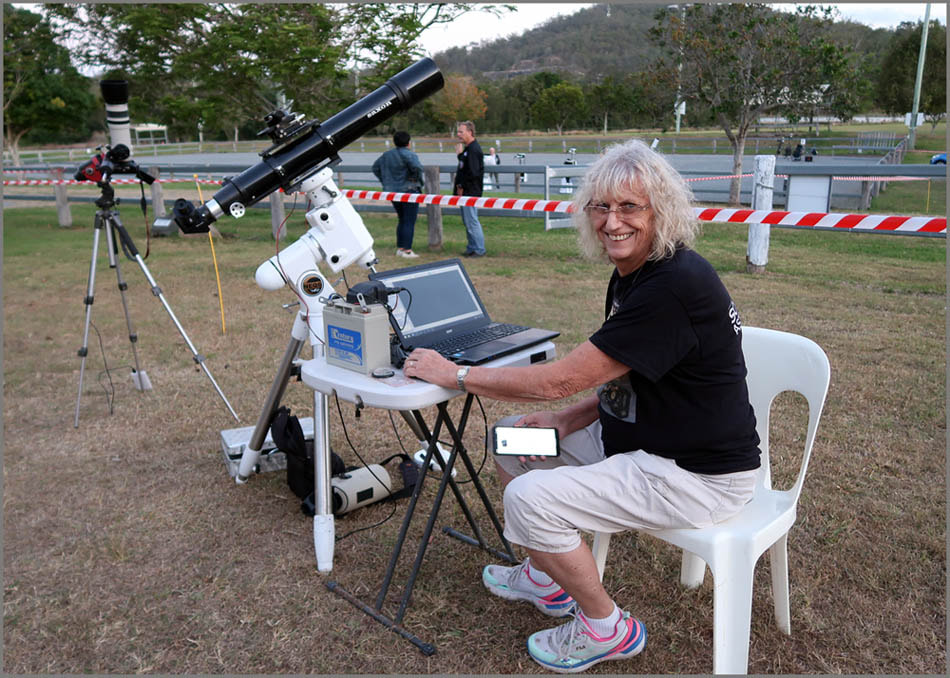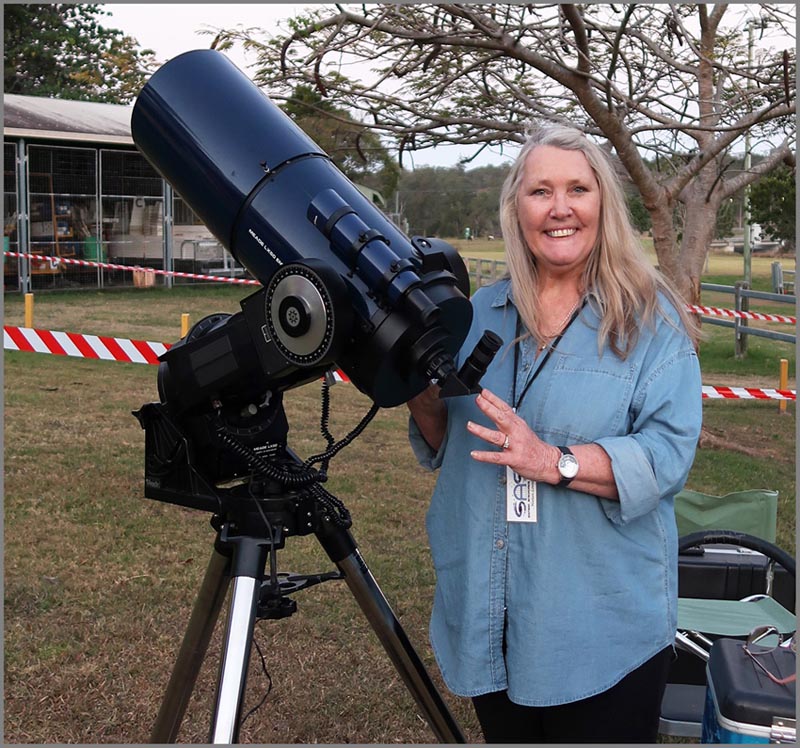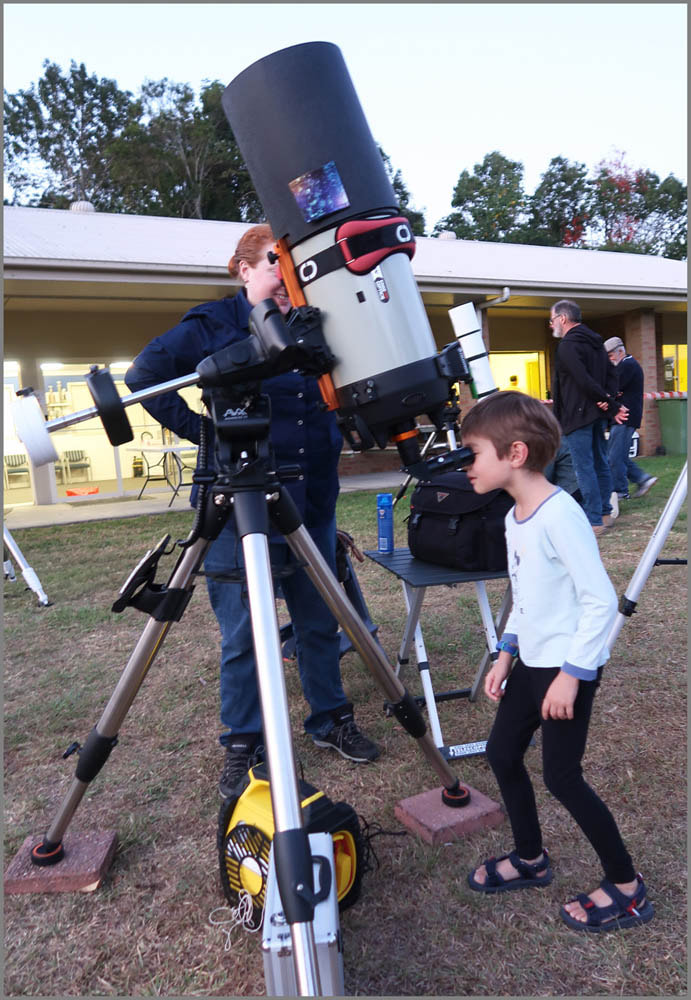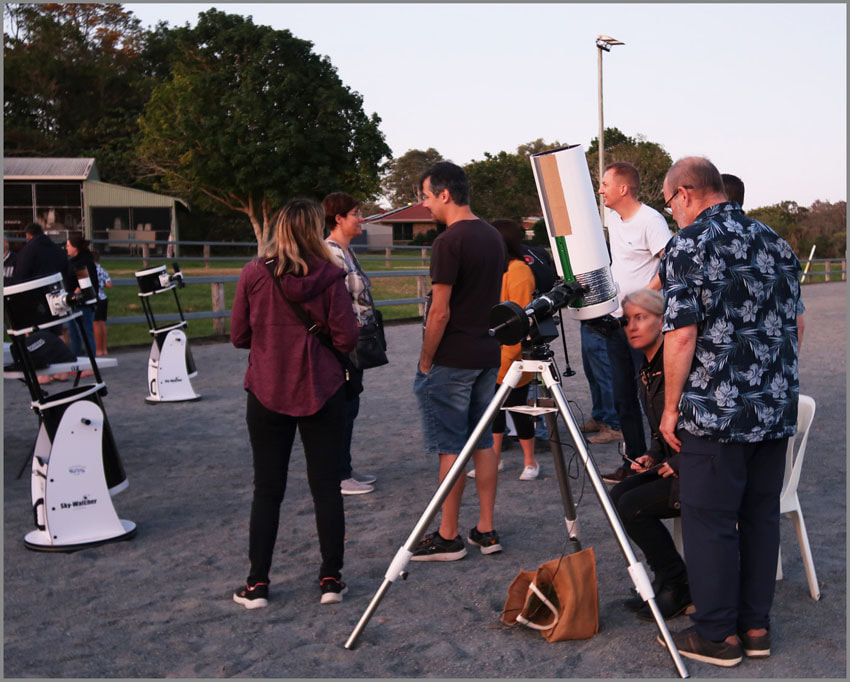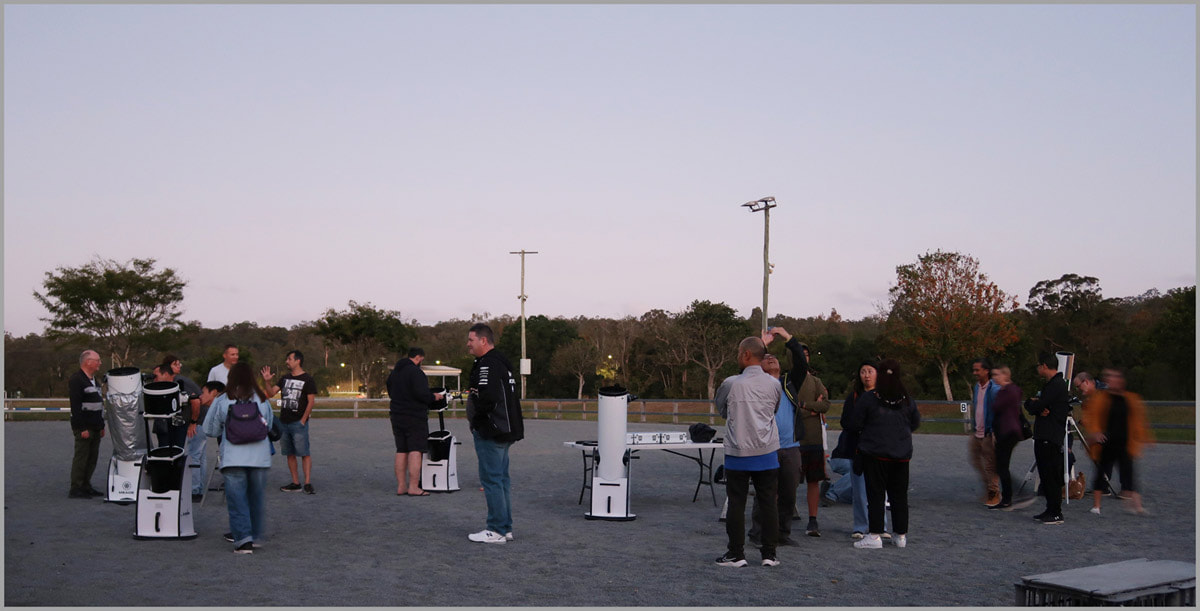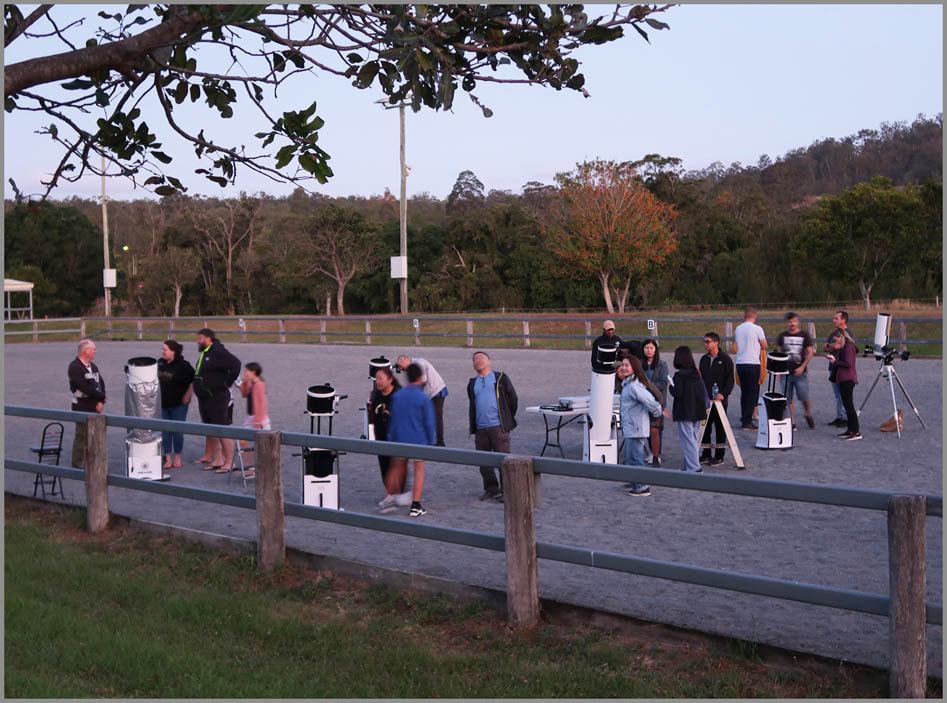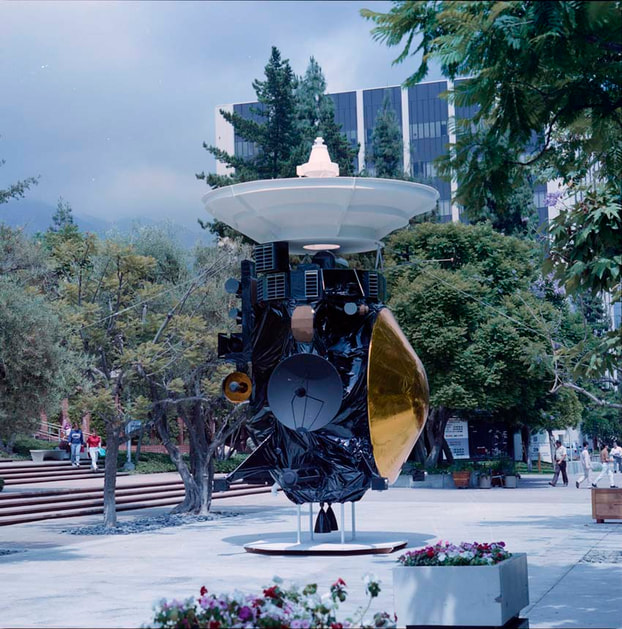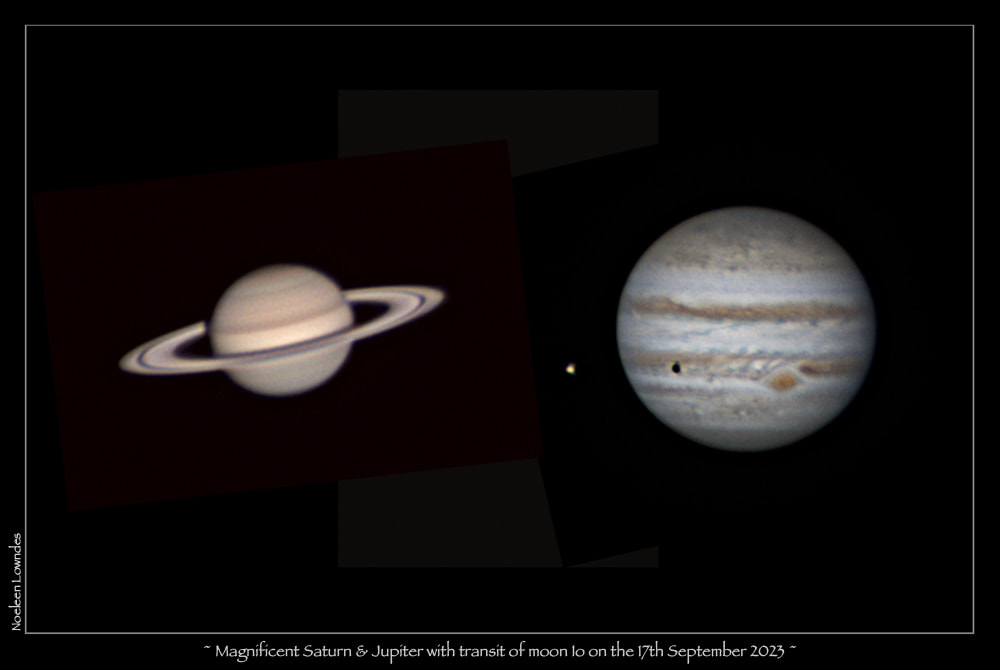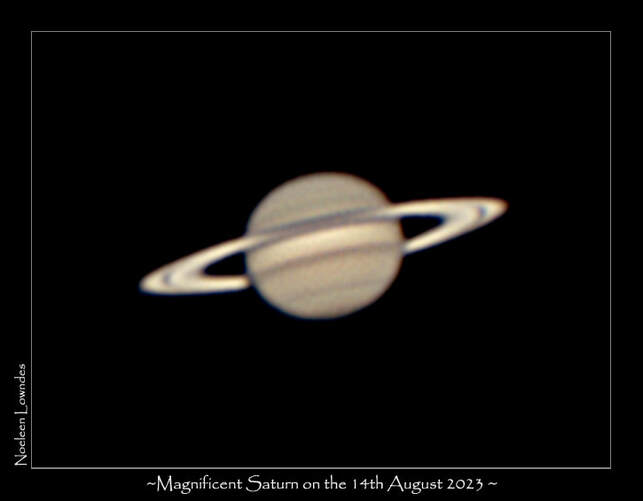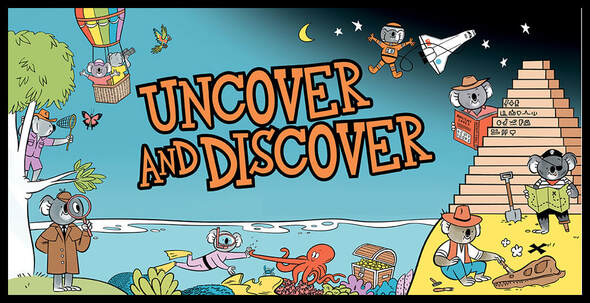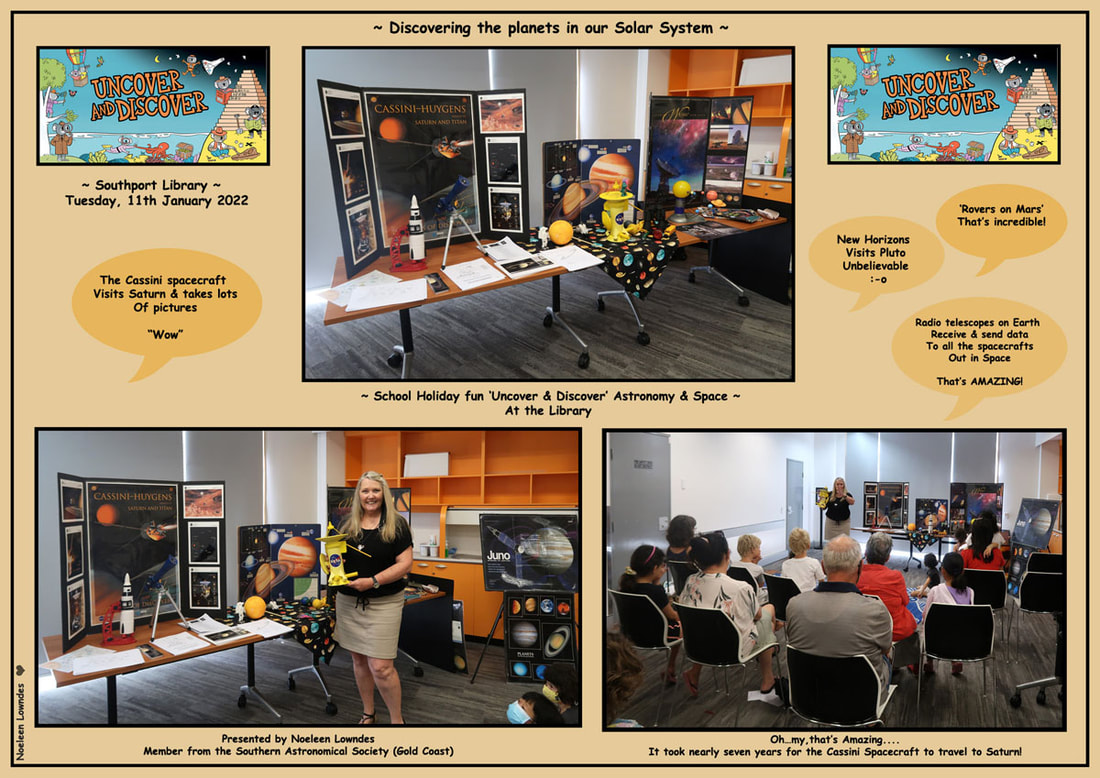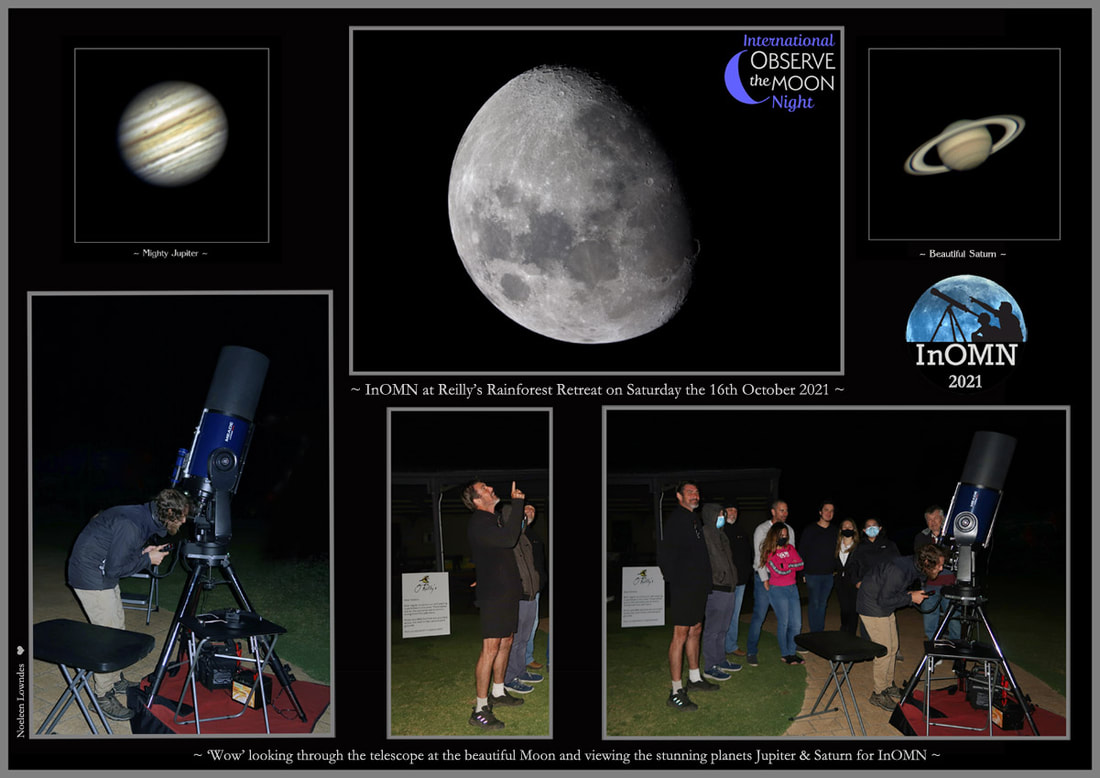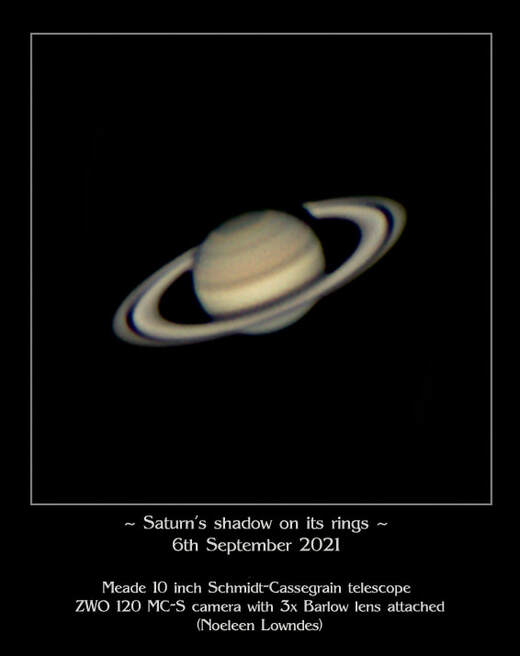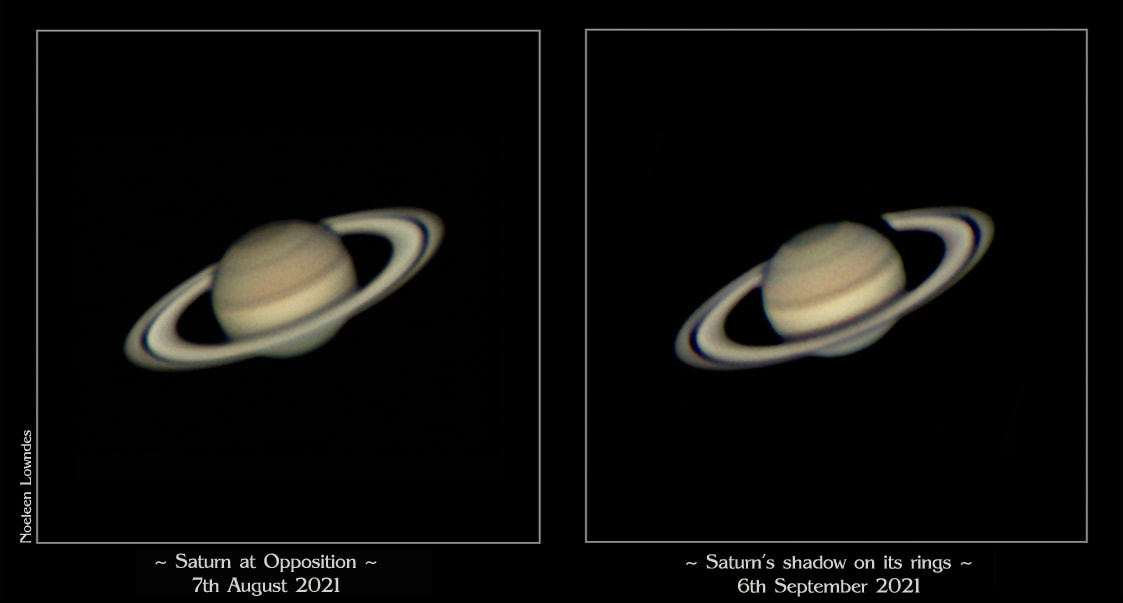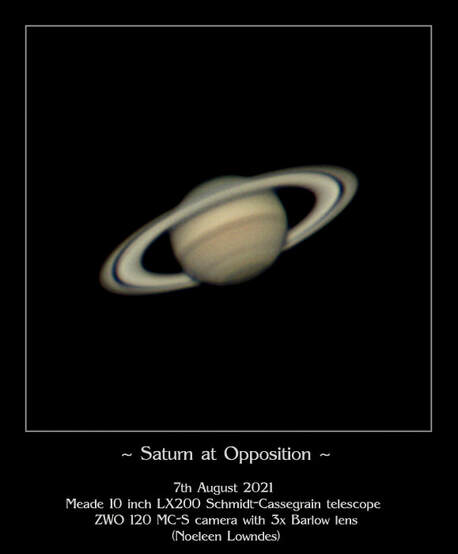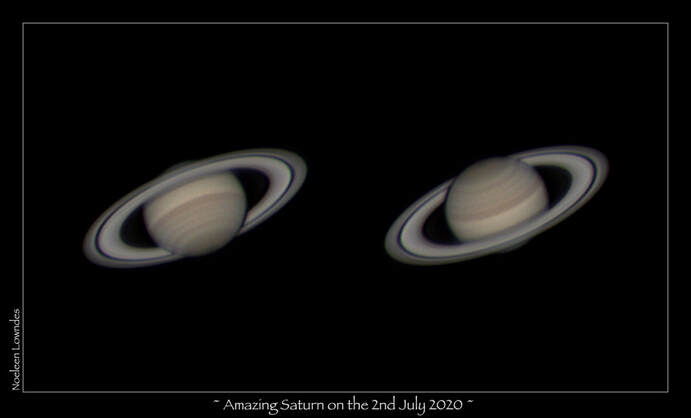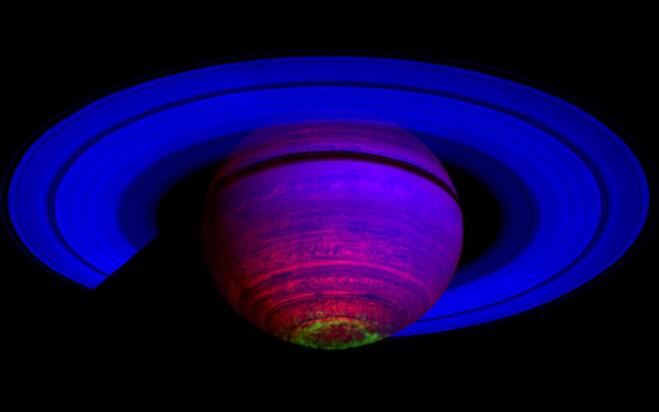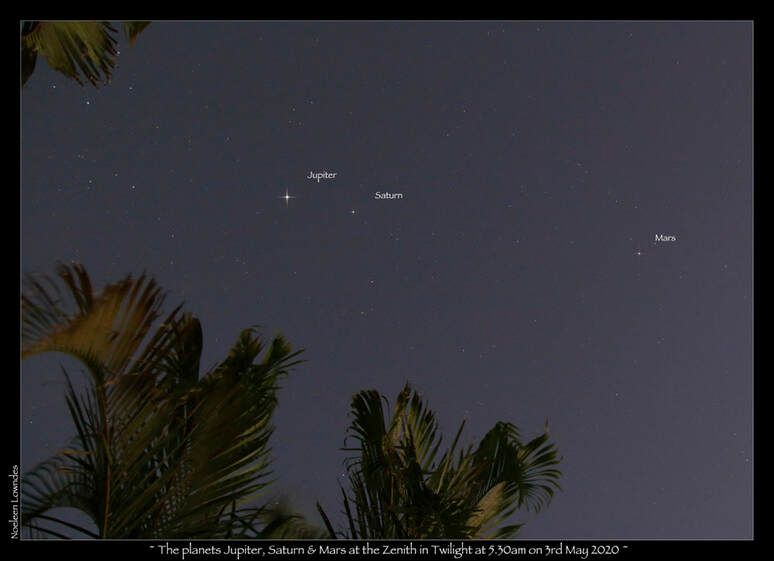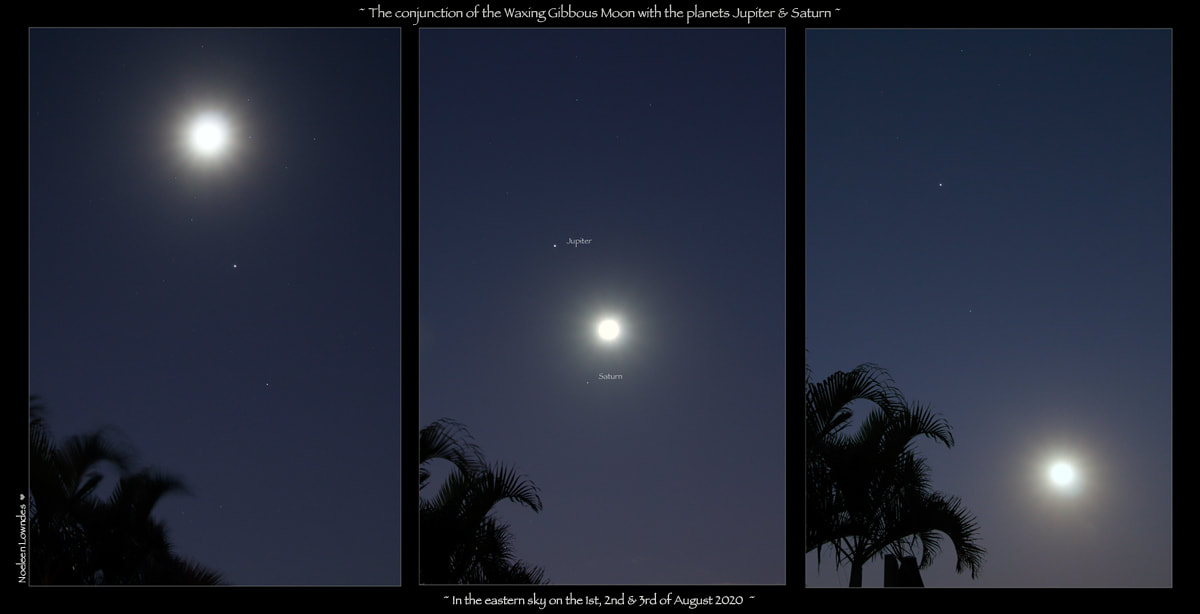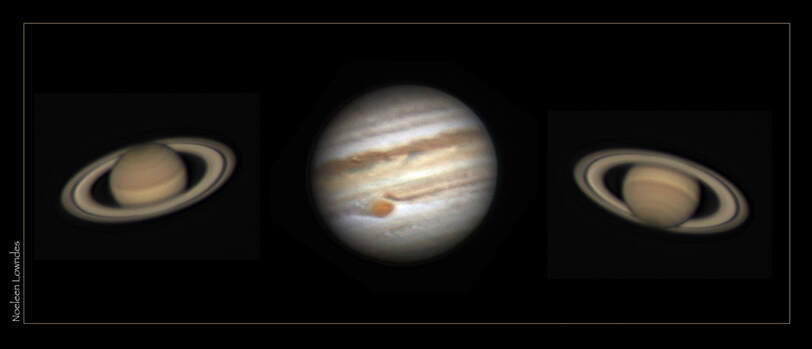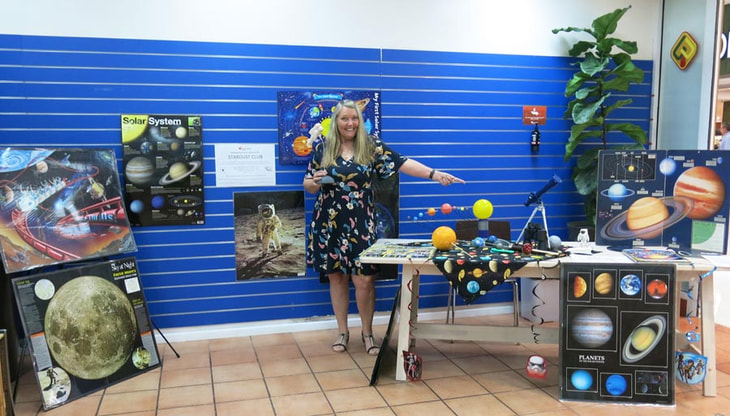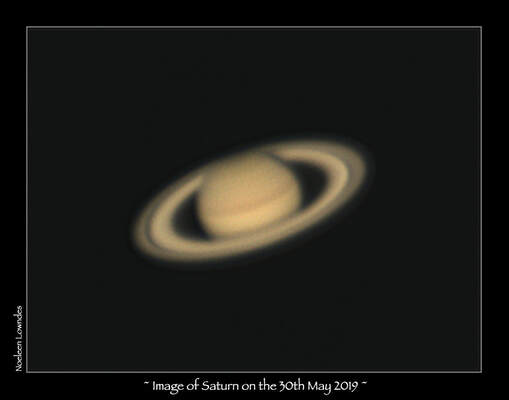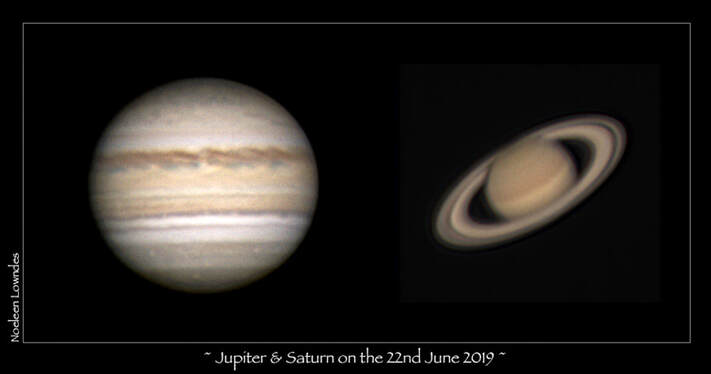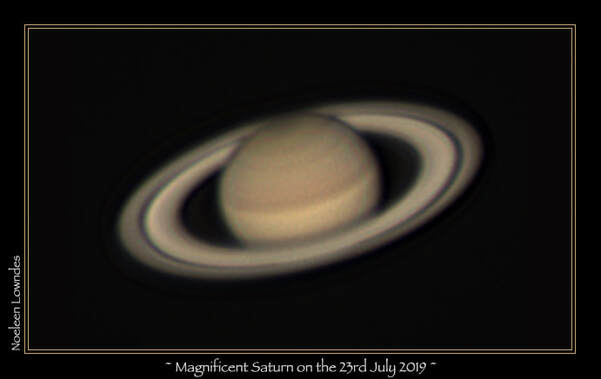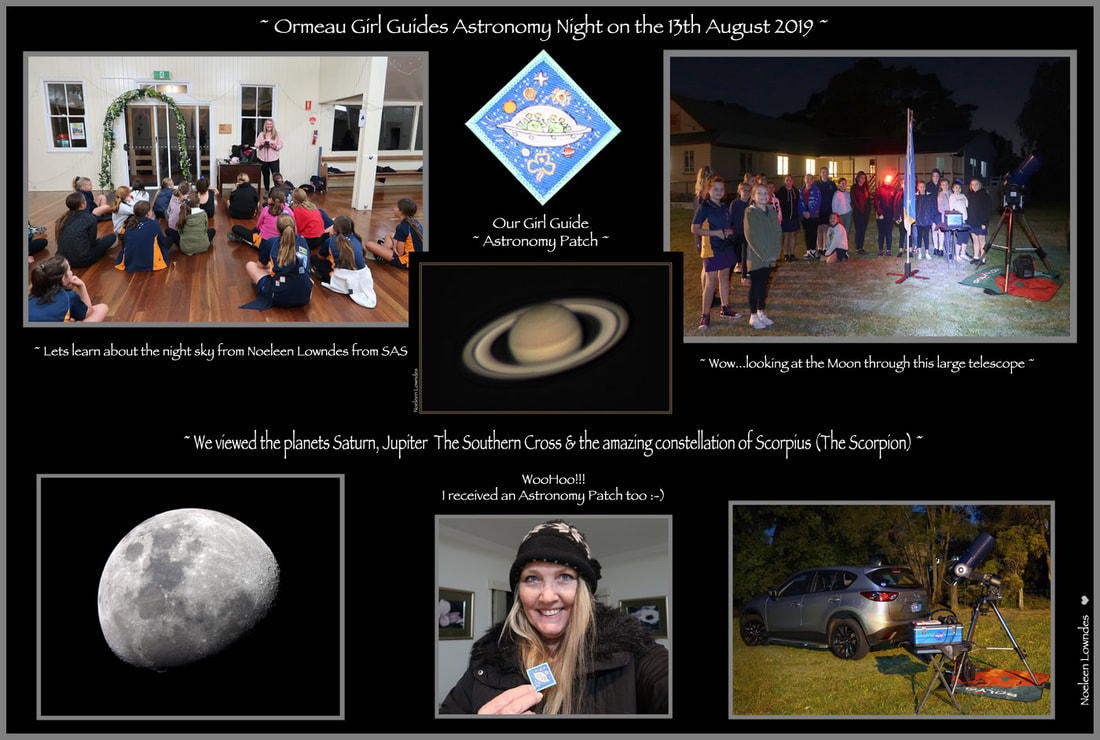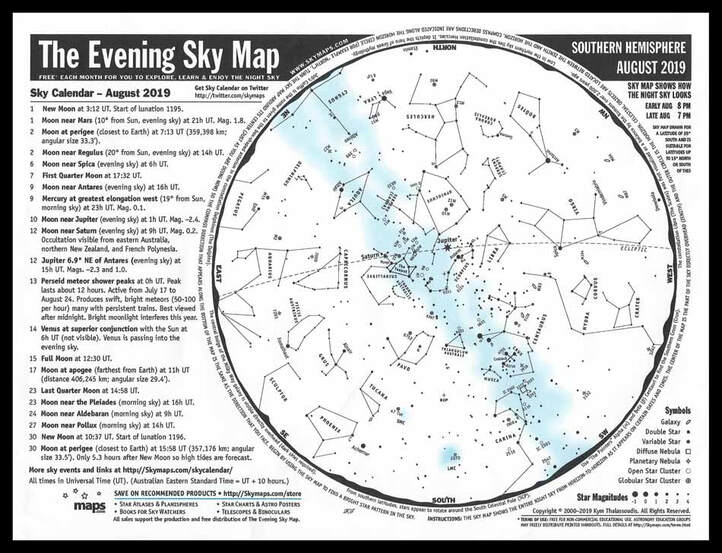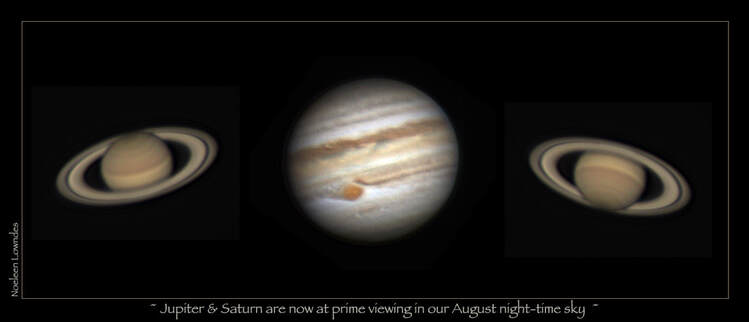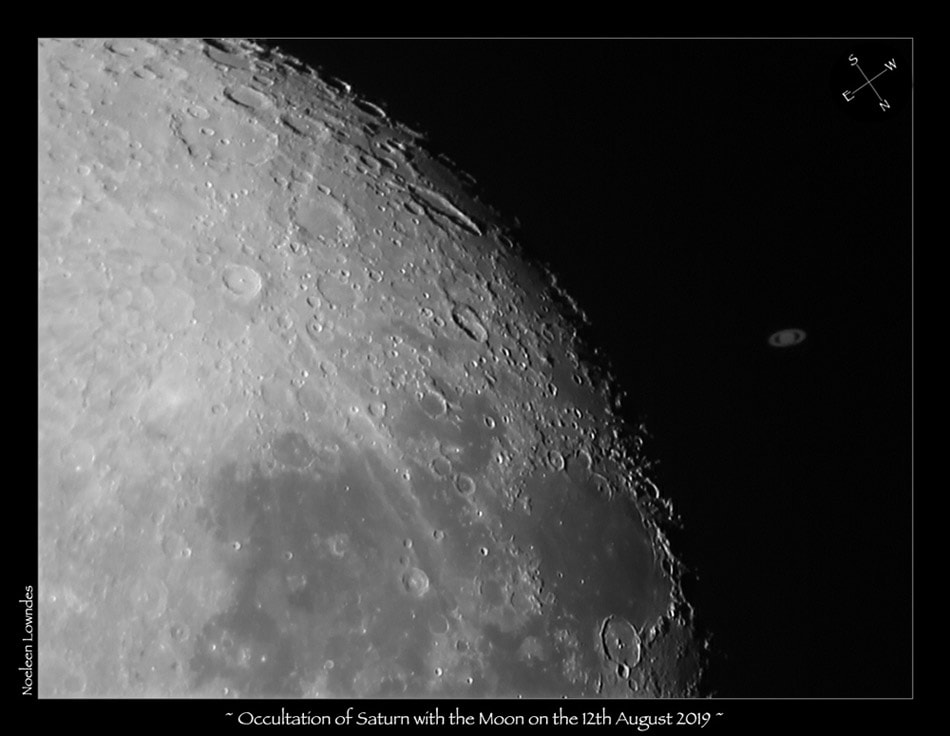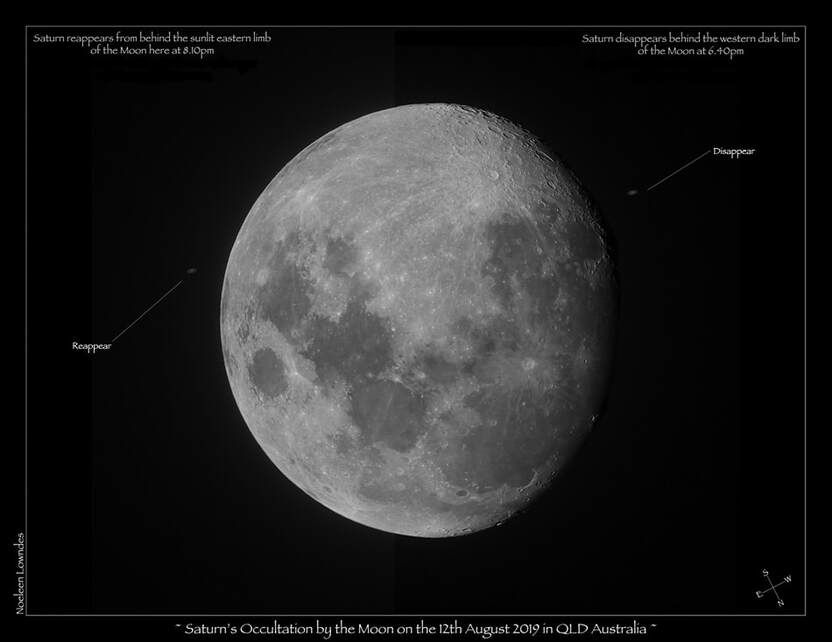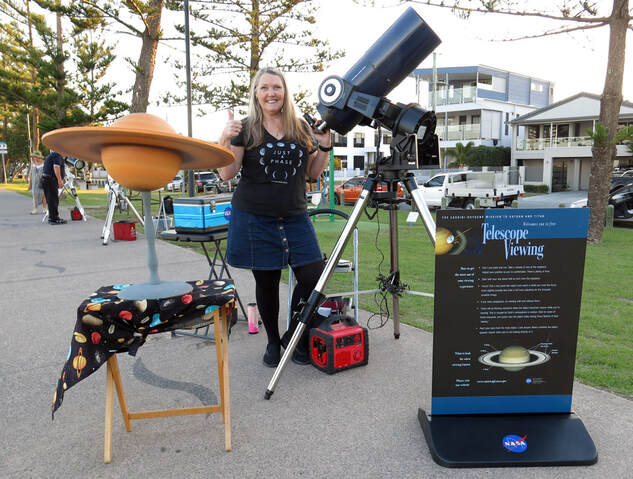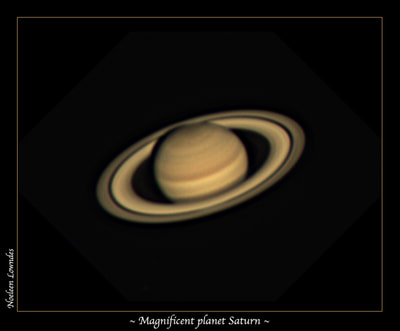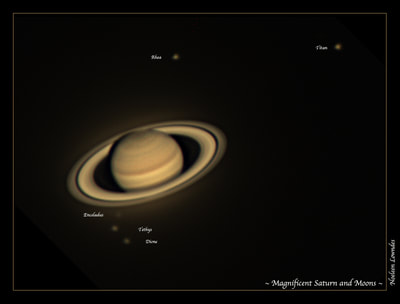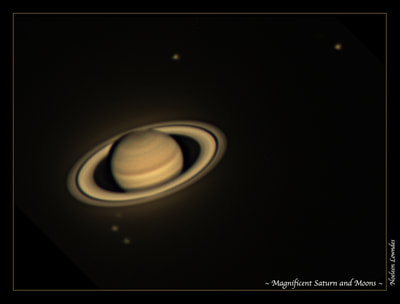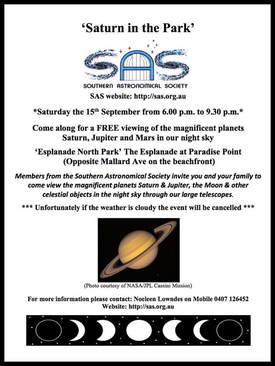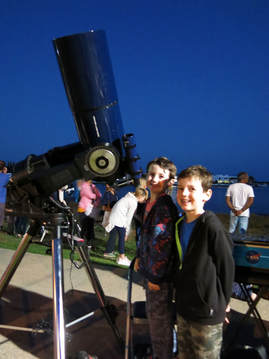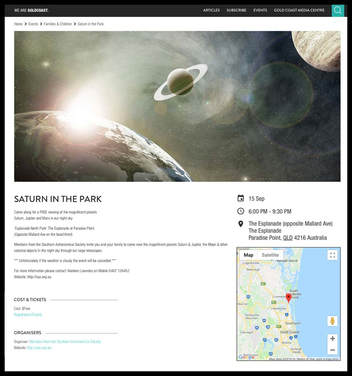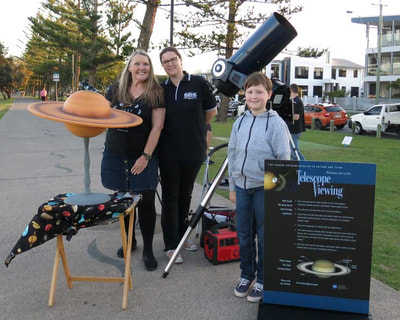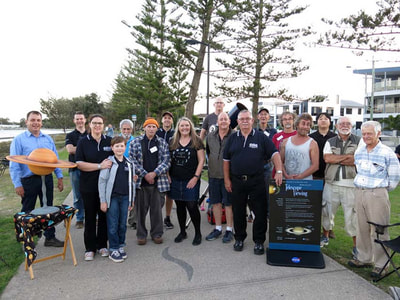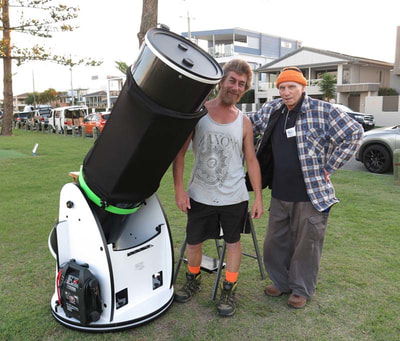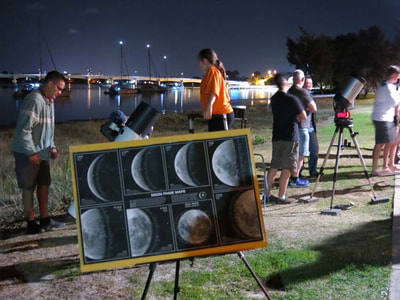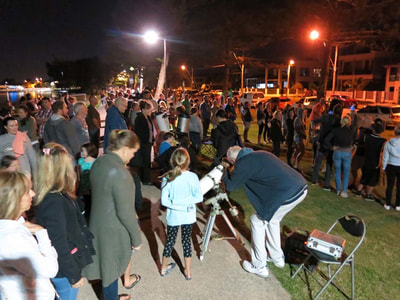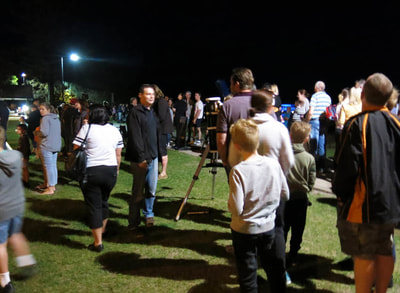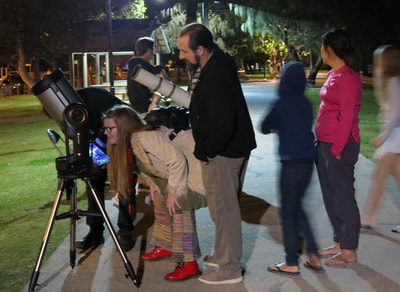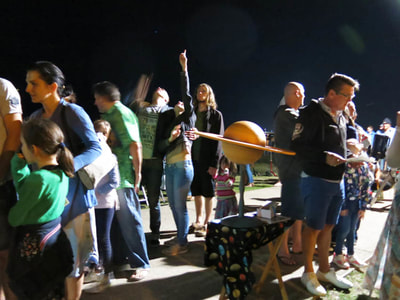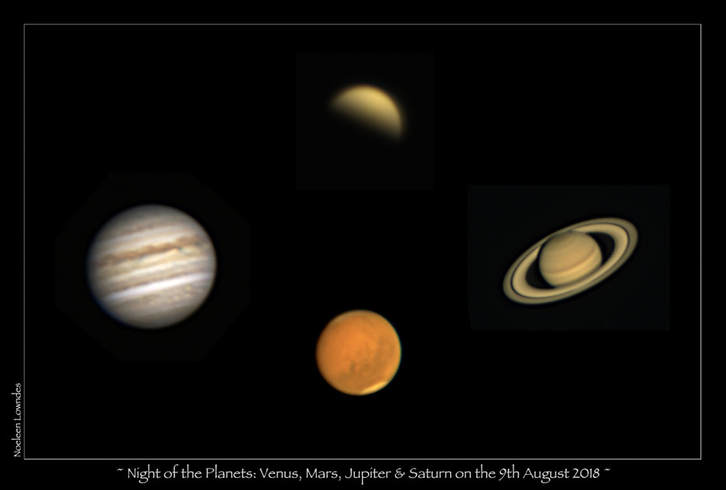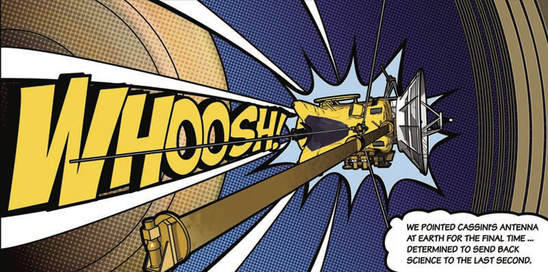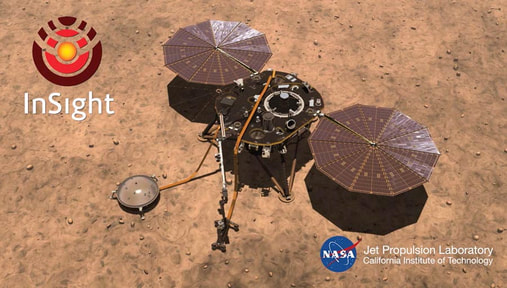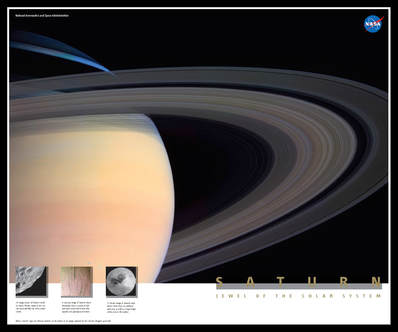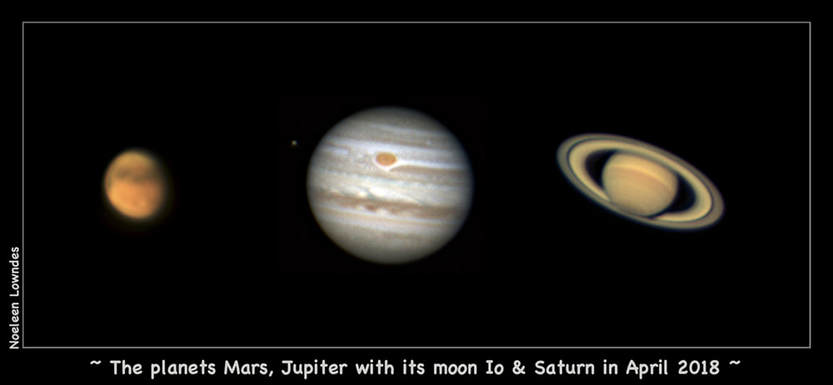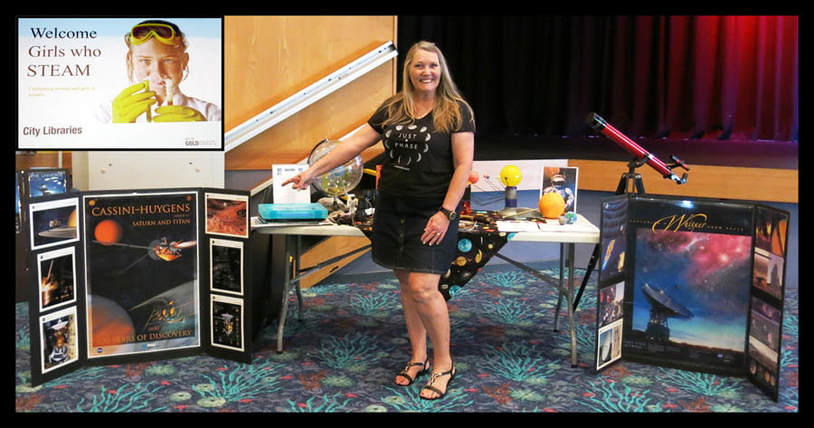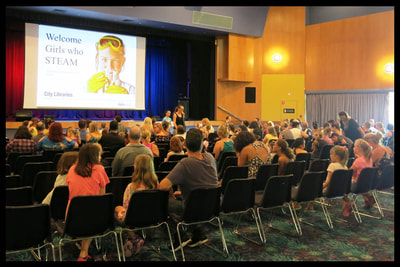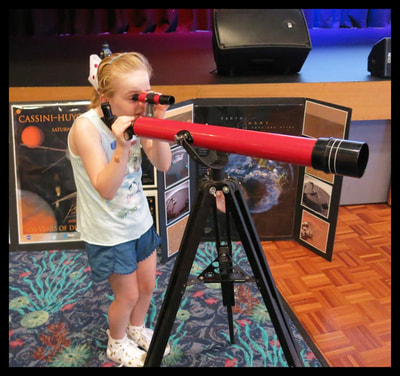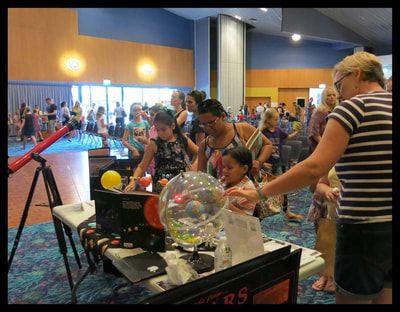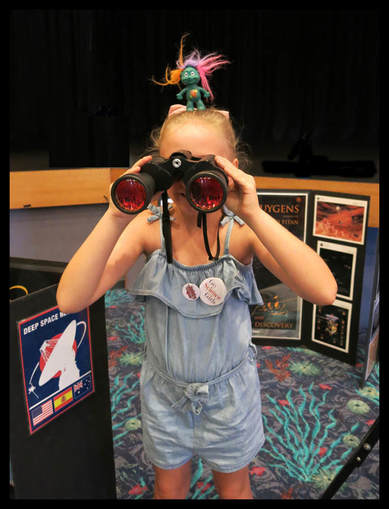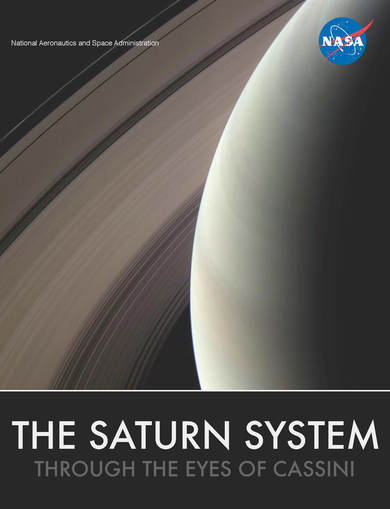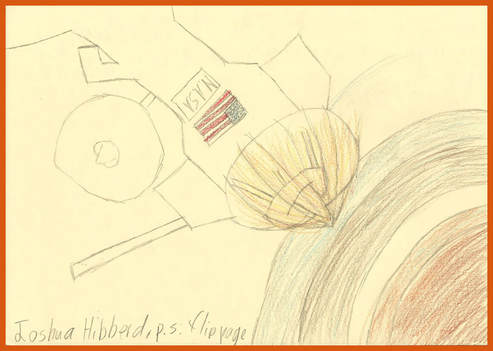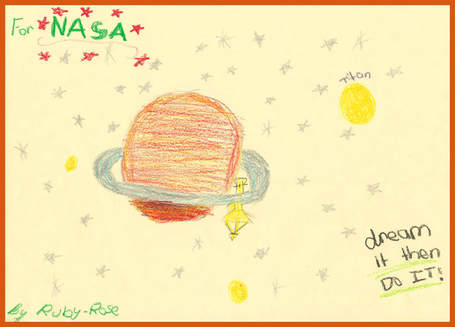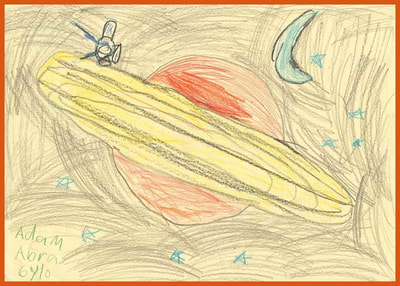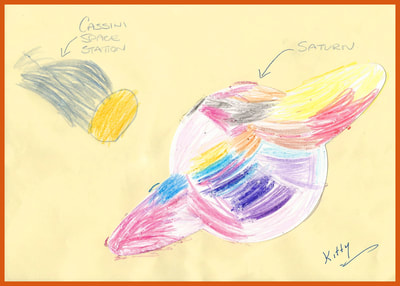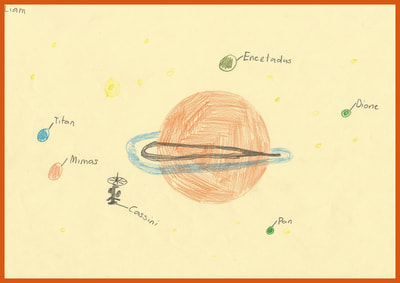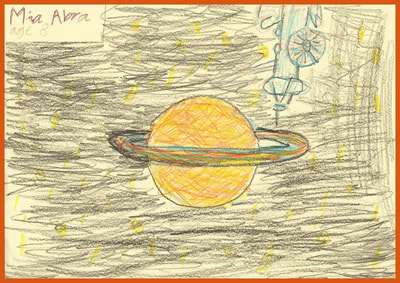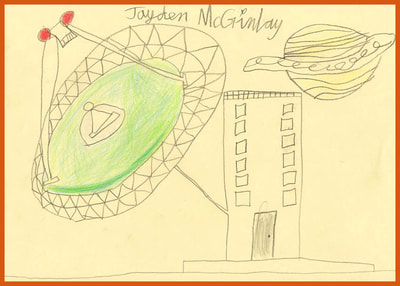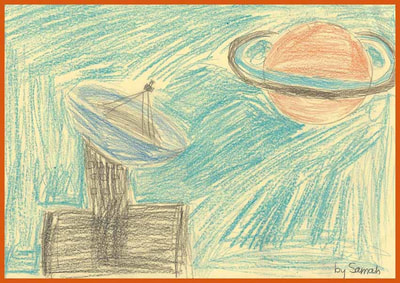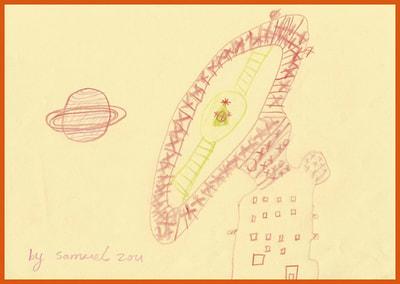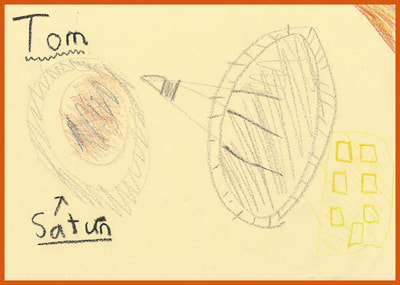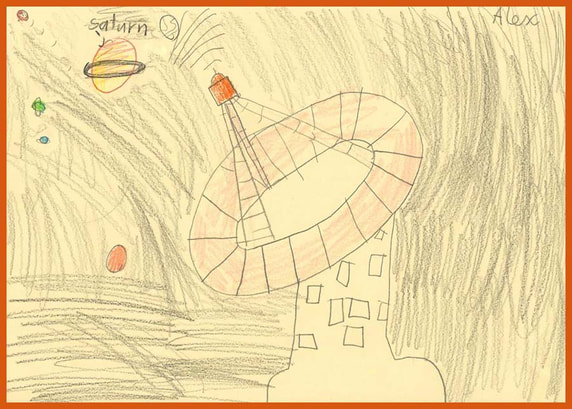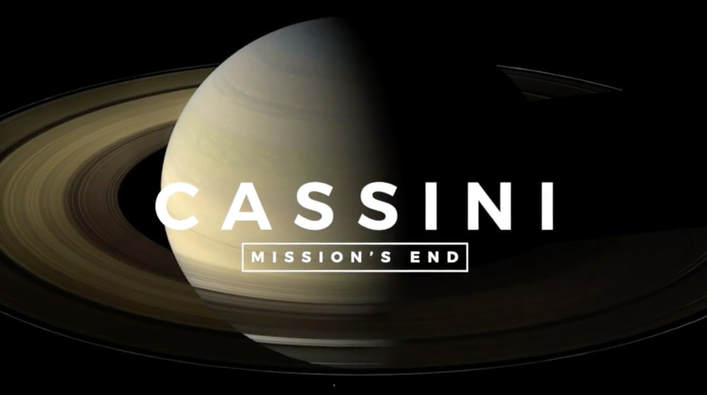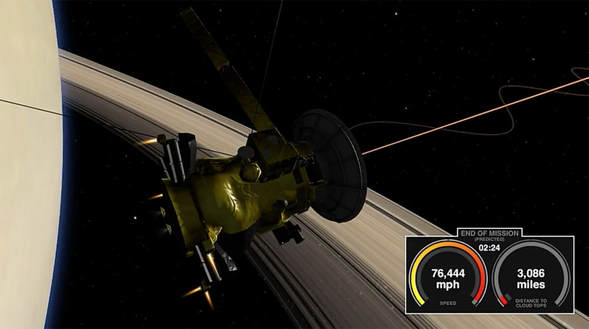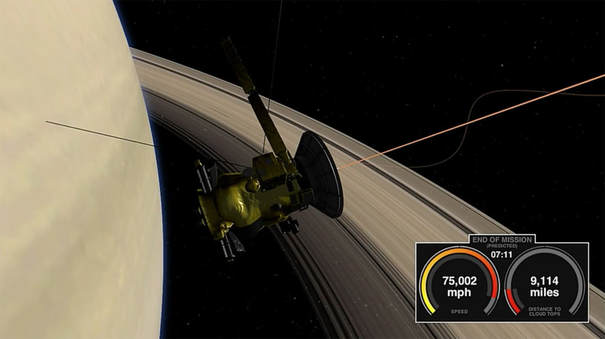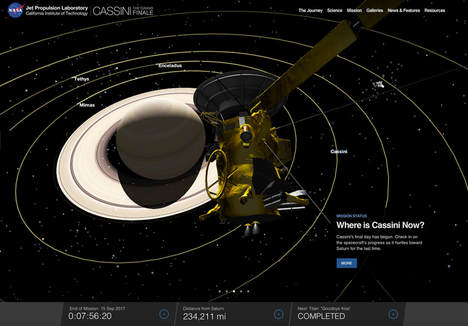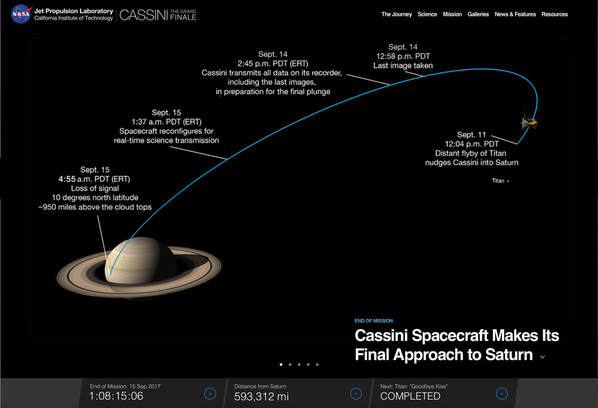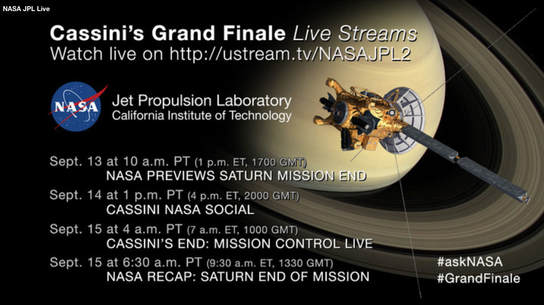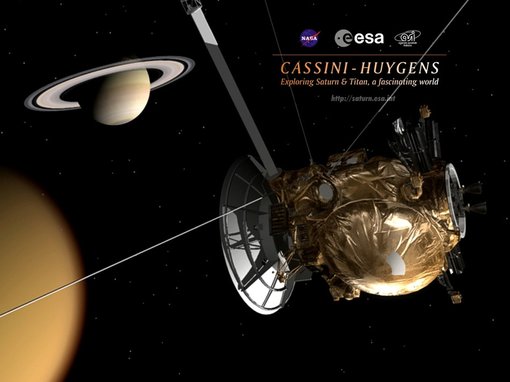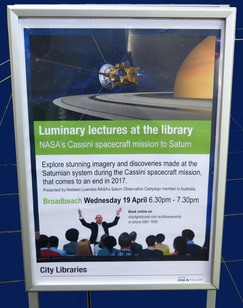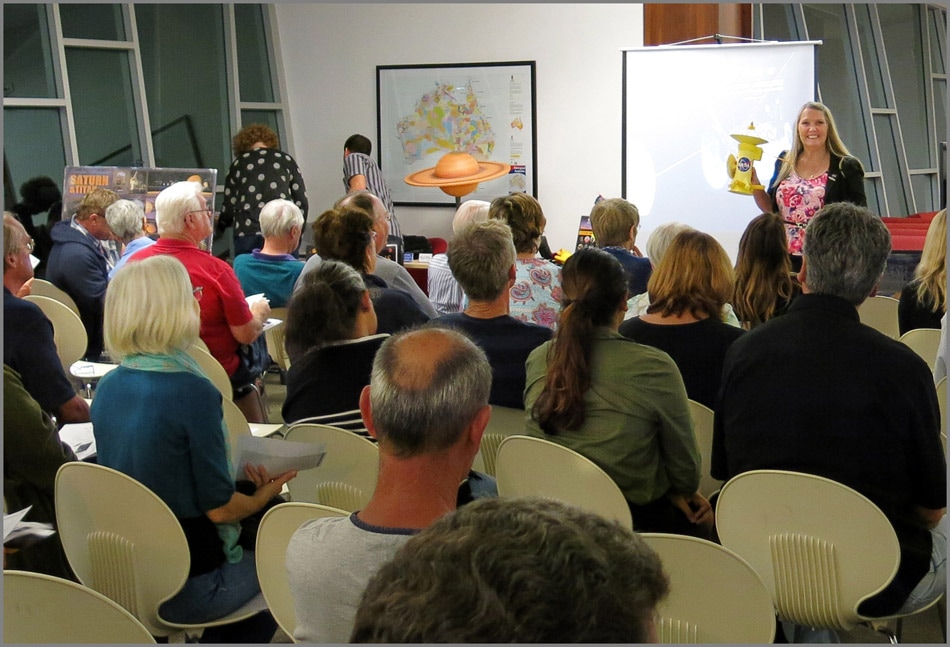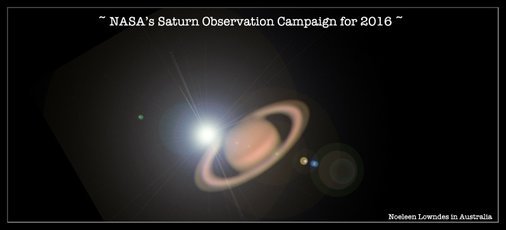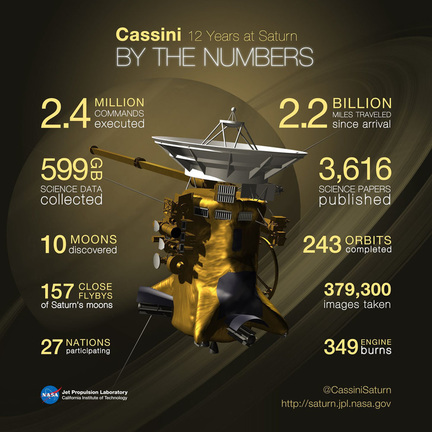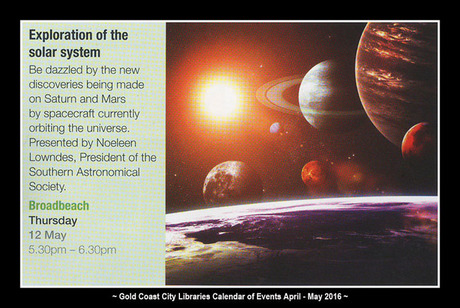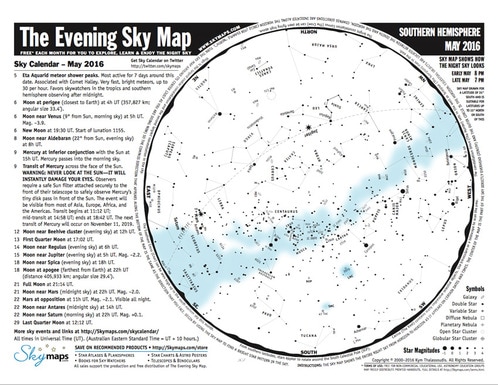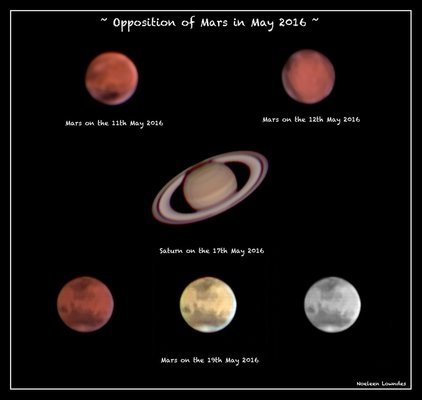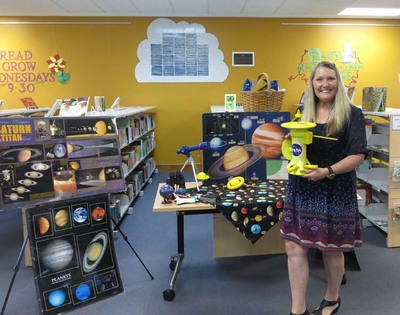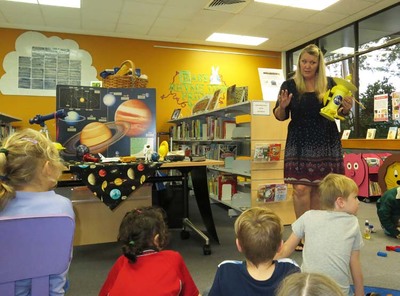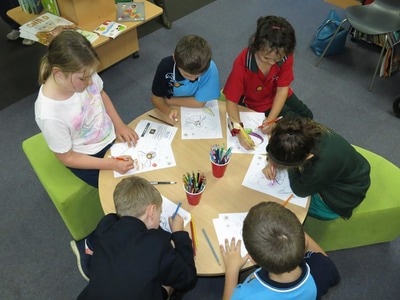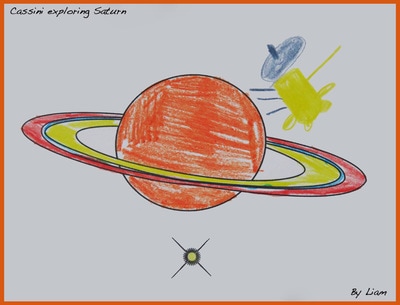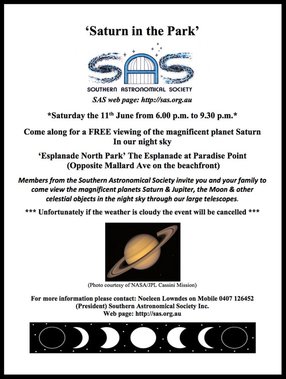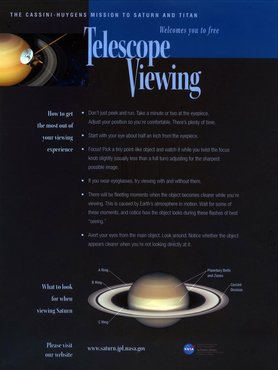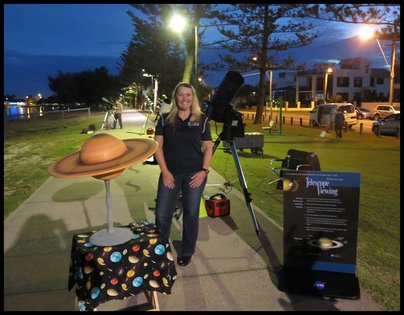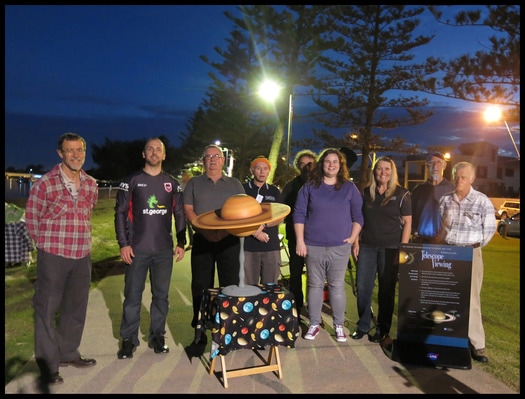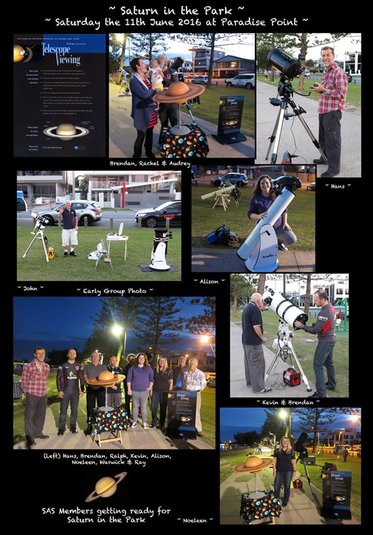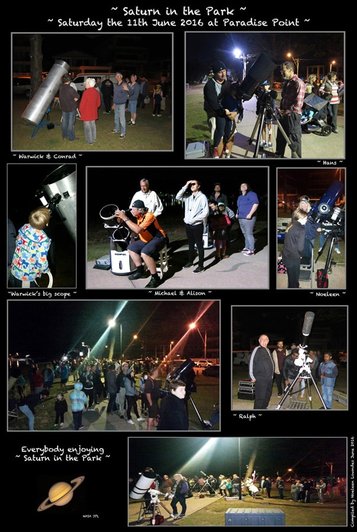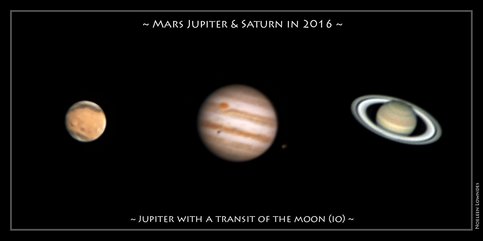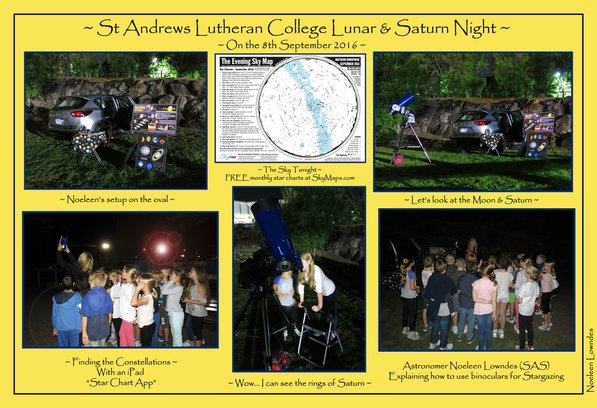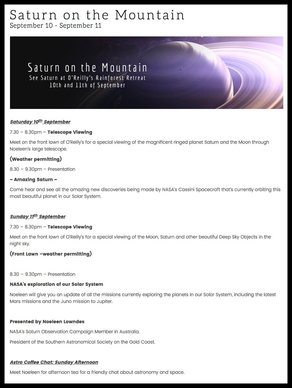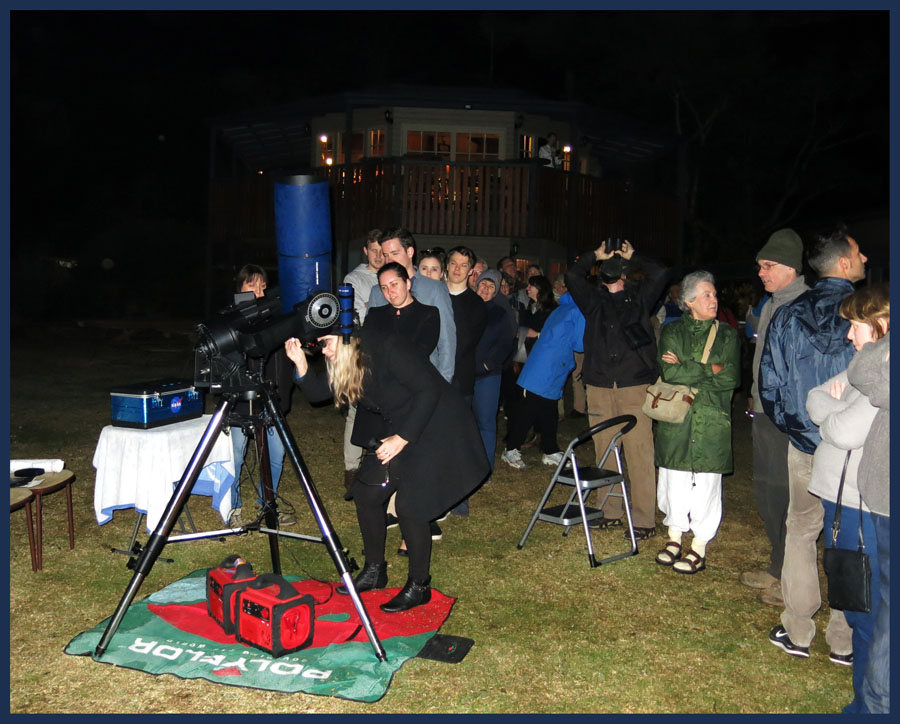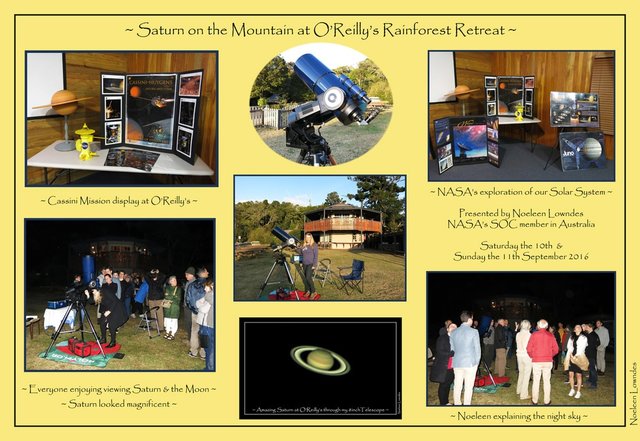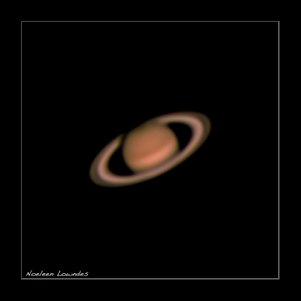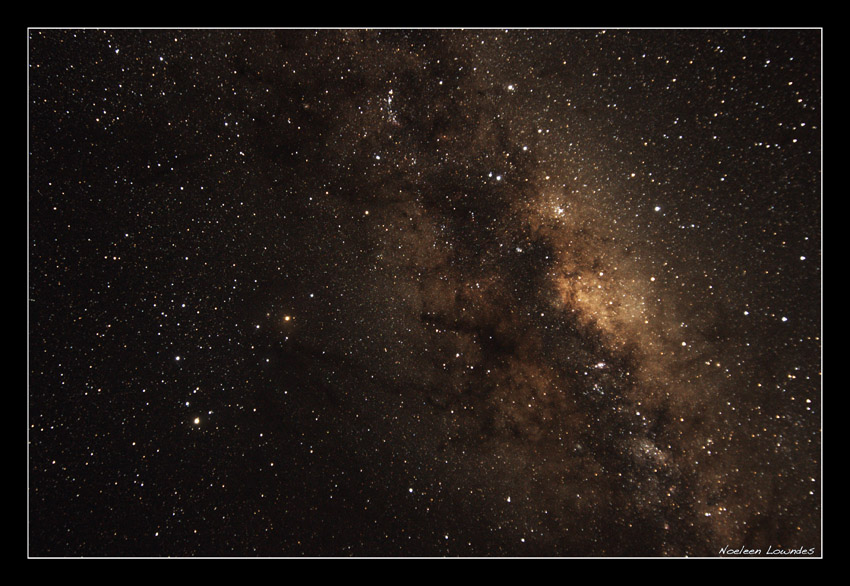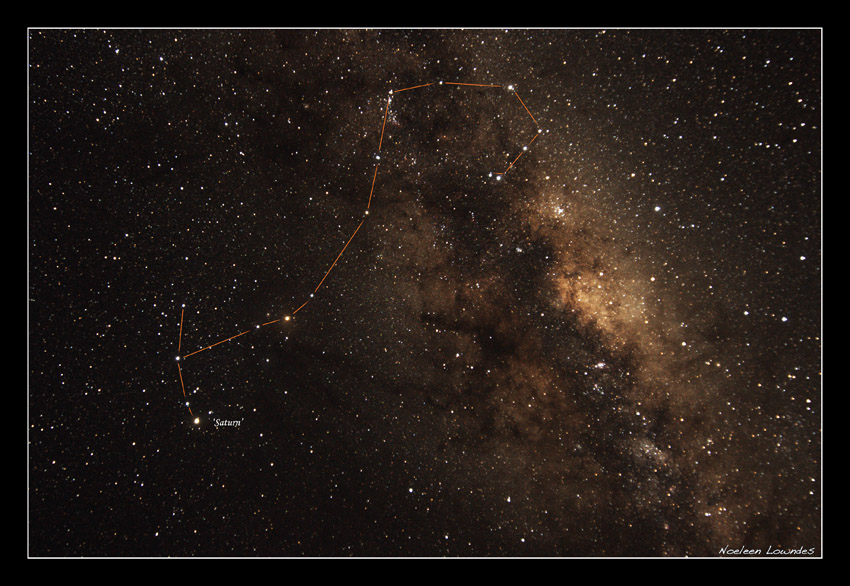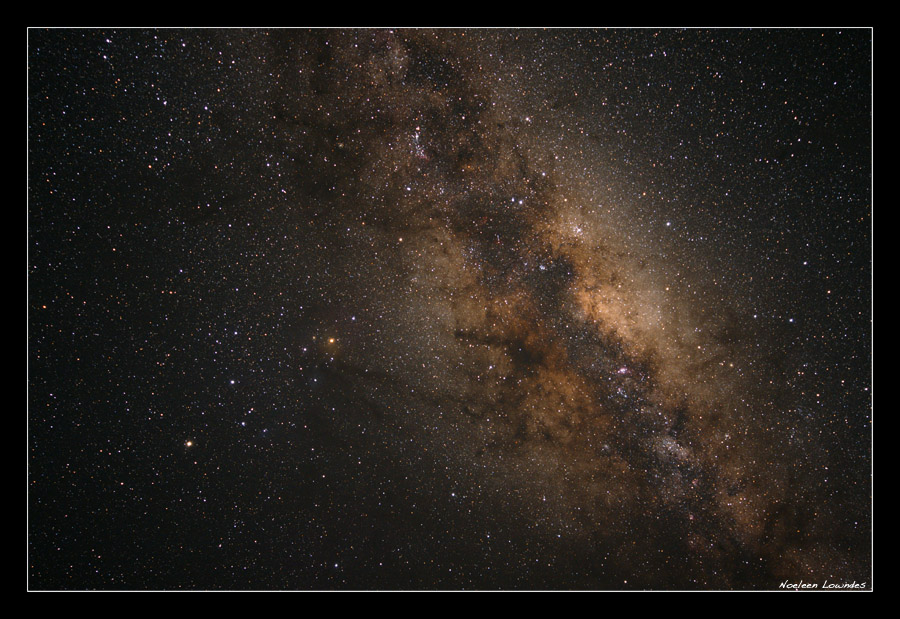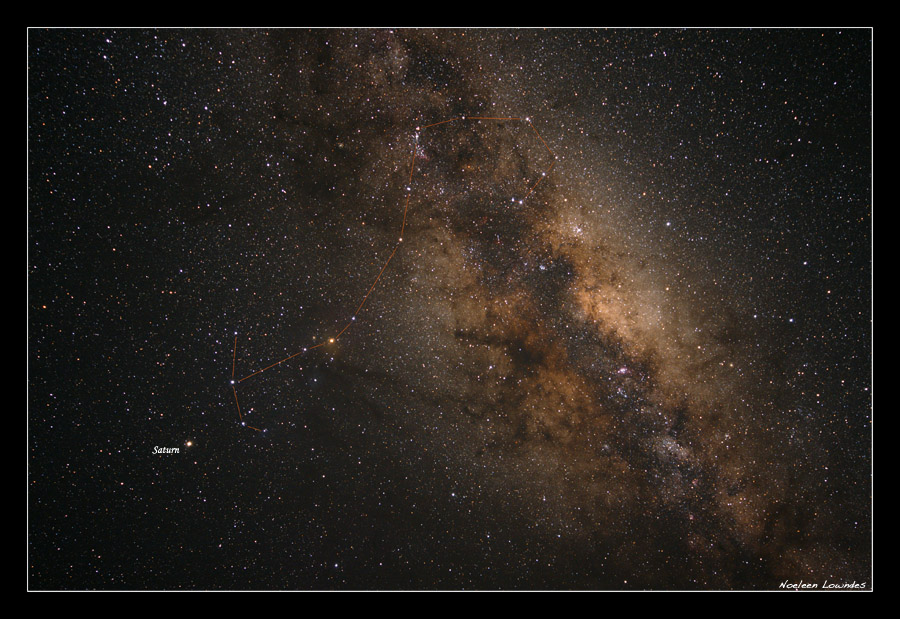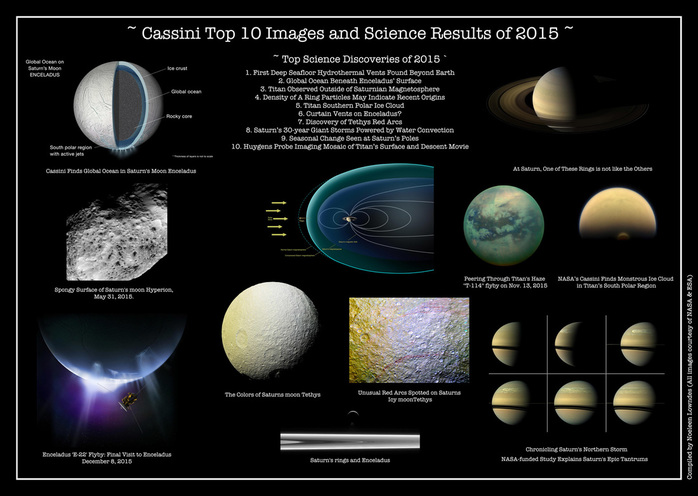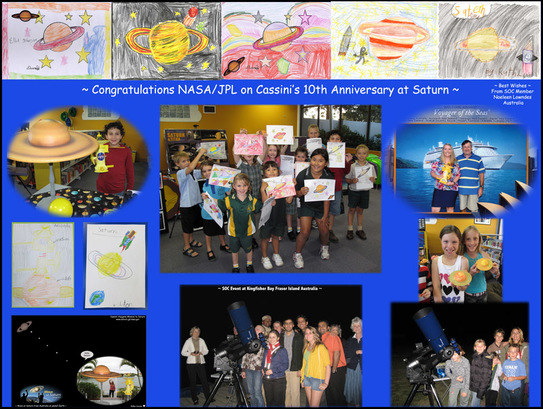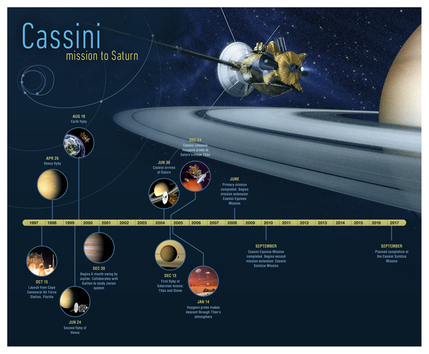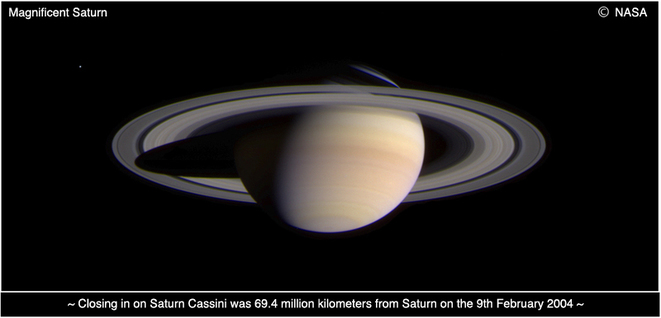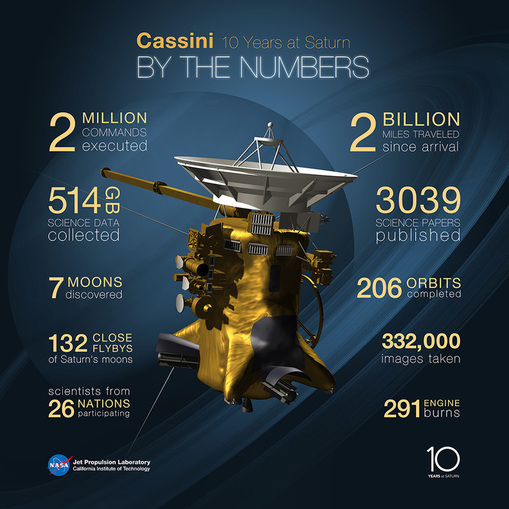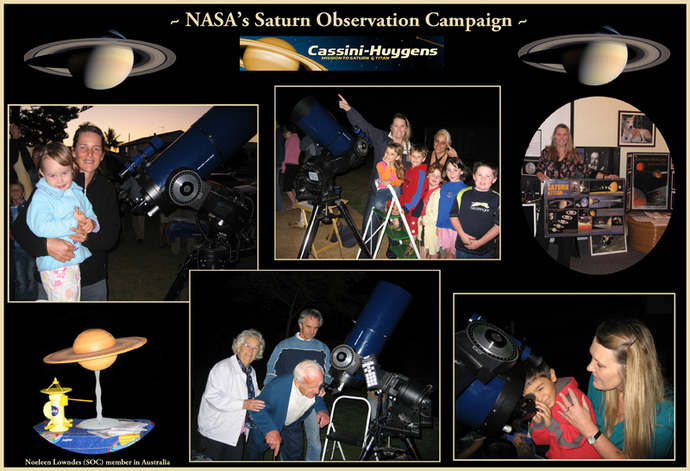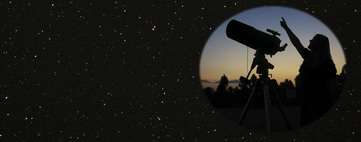~ Noeleen Lowndes NASA/JPL SOC member In Australia ~
~ 2002 to 2024 ~
For the Cassini-Huygens Mission to Saturn
https://solarsystem.nasa.gov/missions/cassini/overview/
For me, this montage of images is what NASA's Saturn Observation Campaign has been all about…
Sharing the delight of the night sky and the awesome ringed planet 'Saturn' with everyone :-)
Sharing the delight of the night sky and the awesome ringed planet 'Saturn' with everyone :-)
~ NASA's Saturn Observation Campaign for 2024 ~
~ The next thrilling mission to Saturn called ‘Dragonfly to Titan’
New launch date July 2028 and arriving at Saturn in 2034
Dragonfly is a NASA mission to explore the chemistry and habitability of Saturn's largest moon, Titan.
The spacecraft is an eight-bladed drone-like craft called a quadcopter that will make short flights around the surface. Titan's atmosphere is similar to Earth's when life arose here 3.5 billion years ago.
To keep up to date with the incredible mission to explore Titan please go to:
https://science.nasa.gov/mission/dragonfly
https://dragonfly.jhuapl.edu
https://science.nasa.gov/saturn/moons/titan/
The spacecraft is an eight-bladed drone-like craft called a quadcopter that will make short flights around the surface. Titan's atmosphere is similar to Earth's when life arose here 3.5 billion years ago.
To keep up to date with the incredible mission to explore Titan please go to:
https://science.nasa.gov/mission/dragonfly
https://dragonfly.jhuapl.edu
https://science.nasa.gov/saturn/moons/titan/
Dragonfly: Mission to Titan, ft. Dr. Melissa Trainer
SETI Institute
We asked Dragonfly Deputy PI and DRaMS instrument lead Dr. Melissa Trainer three questions about the future Dragonfly mission to Saturn's moon, Titan, including why Titan.
~ NASA's Saturn Observation Campaign for 2023 ~
~ Magnificent Saturn through my Meade 10inch LX200 telescope in 2023 ~
NASA The Science of Dragonfly
Publish Date October 31, 2023
Dragonfly is a NASA mission to explore the chemistry and habitability of Saturn’s largest moon, Titan. The fourth mission in the New Frontiers line, Dragonfly will send an autonomously-operated rotorcraft to visit dozens of sites on Titan, investigating the moon’s surface and shallow subsurface for organic molecules and possible biosignatures.
To carry out its mission, Dragonfly is equipped with a neutron spectrometer, a drill system, and a mass spectrometer, allowing scientists to make a detailed survey of Titan’s chemical makeup. Dragonfly is scheduled to launch in 2026 and arrive at Titan in 2034.
https://science.nasa.gov/mission/dragonfly
https://dragonfly.jhuapl.edu
Universal Production Music: "Clediss" by Thomas Stempfle and Tom Sue, "Downloading Landscapes"
by Andrew Michael Britton and David Stephen Goldsmith
Credit: NASA’s Goddard Space Flight Center/Johns Hopkins APL
https://plus.nasa.gov/video/the-science-of-dragonfly/
To carry out its mission, Dragonfly is equipped with a neutron spectrometer, a drill system, and a mass spectrometer, allowing scientists to make a detailed survey of Titan’s chemical makeup. Dragonfly is scheduled to launch in 2026 and arrive at Titan in 2034.
https://science.nasa.gov/mission/dragonfly
https://dragonfly.jhuapl.edu
Universal Production Music: "Clediss" by Thomas Stempfle and Tom Sue, "Downloading Landscapes"
by Andrew Michael Britton and David Stephen Goldsmith
Credit: NASA’s Goddard Space Flight Center/Johns Hopkins APL
https://plus.nasa.gov/video/the-science-of-dragonfly/
~ International Observe the Moon Night (InOMN) 2023 ~
With a viewing of the beautiful ringed planet Saturn
The Southern Astronomical Society
Is proud to host InOMN on Saturday 21st October 2023 from 6pm.
Come along to our clubhouse and enjoy a wonderful evening looking at our amazing Moon and other celestial objects
including the magnificent planet Saturn.
I will have my telescope all set up for you to look through, looking forward to seeing all the Stardust families on the night, Noeleen :-)
(Please see flyer below for more details)
https://www.sas.org.au
Is proud to host InOMN on Saturday 21st October 2023 from 6pm.
Come along to our clubhouse and enjoy a wonderful evening looking at our amazing Moon and other celestial objects
including the magnificent planet Saturn.
I will have my telescope all set up for you to look through, looking forward to seeing all the Stardust families on the night, Noeleen :-)
(Please see flyer below for more details)
https://www.sas.org.au
~ Some Images from the InOMN Event 21st October 2023 ~
Slice of History - Happy 25th Anniversary, Cassini!
(NASA/JPL-Caltech)
Oct. 5, 2022 NASA’s Jet Propulsion Laboratory
https://www.jpl.nasa.gov/missions/cassini-huygens
https://science.nasa.gov/mission/cassini/
https://science.nasa.gov/saturn/
15 October marks the 25th anniversary of the Cassini launch! A joint endeavor of NASA, the European Space Agency (ESA), and the Italian Space Agency, Cassini spacecraft was a keystone of exploration of the Saturnian system and the properties of gaseous planets in our solar system.
Aiming for Saturn and its moons, Cassini contributed to studies of Jupiter for six months in 2000 before reaching its destination in 2004, and starting a string of lunar flybys.
This same year, it released the Huygens probe on Titan to conduct a study of its atmosphere and surface composition, revealing it to be one of the most Earth-like worlds we had yet encountered.
Cassini performed multiple extended missions, allowing us to observe a complete seasonal period for Saturn and its moons, as well as completing the first successful dive through the narrow gap between its rings and descending into the planet’s atmosphere.
Cassini began its final entry into Saturn’s atmosphere on 2017-09-15, dictating its end of mission. Cassini was unique in that it was the first mission to orbit Saturn, to land in the outer solar system, and to sample an extraterrestrial ocean, making it extremely special to JPL and our mission, and so its model was proudly displayed on the Mall, as photographed here on 1992-07-16. CL#21-5882
The content presented here should be viewed in the context of the time period. Our intent is to present the history of JPL in a factual manner that uses primary resources and historical context. We recognize that some information or images do not reflect the current values, policies, and mission of JPL.
https://www.jpl.nasa.gov/images/slice-of-history-happy-25th-anniversary-cassini
https://www.jpl.nasa.gov/missions/cassini-huygens
https://science.nasa.gov/mission/cassini/
https://science.nasa.gov/saturn/
15 October marks the 25th anniversary of the Cassini launch! A joint endeavor of NASA, the European Space Agency (ESA), and the Italian Space Agency, Cassini spacecraft was a keystone of exploration of the Saturnian system and the properties of gaseous planets in our solar system.
Aiming for Saturn and its moons, Cassini contributed to studies of Jupiter for six months in 2000 before reaching its destination in 2004, and starting a string of lunar flybys.
This same year, it released the Huygens probe on Titan to conduct a study of its atmosphere and surface composition, revealing it to be one of the most Earth-like worlds we had yet encountered.
Cassini performed multiple extended missions, allowing us to observe a complete seasonal period for Saturn and its moons, as well as completing the first successful dive through the narrow gap between its rings and descending into the planet’s atmosphere.
Cassini began its final entry into Saturn’s atmosphere on 2017-09-15, dictating its end of mission. Cassini was unique in that it was the first mission to orbit Saturn, to land in the outer solar system, and to sample an extraterrestrial ocean, making it extremely special to JPL and our mission, and so its model was proudly displayed on the Mall, as photographed here on 1992-07-16. CL#21-5882
The content presented here should be viewed in the context of the time period. Our intent is to present the history of JPL in a factual manner that uses primary resources and historical context. We recognize that some information or images do not reflect the current values, policies, and mission of JPL.
https://www.jpl.nasa.gov/images/slice-of-history-happy-25th-anniversary-cassini
~ Magnificent Saturn & Jupiter on the 17th September 2023 ~
Saturn is now half way up the eastern sky in the evening here in the southern hemisphere, just perfect for viewing in any size telescope.
Saturn’s magnificent rings are now closing up and tilting away from us as viewed from Earth.
Images were taken at my Stardust Observatory with a Meade 10inch LX200 telescope and ZWO ASI 120 mc planetary camera with 3x Barlow lens attached, AVI movies captured and processed in RegiStax6 and PS.
Saturn’s magnificent rings are now closing up and tilting away from us as viewed from Earth.
Images were taken at my Stardust Observatory with a Meade 10inch LX200 telescope and ZWO ASI 120 mc planetary camera with 3x Barlow lens attached, AVI movies captured and processed in RegiStax6 and PS.
~ Magnificent Saturn back in our evening sky on the 14th August 2023 ~
Saturn is now at opposition which means the planet is closest to us in its orbit about the Sun and is best placed for viewing in the night sky, it rises in the east at the same time as the Sun sets so can be seen all night long.
It's now time to get those telescopes out and see the most beautiful planet in our solar system :-)
Saturn’s magnificent rings are now closing up and tilting away from us as viewed from Earth. Images were taken with a Meade 10inch LX200 telescope and ZWO ASI 120 mc planetary camera with 3x Barlow lens attached, AVI movies captured and processed in RegiStax6 and PS.
It's now time to get those telescopes out and see the most beautiful planet in our solar system :-)
Saturn’s magnificent rings are now closing up and tilting away from us as viewed from Earth. Images were taken with a Meade 10inch LX200 telescope and ZWO ASI 120 mc planetary camera with 3x Barlow lens attached, AVI movies captured and processed in RegiStax6 and PS.
Hubble Captures the Start of a New Spoke Season at Saturn
NASA News: 10th Feb 2023
NASA News: 10th Feb 2023
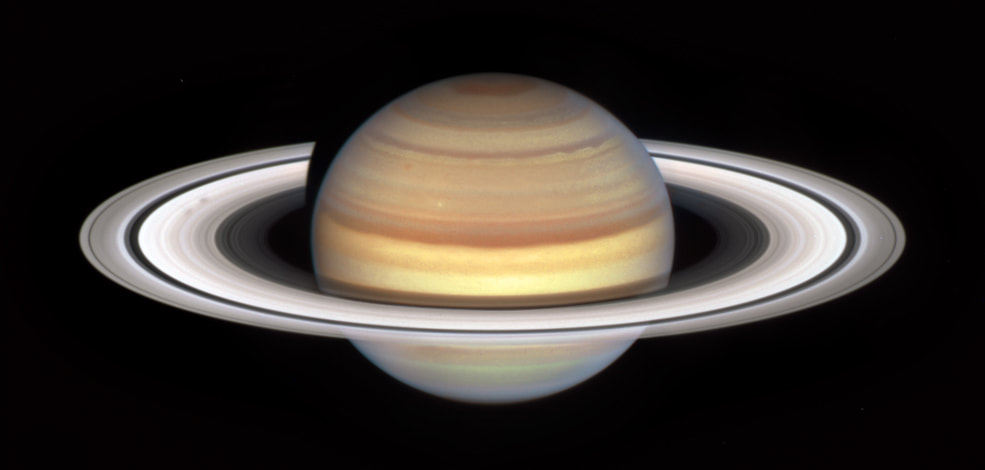
NASA's Hubble Space Telescope has observation time devoted to Saturn each year, thanks to the Outer Planet Atmospheres Legacy (OPAL) program, and the dynamic gas giant planet always shows us something new. This latest image heralds the start of Saturn's "spoke season" with the appearance of two smudgy spokes in the B ring, on the left in the image. Credits: NASA, ESA, and Amy Simon (NASA-GSFC); Image Processing: Alyssa Pagan (STScI)
New images of Saturn from NASA's Hubble Space Telescope herald the start of the planet's "spoke season" surrounding its equinox, when enigmatic features appear across its rings. The cause of the spokes, as well as their seasonal variability, has yet to be fully explained by planetary scientists.
Saturn's last equinox occurred in 2009, while NASA's Cassini spacecraft was orbiting the gas giant planet for close-up reconnaissance. With Cassini's mission completed in 2017, and the Voyager spacecrafts long gone, Hubble is continuing the work of long-term monitoring of changes on Saturn and the other outer planets.
"Despite years of excellent observations by the Cassini mission, the precise beginning and duration of the spoke season is still unpredictable, rather like predicting the first storm during hurricane season," Simon said.
While our solar system's other three gas giant planets also have ring systems, nothing compares to Saturn's prominent rings, making them a laboratory for studying spoke phenomena. Whether spokes could or do occur at other ringed planets is currently unknown. "It's a fascinating magic trick of nature we only see on Saturn – for now at least," Simon said.
To read more of the story please go to:
https://www.nasa.gov/feature/goddard/2023/hubble-captures-the-start-of-a-new-spoke-season-at-saturn
Saturn's last equinox occurred in 2009, while NASA's Cassini spacecraft was orbiting the gas giant planet for close-up reconnaissance. With Cassini's mission completed in 2017, and the Voyager spacecrafts long gone, Hubble is continuing the work of long-term monitoring of changes on Saturn and the other outer planets.
"Despite years of excellent observations by the Cassini mission, the precise beginning and duration of the spoke season is still unpredictable, rather like predicting the first storm during hurricane season," Simon said.
While our solar system's other three gas giant planets also have ring systems, nothing compares to Saturn's prominent rings, making them a laboratory for studying spoke phenomena. Whether spokes could or do occur at other ringed planets is currently unknown. "It's a fascinating magic trick of nature we only see on Saturn – for now at least," Simon said.
To read more of the story please go to:
https://www.nasa.gov/feature/goddard/2023/hubble-captures-the-start-of-a-new-spoke-season-at-saturn
For more information, visit: https://www.nasa.gov/mission_pages/hubble/main/index.html
https://www.nasa.gov/goddard
Credit: NASA's Goddard Space Flight Center Paul Morris: Lead Producer Music Credit “Mind’s Eye” by Paul Saunderson [PRS] via Abbey Road Masters [PRS] and Universal Production Music.
https://www.nasa.gov/goddard
Credit: NASA's Goddard Space Flight Center Paul Morris: Lead Producer Music Credit “Mind’s Eye” by Paul Saunderson [PRS] via Abbey Road Masters [PRS] and Universal Production Music.
~ Saturn Observation Campaign for 2022 ~
The year of 2022 marks 20 years since NASA’s Jet Propulsion Laboratory (JPL) began the Saturn Observation Campaign (SOC).
In 2002 the JPL’s outreach program asked selective professional and amateur astronomers worldwide to be part of sharing the wonders of the Cassini-Huygens mission to Saturn with their communities.
I was one of those very privileged astronomers selected to be part of the program and even though the mission to Saturn ended in September 2017,
I’m still talking about the discoveries made at Saturn and showing the real planet Saturn through my telescope :-)
Scientific papers are still being written and new discoveries are still being made from the data that Cassini accumulated over its nearly 2-decade mission.
If you would like to find out more about the Cassini Mission please go to the links below:
NASA Cassini mission to Saturn
https://www.nasa.gov/mission_pages/cassini/main/index.html
https://solarsystem.nasa.gov/missions/cassini/mission/about-the-mission/
In 2002 the JPL’s outreach program asked selective professional and amateur astronomers worldwide to be part of sharing the wonders of the Cassini-Huygens mission to Saturn with their communities.
I was one of those very privileged astronomers selected to be part of the program and even though the mission to Saturn ended in September 2017,
I’m still talking about the discoveries made at Saturn and showing the real planet Saturn through my telescope :-)
Scientific papers are still being written and new discoveries are still being made from the data that Cassini accumulated over its nearly 2-decade mission.
If you would like to find out more about the Cassini Mission please go to the links below:
NASA Cassini mission to Saturn
https://www.nasa.gov/mission_pages/cassini/main/index.html
https://solarsystem.nasa.gov/missions/cassini/mission/about-the-mission/
~ Discovering the planets in our Solar System ~
Southport Library - Tuesday, 11th January 2022
I was very welcomed at the Southport Library to give our first presentation on Uncover & Discover series to the children and their parents.
It was a full session with Covid19 restriction for everybody’s safety.
Everyone was very excited to hear about all the different spacecraft exploring the solar system and mainly how they take all those amazing images of the planets. They were so amazed at the new Rover on Mars called Perseverance with its little companion helicopter called Ingenuity…Wow, how cool is that little helicopter!!!
https://mars.nasa.gov/technology/helicopter/#Activities-For-Kids
I gave an in-depth talk about how the Cassini spacecraft travelled through the solar system to go into orbit about the stunning ringed planet Saturn. And explained how for nearly 15 years the spacecraft took incredible pictures of Saturn and its remarkable Moons, for us to marvel at!
https://solarsystem.nasa.gov/missions/cassini/overview/
I had a lot of fun on the day and really enjoyed getting back to taking about all the awesome things happening with the exploration of our solar system, please see some pictures from the day below, Noeleen :-)
Please note: Unfortunately the other Astronomy & Space sessions had to be cancelled because of a resurgent of the new Omicron variant of Covid. Hopefully we’ll rescheduled the events at a later date, please keep safe and well until then, all the best, Noeleen
It was a full session with Covid19 restriction for everybody’s safety.
Everyone was very excited to hear about all the different spacecraft exploring the solar system and mainly how they take all those amazing images of the planets. They were so amazed at the new Rover on Mars called Perseverance with its little companion helicopter called Ingenuity…Wow, how cool is that little helicopter!!!
https://mars.nasa.gov/technology/helicopter/#Activities-For-Kids
I gave an in-depth talk about how the Cassini spacecraft travelled through the solar system to go into orbit about the stunning ringed planet Saturn. And explained how for nearly 15 years the spacecraft took incredible pictures of Saturn and its remarkable Moons, for us to marvel at!
https://solarsystem.nasa.gov/missions/cassini/overview/
I had a lot of fun on the day and really enjoyed getting back to taking about all the awesome things happening with the exploration of our solar system, please see some pictures from the day below, Noeleen :-)
Please note: Unfortunately the other Astronomy & Space sessions had to be cancelled because of a resurgent of the new Omicron variant of Covid. Hopefully we’ll rescheduled the events at a later date, please keep safe and well until then, all the best, Noeleen
I don’t usually post video's outside of the NASA website but this video below is an excellent overview of the incredible mission to the ring planet Saturn and its mysterious moons created by ‘The Secrets of the Universe’ YouTube Channel.
Real Images From Saturn: What Cassini Actually Saw There
(Nov 10, 2021)
NASA’s Cassini-Huygens mission was one of the most successful missions in history. The Cassini spacecraft became the first probe to orbit Saturn while the Huygens probe was the first to land on Titan. In its more than two decades of exploration, Cassini revealed several secrets of Saturn and its moons.
Some of the prominent moons studied by Cassini include Titan, Dione, Enceladus, Rhea, Hyperion, Iapetus, and Phoebe. Along with its Moons, Cassini also investigated Saturn’s polar storms, the Hexagon, and the Great White Spot.
Cassini ended its mission in the Grand Finale by making 22 dives through the space between Saturn and its rings. In its last orbit, Cassini disintegrated in the planet’s atmosphere, becoming a part of Saturn itself. Read our Basics of Astrophysics series: https://bit.ly/3xII54M
Created by: Rishabh Nakra Written by: Simran Buttar Narrated by: Jeffrey Smith
Some of the prominent moons studied by Cassini include Titan, Dione, Enceladus, Rhea, Hyperion, Iapetus, and Phoebe. Along with its Moons, Cassini also investigated Saturn’s polar storms, the Hexagon, and the Great White Spot.
Cassini ended its mission in the Grand Finale by making 22 dives through the space between Saturn and its rings. In its last orbit, Cassini disintegrated in the planet’s atmosphere, becoming a part of Saturn itself. Read our Basics of Astrophysics series: https://bit.ly/3xII54M
Created by: Rishabh Nakra Written by: Simran Buttar Narrated by: Jeffrey Smith
NASA Jet Propulsion Laboratory "Cassini's Mission to Saturn"
Triumph at Saturn (Part II)
Premiered Oct 23, 2021
Triumph at Saturn (Part I)
Premiered Oct 16, 2021
Chronicling the story of NASA’s Cassini mission, this is the latest in our series of documentaries, “JPL and the Space Age.” These films use rare archival footage and interviews with pioneering engineers and scientists from the Jet Propulsion Laboratory in retelling the stories of many of humanity’s first steps into the cosmos.
Both parts of “Triumph at Saturn” are planned to be added to this collection in the near future.
Both parts of “Triumph at Saturn” are planned to be added to this collection in the near future.
~ InOMN at Reilly’s Rainforest Retreat on Saturday 16th October 2021 ~
With a special viewing of magnificent Saturn & Jupiter
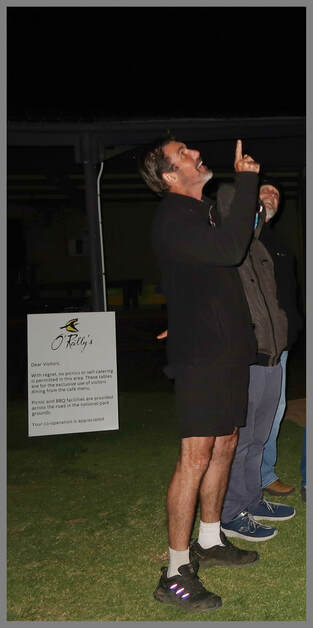 ~ Wow, look at Saturn, Jupiter & our amazing Moon ~
~ Wow, look at Saturn, Jupiter & our amazing Moon ~
What a wonderful weekend it was at this beautiful rainforest retreat that’s situated on top of Green Mountain at Lamington National Park in QLD.
On Saturday evening I gave a talk about our Moon in the theatrette and then we headed outside to look through my large telescope at the main attraction for the night, our amazing Moon.
After giving a star tour of the night sky to show everyone the constellations in the night sky, everyone then lined up to look into the telescope to view the lunar surface and also a special viewing of the beautiful planets, Saturn and Jupiter.
I let every person control the telescope with the hand controller to look around the lunar surface, and they were so amazed at the stunning detail on the surface of the Moon…Wow!
The sky conditions on the night were just perfect and many guests; staff from O’Reilly’s and family groups from the campground on the mountain came along to enjoy the night.
It was such a joy to share this experience with everyone, as this is what NASA’s InOMN is all about, sharing the wonder of the Moon and the planets with our community.
If you participated on the night please type your name and download your InOMN participation certificate at:
https://moon.nasa.gov/observe-the-moon-night/participate/participation-certificate/
Thank you to the staff from O’Reilly’s for making my husband and I very welcomed and I’m sure everybody enjoyed there lunar night for NASA’s InOMN.
Please find some links below for O’Reilly’s and also for information on the world heritage Lamington National Park; this is one of my favourite places to visit and go bushwalking and stargazing :-)
https://oreillys.com.au/
https://parks.des.qld.gov.au/parks/lamington
On Saturday evening I gave a talk about our Moon in the theatrette and then we headed outside to look through my large telescope at the main attraction for the night, our amazing Moon.
After giving a star tour of the night sky to show everyone the constellations in the night sky, everyone then lined up to look into the telescope to view the lunar surface and also a special viewing of the beautiful planets, Saturn and Jupiter.
I let every person control the telescope with the hand controller to look around the lunar surface, and they were so amazed at the stunning detail on the surface of the Moon…Wow!
The sky conditions on the night were just perfect and many guests; staff from O’Reilly’s and family groups from the campground on the mountain came along to enjoy the night.
It was such a joy to share this experience with everyone, as this is what NASA’s InOMN is all about, sharing the wonder of the Moon and the planets with our community.
If you participated on the night please type your name and download your InOMN participation certificate at:
https://moon.nasa.gov/observe-the-moon-night/participate/participation-certificate/
Thank you to the staff from O’Reilly’s for making my husband and I very welcomed and I’m sure everybody enjoyed there lunar night for NASA’s InOMN.
Please find some links below for O’Reilly’s and also for information on the world heritage Lamington National Park; this is one of my favourite places to visit and go bushwalking and stargazing :-)
https://oreillys.com.au/
https://parks.des.qld.gov.au/parks/lamington
~ Saturn’s shadow falls on its stunning rings on the 6th September 2021 ~
What a surprise I got tonight when I looked at my images of Saturn and saw a gap in the rings beside the planet???
Then I worked out that it must be the planets shadow being cast on its rings as the Suns light is blocked by the planets disc. ..Wow, how exciting it that!
When I took pictures of Saturn last month at opposition, the Suns light was directly facing Saturn and the rings were fully lit, now this is very interesting because it shows that you can see remarkable changes in the planets every time you look at them!
Image was taken on the 6th September with a 10inch Meade GPS Schmidt-Cassegrain telescope and a ZWO 120 MC-S camera with a 3x Barlow lens attached. An AVI movie was captured with 2500frames, stacked in RegiStax6, and processed in PS CS4.
Then I worked out that it must be the planets shadow being cast on its rings as the Suns light is blocked by the planets disc. ..Wow, how exciting it that!
When I took pictures of Saturn last month at opposition, the Suns light was directly facing Saturn and the rings were fully lit, now this is very interesting because it shows that you can see remarkable changes in the planets every time you look at them!
Image was taken on the 6th September with a 10inch Meade GPS Schmidt-Cassegrain telescope and a ZWO 120 MC-S camera with a 3x Barlow lens attached. An AVI movie was captured with 2500frames, stacked in RegiStax6, and processed in PS CS4.
~ Saturn at Opposition in August 2021 ~
Welcome back Saturn : -)
The beautiful ringed planet Saturn has just passed opposition and is at prime viewing in the eastern sky. The planet is just stunning to look at through even a modest size telescope, so please try to go outside and have a look at our own Solar Systems ‘Lord of the Rings’ planet ☺
I took these images a few nights ago with a Meade 10 inch LX200 Schmidt-Cassegrain telescope and a ZWO 120 MC-S camera. AVI movie files were captured with 3000 frames and stacked in RegiStax6 and processed in PS CS4.
In the second image below you can see four of Saturn’s largest moons, Titan is the farthest away with Tethys, Rhea & Dione closer to the planet. This second image is a composite, as I had to overexpose Saturn to capture the faint moons. A wide-angle lens was attached to the ZWO camera to give a wider field of view to capture all the moons on show.
I took these images a few nights ago with a Meade 10 inch LX200 Schmidt-Cassegrain telescope and a ZWO 120 MC-S camera. AVI movie files were captured with 3000 frames and stacked in RegiStax6 and processed in PS CS4.
In the second image below you can see four of Saturn’s largest moons, Titan is the farthest away with Tethys, Rhea & Dione closer to the planet. This second image is a composite, as I had to overexpose Saturn to capture the faint moons. A wide-angle lens was attached to the ZWO camera to give a wider field of view to capture all the moons on show.
~ Hubble Sees Changing Seasons on Saturn ~
NASA News - 19th March 2021
NASA’s Hubble Space Telescope is giving astronomers a view of changes in Saturn’s vast and turbulent atmosphere as the planet’s northern hemisphere summer transitions to fall as shown in this series of images taken in 2018, 2019, and 2020 (left to right).
“These small year-to-year changes in Saturn’s color bands are fascinating,” said Amy Simon, planetary scientist at NASA’s Goddard Space Flight Center in Greenbelt, Maryland. “As Saturn moves towards fall in its northern hemisphere, we see the polar and equatorial regions changing, but we are also seeing that the atmosphere varies on much shorter timescales.” Simon is lead author of a paper on these observations published March 11 in Planetary Science Journal.
“What we found was a slight change from year-to-year in color, possibly cloud height, and winds - not surprising that the changes aren't huge, as we’re only looking at a small fraction of a Saturn year,” added Simon. “We expect big changes on a seasonal timescale, so this is showing the progression towards the next season.”
To read the rest of the story please click on Saturn image above or go to the link below:
https://www.nasa.gov/image-feature/goddard/2021/saturn-season-change
https://solarsystem.nasa.gov/planets/saturn/overview/
“These small year-to-year changes in Saturn’s color bands are fascinating,” said Amy Simon, planetary scientist at NASA’s Goddard Space Flight Center in Greenbelt, Maryland. “As Saturn moves towards fall in its northern hemisphere, we see the polar and equatorial regions changing, but we are also seeing that the atmosphere varies on much shorter timescales.” Simon is lead author of a paper on these observations published March 11 in Planetary Science Journal.
“What we found was a slight change from year-to-year in color, possibly cloud height, and winds - not surprising that the changes aren't huge, as we’re only looking at a small fraction of a Saturn year,” added Simon. “We expect big changes on a seasonal timescale, so this is showing the progression towards the next season.”
To read the rest of the story please click on Saturn image above or go to the link below:
https://www.nasa.gov/image-feature/goddard/2021/saturn-season-change
https://solarsystem.nasa.gov/planets/saturn/overview/
The Science of Dragonfly
~ New Mission to Saturn visiting the moon Titan called Dragonfly ~
Dragonfly is a NASA mission to explore the chemistry and habitability of Saturn's largest moon, Titan.
The fourth mission in the New Frontiers line, Dragonfly will send an autonomously-operated rotorcraft to visit dozens of sites on Titan, investigating the moon's surface and shallow subsurface for organic molecules and possible biosignatures.
To carry out its mission, Dragonfly is equipped with a neutron spectrometer, a drill system, and a mass spectrometer, allowing scientists to make a detailed survey of Titan's chemical makeup. Dragonfly is scheduled to launch in 2026 and arrive at Titan in 2034.
https://dragonfly.jhuapl.edu/Gallery/
The fourth mission in the New Frontiers line, Dragonfly will send an autonomously-operated rotorcraft to visit dozens of sites on Titan, investigating the moon's surface and shallow subsurface for organic molecules and possible biosignatures.
To carry out its mission, Dragonfly is equipped with a neutron spectrometer, a drill system, and a mass spectrometer, allowing scientists to make a detailed survey of Titan's chemical makeup. Dragonfly is scheduled to launch in 2026 and arrive at Titan in 2034.
https://dragonfly.jhuapl.edu/Gallery/
NASA's Dragonfly Will Fly Around Titan Looking for Origins, Signs of Life
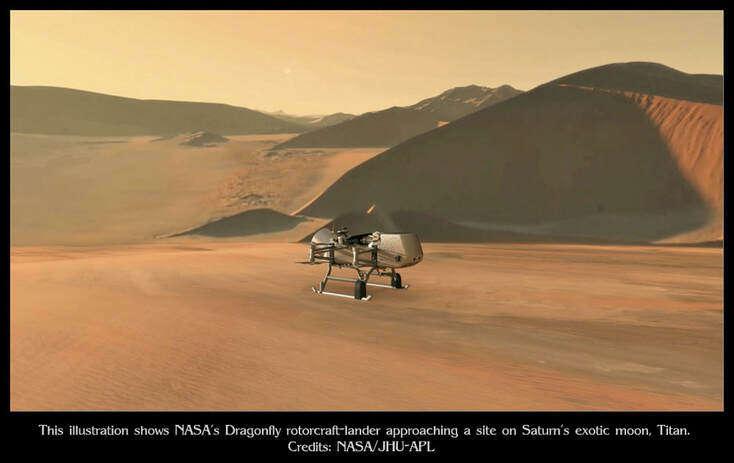
Taking advantage of Titan’s dense atmosphere and low gravity, Dragonfly will explore dozens of locations across the icy world, sampling and measuring the compositions of Titan's organic surface materials to characterize the habitability of Titan’s environment and investigate the progression of prebiotic chemistry.
NASA has announced that our next destination in the solar system is the unique, richly organic world Titan. Advancing our search for the building blocks of life, the Dragonfly mission will fly multiple sorties to sample and examine sites around Saturn’s icy moon.
Dragonfly will launch in 2026 and arrive in 2034. The rotorcraft will fly to dozens of promising locations on Titan looking for prebiotic chemical processes common on both Titan and Earth. Dragonfly marks the first time NASA will fly a multi-rotor vehicle for science on another planet; it has eight rotors and flies like a large drone. It will take advantage of Titan’s dense atmosphere – four times denser than Earth’s – to become the first vehicle ever to fly its entire science payload to new places for repeatable and targeted access to surface materials.
Titan is an analog to the very early Earth, and can provide clues to how life may have arisen on our planet. During its 2.7-year baseline mission, Dragonfly will explore diverse environments from organic dunes to the floor of an impact crater where liquid water and complex organic materials key to life once existed together for possibly tens of thousands of years. Its instruments will study how far prebiotic chemistry may have progressed. They also will investigate the moon’s atmospheric and surface properties and its subsurface ocean and liquid reservoirs. Additionally, instruments will search for chemical evidence of past or extant life.
“With the Dragonfly mission, NASA will once again do what no one else can do,” said NASA Administrator Jim Bridenstine. “Visiting this mysterious ocean world could revolutionize what we know about life in the universe.
This cutting-edge mission would have been unthinkable even just a few years ago, but we’re now ready for Dragonfly’s amazing flight.”
To read more about this new exciting mission to Saturn’s largest moon please go to the link at:
https://www.nasa.gov/press-release/nasas-dragonfly-will-fly-around-titan-looking-for-origins-signs-of-life
For more information about Titan, visit:
https://solarsystem.nasa.gov/moons/saturn-moons/titan/overview
Dragonfly will launch in 2026 and arrive in 2034. The rotorcraft will fly to dozens of promising locations on Titan looking for prebiotic chemical processes common on both Titan and Earth. Dragonfly marks the first time NASA will fly a multi-rotor vehicle for science on another planet; it has eight rotors and flies like a large drone. It will take advantage of Titan’s dense atmosphere – four times denser than Earth’s – to become the first vehicle ever to fly its entire science payload to new places for repeatable and targeted access to surface materials.
Titan is an analog to the very early Earth, and can provide clues to how life may have arisen on our planet. During its 2.7-year baseline mission, Dragonfly will explore diverse environments from organic dunes to the floor of an impact crater where liquid water and complex organic materials key to life once existed together for possibly tens of thousands of years. Its instruments will study how far prebiotic chemistry may have progressed. They also will investigate the moon’s atmospheric and surface properties and its subsurface ocean and liquid reservoirs. Additionally, instruments will search for chemical evidence of past or extant life.
“With the Dragonfly mission, NASA will once again do what no one else can do,” said NASA Administrator Jim Bridenstine. “Visiting this mysterious ocean world could revolutionize what we know about life in the universe.
This cutting-edge mission would have been unthinkable even just a few years ago, but we’re now ready for Dragonfly’s amazing flight.”
To read more about this new exciting mission to Saturn’s largest moon please go to the link at:
https://www.nasa.gov/press-release/nasas-dragonfly-will-fly-around-titan-looking-for-origins-signs-of-life
For more information about Titan, visit:
https://solarsystem.nasa.gov/moons/saturn-moons/titan/overview
~ Amazing Saturn ~
This is the most detailed image I’ve ever taken of Saturn…WooHoo!
~ What’s up for the beautiful planet Saturn in 2020 ~
~ Saturn Observation Campaign (SOC) for 2020 ~
NASA’s physical fiery end of the Cassini mission ended when the spacecraft plunged into the atmosphere of Saturn in September 2017, but my role of talking about and showing this stunning planet in the night sky to the community still continues…
In April 2020, Covid-19 hit our planet and changed all our lives; because of this all my Saturn Observation Campaign (SOC) events were cancelled for 2020. But this did not stop NASA and teams of scientists and astronomers worldwide continuing to analyse the data that the Cassini spacecraft accumulated over it’s 13 years of orbiting Saturn and it’s many Moons.
For the time being, I'll be setting up my large telescope safely at home to take images of the planet and I will share them here with you :-)
Also during this year, Saturn and Jupiter will come closer and closer together on the ecliptic for a rare 20-year conjunction, this conjunction will be the closest both planets have been to one another in over 400 years!
In reality, both planets are in different orbits around the Sun but from our line of sight here on Earth it will appear as if both planets are just about on top of one another…a sight not to be missed.
The date of this event will be on the 21st December 2020.
Because I will not be able to hold any SOC events, I will over the year highlight the new findings from NASA and also post images of Saturn as the planet comes to opposition on the 20th July 2020. (This is the best time to image Saturn, as it is closest to Earth)
So this year, not only have we got a fantastic opposition of Mars, we also have the two giant planets Saturn and Jupiter at conjunction for us to enjoy viewing through our telescopes.
If you do not have a telescope, try taking some lovely wide field images of the planets with a foreground of trees, rocks or artistic buildings, anything that gives a perspective that you are on planet Earth.
To find out more about Saturn visit:
NASA Science
Solar System Exploration
https://solarsystem.nasa.gov/planets/saturn/in-depth/
Saturn facts sheet
https://nssdc.gsfc.nasa.gov/planetary/factsheet/saturnfact.html
NASA ‘Space Place’ Make a CD Saturn
https://spaceplace.nasa.gov/saturn-model/en/
NASA’s physical fiery end of the Cassini mission ended when the spacecraft plunged into the atmosphere of Saturn in September 2017, but my role of talking about and showing this stunning planet in the night sky to the community still continues…
In April 2020, Covid-19 hit our planet and changed all our lives; because of this all my Saturn Observation Campaign (SOC) events were cancelled for 2020. But this did not stop NASA and teams of scientists and astronomers worldwide continuing to analyse the data that the Cassini spacecraft accumulated over it’s 13 years of orbiting Saturn and it’s many Moons.
For the time being, I'll be setting up my large telescope safely at home to take images of the planet and I will share them here with you :-)
Also during this year, Saturn and Jupiter will come closer and closer together on the ecliptic for a rare 20-year conjunction, this conjunction will be the closest both planets have been to one another in over 400 years!
In reality, both planets are in different orbits around the Sun but from our line of sight here on Earth it will appear as if both planets are just about on top of one another…a sight not to be missed.
The date of this event will be on the 21st December 2020.
Because I will not be able to hold any SOC events, I will over the year highlight the new findings from NASA and also post images of Saturn as the planet comes to opposition on the 20th July 2020. (This is the best time to image Saturn, as it is closest to Earth)
So this year, not only have we got a fantastic opposition of Mars, we also have the two giant planets Saturn and Jupiter at conjunction for us to enjoy viewing through our telescopes.
If you do not have a telescope, try taking some lovely wide field images of the planets with a foreground of trees, rocks or artistic buildings, anything that gives a perspective that you are on planet Earth.
To find out more about Saturn visit:
NASA Science
Solar System Exploration
https://solarsystem.nasa.gov/planets/saturn/in-depth/
Saturn facts sheet
https://nssdc.gsfc.nasa.gov/planetary/factsheet/saturnfact.html
NASA ‘Space Place’ Make a CD Saturn
https://spaceplace.nasa.gov/saturn-model/en/
~ WooHoo…Star Wars Fleet visits the ringed planet Saturn ~
Stardust Junior Astronomy Club 2020
What a lot of fun we had today, Saturn is feeling very lonely because the Cassini spacecraft is not there anymore taking pictures and exploring.
So the earthing children from the Stardust Junior Astronomy Club have sent their Star War Fleet to visit Saturn and have some exciting fun!
~ Please enjoy their pictures because they had lots of fun drawing them and dressing up in there favourite Star Wars characters ~
*** Great work all you budding space explorers from Noeleen ***
So the earthing children from the Stardust Junior Astronomy Club have sent their Star War Fleet to visit Saturn and have some exciting fun!
~ Please enjoy their pictures because they had lots of fun drawing them and dressing up in there favourite Star Wars characters ~
*** Great work all you budding space explorers from Noeleen ***
~ April 2020 ~
*** Unfortunately the Stardust Club cannot meet again at the library until further notice because of Covid-19 ***
‘May the force be with you all to stay safe and happy until we meet again’
Warmest wishes to all the Stardust families, sincerely yours, Noeleen
*** Unfortunately the Stardust Club cannot meet again at the library until further notice because of Covid-19 ***
‘May the force be with you all to stay safe and happy until we meet again’
Warmest wishes to all the Stardust families, sincerely yours, Noeleen
Data From NASA's Cassini May Explain Saturn's Atmospheric Mystery
Cassini News: 7th April 2020
The upper layers in the atmospheres of gas giants — Saturn, Jupiter, Uranus and Neptune — are hot, just like Earth's. But unlike Earth, the Sun is too far from these outer planets to account for the high temperatures. Their heat source has been one of the great mysteries of planetary science.
New analysis of data from NASA's Cassini spacecraft finds a viable explanation for what's keeping the upper layers of Saturn, and possibly the other gas giants, so hot: auroras at the planet's north and south poles. Electric currents, triggered by interactions between solar winds and charged particles from Saturn's moons, spark the auroras and heat the upper atmosphere. (As with Earth's northern lights, studying auroras tells scientists what's going on in the planet's atmosphere.)
The work, published April 6 in Nature Astronomy, is the most complete mapping yet of both temperature and density of a gas giant's upper atmosphere — a region that has, in general, been poorly understood.
By building a complete picture of how heat circulates in the atmosphere, scientists are better able to understand how auroral electric currents heat the upper layers of Saturn's atmosphere and drive winds. The global wind system can distribute this energy, which is initially deposited near the poles toward the equatorial regions, heating them to twice the temperatures expected from the Sun's heating alone.
"The results are vital to our general understanding of planetary upper atmospheres and are an important part of Cassini's legacy," said author Tommi Koskinen, a member of Cassini's Ultraviolet Imaging Spectograph (UVIS) team. "They help address the question of why the uppermost part of the atmosphere is so hot while the rest of the atmosphere — due to the large distance from the Sun — is cold."
To read more of this story visit:
https://www.nasa.gov/feature/jpl/data-from-nasas-cassini-may-explain-saturns-atmospheric-mystery
To find out more about Cassini's Ultraviolet Imaging Spectograph visit:
https://solarsystem.nasa.gov/missions/cassini/mission/spacecraft/cassini-orbiter/ultraviolet-imaging-spectrograph/
New analysis of data from NASA's Cassini spacecraft finds a viable explanation for what's keeping the upper layers of Saturn, and possibly the other gas giants, so hot: auroras at the planet's north and south poles. Electric currents, triggered by interactions between solar winds and charged particles from Saturn's moons, spark the auroras and heat the upper atmosphere. (As with Earth's northern lights, studying auroras tells scientists what's going on in the planet's atmosphere.)
The work, published April 6 in Nature Astronomy, is the most complete mapping yet of both temperature and density of a gas giant's upper atmosphere — a region that has, in general, been poorly understood.
By building a complete picture of how heat circulates in the atmosphere, scientists are better able to understand how auroral electric currents heat the upper layers of Saturn's atmosphere and drive winds. The global wind system can distribute this energy, which is initially deposited near the poles toward the equatorial regions, heating them to twice the temperatures expected from the Sun's heating alone.
"The results are vital to our general understanding of planetary upper atmospheres and are an important part of Cassini's legacy," said author Tommi Koskinen, a member of Cassini's Ultraviolet Imaging Spectograph (UVIS) team. "They help address the question of why the uppermost part of the atmosphere is so hot while the rest of the atmosphere — due to the large distance from the Sun — is cold."
To read more of this story visit:
https://www.nasa.gov/feature/jpl/data-from-nasas-cassini-may-explain-saturns-atmospheric-mystery
To find out more about Cassini's Ultraviolet Imaging Spectograph visit:
https://solarsystem.nasa.gov/missions/cassini/mission/spacecraft/cassini-orbiter/ultraviolet-imaging-spectrograph/
~ Jupiter, Saturn & Mars in Twilight sky at 5.30am on 3rd May 2020 ~
After finding and taking images of Comet Swan in the lightening dawn sky, I looked up above my head at the zenith saw the planets Jupiter, Saturn and Mars on the ecliptic and took some lovely images.
The planets images taken with a Canon 70D camera and Tamron 18-400mm lens, the exposure was 4 seconds and IOS1000 at 5.30am.
The planets images taken with a Canon 70D camera and Tamron 18-400mm lens, the exposure was 4 seconds and IOS1000 at 5.30am.
~ Amazing Saturn now on show close to Jupiter in July 2020 ~
Saturn is now at prime viewing with opposition on the 21st July. The northern hemisphere of the planet has been tilted our way while the rings have been fully open, but now part of the southern hemisphere is coming into view and the rings are again closing up.
Saturn and Jupiter are now close in the sky on the ecliptic, this astronomical event only happens once every 20 years (or to be exact 19.6 years). So keep and eye on these two gas giants as both planets slowly edge closer and closer for a spectacular conjunction on the 21st December 2020.
I love the way I’ve managed to capture the different coloured bands on the planet and the subtle colours of the gaseous atmosphere and the most amazing thing to think about is Saturn is over 1.4 billion kilometres away from us!
Saturn is the most beautiful planet in the solar system because of its stunning ring, now that the Cassini spacecraft is not there up close and personal we have to make do with the view through our telescope eyepiece….
Oh, I so miss the Cassini Spacecraft and the excitement of all the wonderful discoveries it made.
https://solarsystem.nasa.gov/missions/cassini/overview/
My image was taken on the 2nd July 2020 with a Meade LX200 GPS 10 inch Schmidt-Cassegrain telescope and a ZWO 120 MC-S camera and 3x Barlow lens attached. An AVI movie with 1500 frames was captured and stacked in RegiStax6 and processed in PS CS4.
Saturn and Jupiter are now close in the sky on the ecliptic, this astronomical event only happens once every 20 years (or to be exact 19.6 years). So keep and eye on these two gas giants as both planets slowly edge closer and closer for a spectacular conjunction on the 21st December 2020.
I love the way I’ve managed to capture the different coloured bands on the planet and the subtle colours of the gaseous atmosphere and the most amazing thing to think about is Saturn is over 1.4 billion kilometres away from us!
Saturn is the most beautiful planet in the solar system because of its stunning ring, now that the Cassini spacecraft is not there up close and personal we have to make do with the view through our telescope eyepiece….
Oh, I so miss the Cassini Spacecraft and the excitement of all the wonderful discoveries it made.
https://solarsystem.nasa.gov/missions/cassini/overview/
My image was taken on the 2nd July 2020 with a Meade LX200 GPS 10 inch Schmidt-Cassegrain telescope and a ZWO 120 MC-S camera and 3x Barlow lens attached. An AVI movie with 1500 frames was captured and stacked in RegiStax6 and processed in PS CS4.
~ Conjunction of Moon with Jupiter & Saturn over 3 nights in August ~
I was extremely lucky to have three clear evenings to capture the conjunction of the waxing gibbous Moon travelling through the constellation of Sagittarius to meet with the two gas giant planets Jupiter and Saturn. This event happened on the evenings of the 1st, 2nd and 3rd of August 2020.
This event is quite rare as Jupiter and Saturn are only seen close together on the ecliptic every twenty years as they orbit about the Sun. To have all three celestial bodies in the same constellation, well that’s just awesome :-)
You’ll have another wonderful opportunity to see it all again on the evenings of the 24th, 25th & 26th of September with the waxing gibbous Moon.
All images were taken with a Canon 70D camera and an 18-400mm Tamron lens on a tripod in my garden just before 6pm. I had a bit of trouble selecting exposure times because the Moon was so bright and also a light twilight sky.
1st Image taken 1st August 2020: ISO640, exposure time 3.2sec at F5.6.
2nd Image taken 2nd August 2020: ISO640, exposure time 2 sec at f6.3.
3rd Image taken 3rd August 2020: ISO400, exposure time 2sec at f7.
It’s also interesting to note from the photographs at how much the Moon moves through the sky over the three nights, the Moon orbits the earth and the earth is also in movement orbiting the Sun. The Moon rises 50 minutes later each night because of this movement.
I found an interesting answer to my question on how fast does the Moon move in its orbit around the Earth from Robert Frost an Instructor and Flight controller at NASA who writes a weekly Quora blog.
To read more blogs by Robert Frost go to:
https://www.quora.com/profile/Robert-Frost-1
This event is quite rare as Jupiter and Saturn are only seen close together on the ecliptic every twenty years as they orbit about the Sun. To have all three celestial bodies in the same constellation, well that’s just awesome :-)
You’ll have another wonderful opportunity to see it all again on the evenings of the 24th, 25th & 26th of September with the waxing gibbous Moon.
All images were taken with a Canon 70D camera and an 18-400mm Tamron lens on a tripod in my garden just before 6pm. I had a bit of trouble selecting exposure times because the Moon was so bright and also a light twilight sky.
1st Image taken 1st August 2020: ISO640, exposure time 3.2sec at F5.6.
2nd Image taken 2nd August 2020: ISO640, exposure time 2 sec at f6.3.
3rd Image taken 3rd August 2020: ISO400, exposure time 2sec at f7.
It’s also interesting to note from the photographs at how much the Moon moves through the sky over the three nights, the Moon orbits the earth and the earth is also in movement orbiting the Sun. The Moon rises 50 minutes later each night because of this movement.
I found an interesting answer to my question on how fast does the Moon move in its orbit around the Earth from Robert Frost an Instructor and Flight controller at NASA who writes a weekly Quora blog.
To read more blogs by Robert Frost go to:
https://www.quora.com/profile/Robert-Frost-1
~ An astrophotographer's guide to the August night sky ~
ABC Science by Genelle Weule
8th August 2020
I was asked by Ms Weule to contribute some of my astronomy images including the latest images of Saturn and Jupiter taken for her article on the August night sky.
Please click on the link below to read the story at:
https://www.abc.net.au/news/science/2020-08-08/astrophotographers-guide-to-the-august-night-sky/12512364?nw=0
These are some of the amazing objects you will find in the sky this month and whether you have a small or a large telescope they will be a delight to view, especially the beautiful planets Jupiter & Saturn.
Why don’t you try taking some wide field images of them with just your camera and lens on a tripod…now that would be fun!
Dylan O’Donnell who’s a good friend and fellow SAS member has also showcased some of his stunning images to the article.
To see more of Dylan’s images please go to his Instagram account at: https://www.instagram.com/dylan_odonnell_/?hl=en
Dylan also has a fantastic YouTube channel at:
https://www.youtube.com/channel/UCgOf4wBnoGg8WHHHr_h4otQ
I hope you all enjoy the story and find the time to hop off your comfy lounge, open up your door and go outside to look up and discover the night sky…Happy Stargazing, Noeleen :-)
Please click on the link below to read the story at:
https://www.abc.net.au/news/science/2020-08-08/astrophotographers-guide-to-the-august-night-sky/12512364?nw=0
These are some of the amazing objects you will find in the sky this month and whether you have a small or a large telescope they will be a delight to view, especially the beautiful planets Jupiter & Saturn.
Why don’t you try taking some wide field images of them with just your camera and lens on a tripod…now that would be fun!
Dylan O’Donnell who’s a good friend and fellow SAS member has also showcased some of his stunning images to the article.
To see more of Dylan’s images please go to his Instagram account at: https://www.instagram.com/dylan_odonnell_/?hl=en
Dylan also has a fantastic YouTube channel at:
https://www.youtube.com/channel/UCgOf4wBnoGg8WHHHr_h4otQ
I hope you all enjoy the story and find the time to hop off your comfy lounge, open up your door and go outside to look up and discover the night sky…Happy Stargazing, Noeleen :-)
~ Jupiter, Saturn & Mars through the telescope on 9th & 10th August 2020 ~
~ The stunning planets Jupiter, Saturn & Mars now in the night sky ~
I managed to captured Jupiter and Saturn just before midnight on the 9th August, and then the planet Mars a little later when it cleared the two-story house roof next door. This was at about 2.30am on the 10th August 2020…I have lots of obstacles in my garden!
The sky conditions were not as good as the last time I captured Jupiter and Saturn on the 1st & 2nd of July, but I’m still very happy with the detail.
In this montage, all the planets were taken with the same focal length and imaging setup, so they are all to scale in size, last time Mars was at opposition it was as large in size as the body of Saturn…quite remarkable!
I used Meade LX200 10 inch Schmidt-Cassegrain telescope and a ZWO 120 MC-S camera with 3x Barlow lens attached. AVI movie file were captured then stacked in RegiStax6 and processed in PS CS4.
I managed to captured Jupiter and Saturn just before midnight on the 9th August, and then the planet Mars a little later when it cleared the two-story house roof next door. This was at about 2.30am on the 10th August 2020…I have lots of obstacles in my garden!
The sky conditions were not as good as the last time I captured Jupiter and Saturn on the 1st & 2nd of July, but I’m still very happy with the detail.
In this montage, all the planets were taken with the same focal length and imaging setup, so they are all to scale in size, last time Mars was at opposition it was as large in size as the body of Saturn…quite remarkable!
I used Meade LX200 10 inch Schmidt-Cassegrain telescope and a ZWO 120 MC-S camera with 3x Barlow lens attached. AVI movie file were captured then stacked in RegiStax6 and processed in PS CS4.
~ What’s up for the beautiful planet Saturn in 2019 ~
There are still lots of discoveries being made from all the data from the Cassini-Huygens spacecraft that ended its mission in September 2017 that keeps coming through from NASA. This data will be analysed for many years to come but here are a few incredible news reports so far this year.
I am still sharing my love of the mission with the public and have recently been on two international cruises where I was an enrichment speaker giving talks in the theatre and sharing the beauty of Saturn and the universe to many people.
Its very exciting sharing the wonders of the cosmos to the general community as they are just blown away with what the space agencies are doing with the exploration of the solar system and what I do in my own observatory with imaging the night sky.
It does not matter if I’m on a beautiful cruise ship or at a school or library giving community events it’s all an incredible privilege and very fulfilling thing for me to do where everyone is just so amazed by the beauty of this wondrous universe that we all live in :-)
Jupiter and Saturn are now getting closer on the ecliptic and next year they will make there closest approach at opposition.
On the 12th August there will be a very rare Occultation, with Saturn disappearing behind the Moon...Wow!
Oh Boy, I hope the evening is clear for that special event!!
(Note: Yes, Yes, Yes...I captured this amazing event occultation of Saturn, please see my images further below for August events :-)
Please see below all the happenings in the night sky with Saturn and pictures from my SOC events.
~ Noeleen Lowndes NASA’s Saturn Observation Campaign Member in Australia ~
I am still sharing my love of the mission with the public and have recently been on two international cruises where I was an enrichment speaker giving talks in the theatre and sharing the beauty of Saturn and the universe to many people.
Its very exciting sharing the wonders of the cosmos to the general community as they are just blown away with what the space agencies are doing with the exploration of the solar system and what I do in my own observatory with imaging the night sky.
It does not matter if I’m on a beautiful cruise ship or at a school or library giving community events it’s all an incredible privilege and very fulfilling thing for me to do where everyone is just so amazed by the beauty of this wondrous universe that we all live in :-)
Jupiter and Saturn are now getting closer on the ecliptic and next year they will make there closest approach at opposition.
On the 12th August there will be a very rare Occultation, with Saturn disappearing behind the Moon...Wow!
Oh Boy, I hope the evening is clear for that special event!!
(Note: Yes, Yes, Yes...I captured this amazing event occultation of Saturn, please see my images further below for August events :-)
Please see below all the happenings in the night sky with Saturn and pictures from my SOC events.
~ Noeleen Lowndes NASA’s Saturn Observation Campaign Member in Australia ~
~ Saturn, Jupiter & Venus in the Dawn Sky on the 4th February 2019 ~
I was out at my ‘Stardust Observatory’ imaging the night sky and was just about ready to head for bed at 4.20am when I looked out at the dawn sky and saw this magnificent view…
There in the gorgeous colours of the dawn and with the soft golden colour of daylight were the planets Saturn, Venus and Jupiter all aligned up the eastern sky.
It was still dark enough to see many stars including the constellation of Scorpius with the stars from the Milky Way just starting to fade, it was very beautiful to see and very tranquil after a whole night up taking pictures of galaxies :-)
I took the image with a Canon 70D camera and a Tokina 11-16mm wide lens @12mm on a camera tripod, ISO 800 with a 13-second exposure.
There in the gorgeous colours of the dawn and with the soft golden colour of daylight were the planets Saturn, Venus and Jupiter all aligned up the eastern sky.
It was still dark enough to see many stars including the constellation of Scorpius with the stars from the Milky Way just starting to fade, it was very beautiful to see and very tranquil after a whole night up taking pictures of galaxies :-)
I took the image with a Canon 70D camera and a Tokina 11-16mm wide lens @12mm on a camera tripod, ISO 800 with a 13-second exposure.
~ The Saturn System Through the Eyes of Cassini ~
Download e-book at:
https://www.nasa.gov/connect/ebooks/the-saturn-system.html
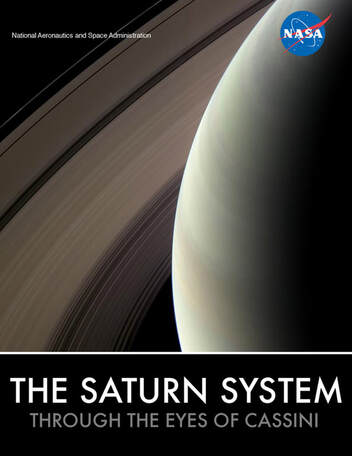
The Cassini-Huygens mission has revolutionized our knowledge of the Saturn system and revealed surprising places in the solar system where life could potentially gain a foothold—bodies we call ocean worlds.
Since its arrival in 2004, Cassini–Huygens has been nothing short of a discovery machine, captivating us with data and images never before obtained with such detail and clarity. Cassini taught us that Saturn is a far cry from a tranquil lone planet with delicate rings. Now, we know more about Saturn’s chaotic, active, and powerful rings, and the storms that rage beneath. Images and data from Saturn’s moons Titan and Enceladus hint at the possibility of life never before suspected. The rings of Saturn, its moons, and the planet itself offer irresistible and inexhaustible subjects for intense study. As the Cassini mission comes to a dramatic end with a fateful plunge into Saturn on Sept. 15, 2017, scientists are already dreaming of going back for further study.
Over a period of 13 years, Cassini has captured about 450,000 spectacular images within the Saturn system, providing new views of the “lord of the rings” and a plethora of iconic images. To honor the art and science of Cassini, this book was developed collaboratively by a team from NASA’s Planetary Science Division (PSD), NASA’s Jet Propulsion Laboratory (JPL), and the Lunar and Planetary Institute (LPI). While these images represent the tip of the iceberg—each telling a story about Saturn and its mysterious moons—our hope is that the mission will inspire future artists and explorers. The sheer beauty of these images is surpassed only by the science and discoveries they represent.
Since its arrival in 2004, Cassini–Huygens has been nothing short of a discovery machine, captivating us with data and images never before obtained with such detail and clarity. Cassini taught us that Saturn is a far cry from a tranquil lone planet with delicate rings. Now, we know more about Saturn’s chaotic, active, and powerful rings, and the storms that rage beneath. Images and data from Saturn’s moons Titan and Enceladus hint at the possibility of life never before suspected. The rings of Saturn, its moons, and the planet itself offer irresistible and inexhaustible subjects for intense study. As the Cassini mission comes to a dramatic end with a fateful plunge into Saturn on Sept. 15, 2017, scientists are already dreaming of going back for further study.
Over a period of 13 years, Cassini has captured about 450,000 spectacular images within the Saturn system, providing new views of the “lord of the rings” and a plethora of iconic images. To honor the art and science of Cassini, this book was developed collaboratively by a team from NASA’s Planetary Science Division (PSD), NASA’s Jet Propulsion Laboratory (JPL), and the Lunar and Planetary Institute (LPI). While these images represent the tip of the iceberg—each telling a story about Saturn and its mysterious moons—our hope is that the mission will inspire future artists and explorers. The sheer beauty of these images is surpassed only by the science and discoveries they represent.
~ The magnificent planet Saturn now back in our evening sky ~
30th May 2019
The beautiful ringed planet Saturn is now on show in our evening sky with opposition (when Saturn rises in the east as the same time as the Sun sets in the west) occurring on the 9th July. This is my first image for this year while out taking some images of Jupiter.
Image taken on the 30th May 2019 with a Meade LX200 10inch telescope at prime focus using a ZWO ASI120MC-S camera with a 3x Barlow lens attached. AVI movie files of 2000 frames were captured which were stacked in RegiStax6 and processed in PS CS4.
Image taken on the 30th May 2019 with a Meade LX200 10inch telescope at prime focus using a ZWO ASI120MC-S camera with a 3x Barlow lens attached. AVI movie files of 2000 frames were captured which were stacked in RegiStax6 and processed in PS CS4.
~ Saturn & Jupiter on the 22nd June 2019 ~
It was a lovely clear evening last night to take some more images of the beautiful planets Saturn and Jupiter through my telescope.
Saturn looked just stunning with its dark Cassini division on display and some cloud markings on the body of the planet.
Jupiter’s Great Red Spot was not on display but it was nice to see the other side of the planet with all the bluish swirls and dark coloured gases in the North Equatorial Belt. There were even some small white ovals on display in the southern zone area.
Both Jupiter and Saturn are to scale in size as I used the same imaging setup for both of the planets :-)
My image was taken with a Meade LX200 (GPS) 10inch telescope at prime focus using a ZWO ASI120MC-S camera with a 3x Barlow lens attached. AVI movie files were captured with 2000 frames that were then stacked in RegiStax6 and processed in PS CS4.
Saturn looked just stunning with its dark Cassini division on display and some cloud markings on the body of the planet.
Jupiter’s Great Red Spot was not on display but it was nice to see the other side of the planet with all the bluish swirls and dark coloured gases in the North Equatorial Belt. There were even some small white ovals on display in the southern zone area.
Both Jupiter and Saturn are to scale in size as I used the same imaging setup for both of the planets :-)
My image was taken with a Meade LX200 (GPS) 10inch telescope at prime focus using a ZWO ASI120MC-S camera with a 3x Barlow lens attached. AVI movie files were captured with 2000 frames that were then stacked in RegiStax6 and processed in PS CS4.
~ 15 Years Ago: Cassini-Huygens Begins to Reveal Saturn’s Secrets ~
(Cassini News July 2nd 2019)
The planet Saturn has intrigued humans for centuries. Dutch astronomer Christiaan Huygens in 1655 was the first to accurately describe Saturn’s rings as a disk surrounding the planet. Although Italian astronomer Galileo Galilei had observed them when he first turned his telescope toward Saturn in 1610, his telescope was not powerful enough to discern their true nature. Huygens also discovered Saturn’s largest moon, Titan. Italian astronomer Giovanni Cassini discovered four of Saturn’s moons and divisions within the planet’s rings.
In the late 1970s and early 1980s, three spacecraft, Pioneer 11 and Voyager 1 and 2, completed reconnaissance flybys of Saturn, returning stunning images and a wealth of information about the planet, its rings, and numerous satellites. But as is often the case, this new information just raised more questions and scientists were eager to observe Saturn over a longer period of time.
To read more of this story please go to the link below:
https://www.nasa.gov/feature/15-years-ago-cassini-huygens-begins-to-reveal-saturn-s-secrets
In the late 1970s and early 1980s, three spacecraft, Pioneer 11 and Voyager 1 and 2, completed reconnaissance flybys of Saturn, returning stunning images and a wealth of information about the planet, its rings, and numerous satellites. But as is often the case, this new information just raised more questions and scientists were eager to observe Saturn over a longer period of time.
To read more of this story please go to the link below:
https://www.nasa.gov/feature/15-years-ago-cassini-huygens-begins-to-reveal-saturn-s-secrets
~ Magnificent Saturn on the 23rd July 2019 ~
It’s now three weeks since Saturn was at opposition and even though I’ve had some lovely clear nights the air has been very turbulent up with lots of jet streams in the atmosphere.
On the evening of the 23rd July I got a bit of a break and captured my best images of the planet since opposition…I’m very happy with this image :-)
You can see the Cassini division very clearly with some cloud detail on the surface; Saturn’s beautiful ring is now starting to close back up after being fully on display in late 2017.
Every year now the rings will start to close up more and more until they will be seen edge-on to Earth in 2025. They won’t be fully on display again until the year 2032…Wow, now that’s a long time!
My image was taken with a Meade LX200 (GPS) 10inch telescope at prime focus using a ZWO ASI120MC-S camera with a 3x Barlow lens attached. AVI movie files were captured with 2000 frames that were stacked in RegiStax6 and processed in PS CS4.
On the evening of the 23rd July I got a bit of a break and captured my best images of the planet since opposition…I’m very happy with this image :-)
You can see the Cassini division very clearly with some cloud detail on the surface; Saturn’s beautiful ring is now starting to close back up after being fully on display in late 2017.
Every year now the rings will start to close up more and more until they will be seen edge-on to Earth in 2025. They won’t be fully on display again until the year 2032…Wow, now that’s a long time!
My image was taken with a Meade LX200 (GPS) 10inch telescope at prime focus using a ZWO ASI120MC-S camera with a 3x Barlow lens attached. AVI movie files were captured with 2000 frames that were stacked in RegiStax6 and processed in PS CS4.
~ Ormeau Girl Guides Astronomy Night on the 13th August 2019 ~
I really enjoyed our wonderful evening together with these very excited girl guides, who were well mannered and very interested in learning all about the night sky for their ‘Astronomy Patches’.
I’ve been supporting the boy scouts and girl guides to earn these patches now for over 25 years, but this is the first time I’ve been given one for myself, thank you team leaders …WooHoo!!!
To find out more about the Ormeau Girl Guides visit:
https://www.facebook.com/ormeaugirlguides/
I’ve been supporting the boy scouts and girl guides to earn these patches now for over 25 years, but this is the first time I’ve been given one for myself, thank you team leaders …WooHoo!!!
To find out more about the Ormeau Girl Guides visit:
https://www.facebook.com/ormeaugirlguides/
~ Jupiter & Saturn are now in our August night sky for prime viewing ~
Right now is the time to get your telescopes out and look at these two stunning planets in our Solar System. No matter what size telescope you have, you’ll still see the four moons of Jupiter doing an ecliptic moon dance around the planet and you'll see the ring around Saturn.
If you don't have a telescope, you could use a large pair of binoculars (10X50mm or more) to see Jupiter and its moons but with the rings of Saturn you’ll definitely need a telescope, as the planet is over 1.3 billion kilometres away from us here on Earth!
Early in the evening you’ll still see the magnificent Milky Way at the zenith and the wonderful deep sky objects that abound in the constellations of Scorpius and Sagittarius.
Please go to Skymaps.com to download your free star chart to explore your night sky in your own garden…just make sure you download the relevant star chart for your latitude and hemisphere that you live in.
http://www.skymaps.com/downloads.html
You can also download a FREE App called ‘Star Chart’ from the Apple store which is an excellent planetarium App that you just hold up to the night sky and its shows you the planets and constellations, I always share this App with teachers and students for them to learn the night sky…have lots of fun :-)
https://apps.apple.com/au/app/star-chart/id345542655
The images of Jupiter & Saturn were taken with a Meade LX200 (GPS) 10inch telescope at prime focus using a ZWO ASI120MC-S camera with a 3x Barlow lens attached. AVI movie files were captured with 2000 frames that were stacked in RegiStax6 and processed in PS CS4.
If you don't have a telescope, you could use a large pair of binoculars (10X50mm or more) to see Jupiter and its moons but with the rings of Saturn you’ll definitely need a telescope, as the planet is over 1.3 billion kilometres away from us here on Earth!
Early in the evening you’ll still see the magnificent Milky Way at the zenith and the wonderful deep sky objects that abound in the constellations of Scorpius and Sagittarius.
Please go to Skymaps.com to download your free star chart to explore your night sky in your own garden…just make sure you download the relevant star chart for your latitude and hemisphere that you live in.
http://www.skymaps.com/downloads.html
You can also download a FREE App called ‘Star Chart’ from the Apple store which is an excellent planetarium App that you just hold up to the night sky and its shows you the planets and constellations, I always share this App with teachers and students for them to learn the night sky…have lots of fun :-)
https://apps.apple.com/au/app/star-chart/id345542655
The images of Jupiter & Saturn were taken with a Meade LX200 (GPS) 10inch telescope at prime focus using a ZWO ASI120MC-S camera with a 3x Barlow lens attached. AVI movie files were captured with 2000 frames that were stacked in RegiStax6 and processed in PS CS4.
~ A Rare Lunar Occultation of Saturn on the 12th August 2019 ~
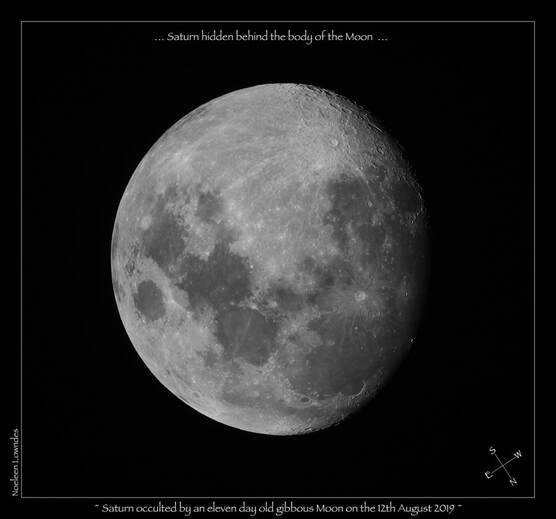
It was still quite light when I set up my telescope to take images of this rare event, Saturn looked ever so small as it neared the darkened western limb of the 11 day old waxing gibbous Moon at 6.30pm.
I had to keep a very close eye on the planet, because it was going to disappear very quickly behind the really dark shadow area of the Moon that was unlit by the Sun.
Once Saturn disappeared it took nearly one and a half hours to reappear, it was a bit tricky working out where it would come into view again because the eastern limb was extremely bright!
In reality, Saturn is a huge planet at a distance of over 1.3 billion kilometers away from us here on earth, but it looks so small as compared with the Moon which is only 384,000 kms away it’s all just an optical Illusion, like most things in the Universe….
I used a 127mm APO refractor telescope and a Canon 700D camera that was attached to a tracking HEQ5 Pro mount. I used this lower powered set-up so I could captured the full disc of the Moon and do a composite image of the entire event…it worked out just as I planed :-)
1st image (top) is of Saturn just before it disappears at 6.40pm, 12 images were stacked in RegiStax6 and processed in Photoshop CS4. Exposures were 1/200th second and ISO 200. Image is cropped.
2nd Image (above) is the full disc of the Moon, 12 images were stacked in Registgack6 and processed in Photoshop CS4. Exposures were 1/200th second and ISO 200.
3rd Image (below) is a composite of the three images to show the whole event of the occultation of Saturn by the Moon over a period of one and a half hours from 6.40pm until 8.15pm.
I had to keep a very close eye on the planet, because it was going to disappear very quickly behind the really dark shadow area of the Moon that was unlit by the Sun.
Once Saturn disappeared it took nearly one and a half hours to reappear, it was a bit tricky working out where it would come into view again because the eastern limb was extremely bright!
In reality, Saturn is a huge planet at a distance of over 1.3 billion kilometers away from us here on earth, but it looks so small as compared with the Moon which is only 384,000 kms away it’s all just an optical Illusion, like most things in the Universe….
I used a 127mm APO refractor telescope and a Canon 700D camera that was attached to a tracking HEQ5 Pro mount. I used this lower powered set-up so I could captured the full disc of the Moon and do a composite image of the entire event…it worked out just as I planed :-)
1st image (top) is of Saturn just before it disappears at 6.40pm, 12 images were stacked in RegiStax6 and processed in Photoshop CS4. Exposures were 1/200th second and ISO 200. Image is cropped.
2nd Image (above) is the full disc of the Moon, 12 images were stacked in Registgack6 and processed in Photoshop CS4. Exposures were 1/200th second and ISO 200.
3rd Image (below) is a composite of the three images to show the whole event of the occultation of Saturn by the Moon over a period of one and a half hours from 6.40pm until 8.15pm.
Wow...that was AMAZING!!!
~ NASA’s Saturn Observation Events for 2018 ~
It has now been one year since the Cassini-Huygens mission to Saturn ended, but it has by no means been forgotten!
The legacy of this amazing mission to the beautiful ringed planet will last for many decades to come as astronomers and scientist shift through all the data and images that the spacecraft accumulated over its nearly 20 year mission.
My role and the role of other Saturn Observation Campaign members from around the world (nearly 400 of us) was to engage with the public to share the information and images taken from the Cassini spacecraft and to also actively set up our telescopes and show people the real Saturn in the night sky.
I am still engaging the community with this beautiful planet and even though the Cassini spacecraft is no longer at Saturn we can still see the ethereal beauty of the planet in the eyepiece of a telescope here on Earth, which I’ll continue to do :-)
Please find below my latest images of Saturn taken this month with its rings still nearly wide open…they are just starting to close up a bit from being wide open from last year. I’m also very excited because I managed to capture five of the moons including Titan.
A note on the SOC campaign: When NASA updated and reformatted there wonderful new website a few years ago they deleted all the stories and events from SOC members from our dedicated website. Soon I’ll do up a SOC tribute page to these past events, I only have my own events and no other SOC member’s pictures and stories.
If you have been a SOC members and would like to share your events too just email me on my contact page and I’ll make a page so you can have your events come back to life as we were very much a part of the mission in sharing the wonders of the mission with our communities, thank you, Noeleen.
https://www.nasa.gov/vision/universe/watchtheskies/s_o_c_2003.html
If you would like to find out more about this remarkable mission please go to the mission site at:
https://solarsystem.nasa.gov/missions/cassini/overview/
The legacy of this amazing mission to the beautiful ringed planet will last for many decades to come as astronomers and scientist shift through all the data and images that the spacecraft accumulated over its nearly 20 year mission.
My role and the role of other Saturn Observation Campaign members from around the world (nearly 400 of us) was to engage with the public to share the information and images taken from the Cassini spacecraft and to also actively set up our telescopes and show people the real Saturn in the night sky.
I am still engaging the community with this beautiful planet and even though the Cassini spacecraft is no longer at Saturn we can still see the ethereal beauty of the planet in the eyepiece of a telescope here on Earth, which I’ll continue to do :-)
Please find below my latest images of Saturn taken this month with its rings still nearly wide open…they are just starting to close up a bit from being wide open from last year. I’m also very excited because I managed to capture five of the moons including Titan.
A note on the SOC campaign: When NASA updated and reformatted there wonderful new website a few years ago they deleted all the stories and events from SOC members from our dedicated website. Soon I’ll do up a SOC tribute page to these past events, I only have my own events and no other SOC member’s pictures and stories.
If you have been a SOC members and would like to share your events too just email me on my contact page and I’ll make a page so you can have your events come back to life as we were very much a part of the mission in sharing the wonders of the mission with our communities, thank you, Noeleen.
https://www.nasa.gov/vision/universe/watchtheskies/s_o_c_2003.html
If you would like to find out more about this remarkable mission please go to the mission site at:
https://solarsystem.nasa.gov/missions/cassini/overview/
~ Observation of the magnificent planet Saturn with some of its moons in Sept 2018 ~
The night sky here in Australia at the moment is a stargazers delight with the brilliant planets Venus, Jupiter, Saturn and Mars all beautifully displayed across the night sky. A few nights ago I got one of those very rare moments when the seeing went ever so calm and I managed to get some outstanding images of Saturn high up at the zenith :-)
I then overexposed the disc of Saturn to see if I could capture any of the moons, and to my delight there they were five of them, the three moons in the shape of a triangle were Enceladus, Tethys and Dione, the two moons further out were Rhea and Titan.
The second image is a composite because I had to use two different exposure times, a shorter one to capture the body of Saturn, and a longer exposure time to capture the faint moons of the planet.
Images were taken on the 10th September 2018 with a Meade 10inch LX200 telescope and a ZWO ASI 120 MC-S colour CCD camera with a 3x Barlow attached. AVI movie files were captured and then processed in RegiStax6 and PS CS4.
This is the first time I've captured some of the moons of Saturn, they are Enceladus, Tethys and Dione, Rhea and Titan are further away from the planet.
I then overexposed the disc of Saturn to see if I could capture any of the moons, and to my delight there they were five of them, the three moons in the shape of a triangle were Enceladus, Tethys and Dione, the two moons further out were Rhea and Titan.
The second image is a composite because I had to use two different exposure times, a shorter one to capture the body of Saturn, and a longer exposure time to capture the faint moons of the planet.
Images were taken on the 10th September 2018 with a Meade 10inch LX200 telescope and a ZWO ASI 120 MC-S colour CCD camera with a 3x Barlow attached. AVI movie files were captured and then processed in RegiStax6 and PS CS4.
This is the first time I've captured some of the moons of Saturn, they are Enceladus, Tethys and Dione, Rhea and Titan are further away from the planet.
‘Saturn in the Park’ event on the Gold Coast in Qld on the 15th September 2018 ~
‘Saturn in the Park’ astronomy event on the Gold Coast in QLD, Australia.
~ Note of thanks from Noeleen ~
Thank you so much to all of our SAS members who so kindly brought along their telescopes for our Saturn in the Park event on Saturday night. It was like a great big Star Party with at least 450-500 people turning up to look at the night sky…it was amazing!
There were so many families who came along with young children and the delight on there faces as they viewed the planets and our Moon for the very first time was just priceless…this is what these nights are all about, sharing the beauty of the Universe with them all :-)
I would very much like to also thank Rachel Junge who advertised the Saturn event on 102.9 Hot Tomato, I can tell you now that lots of people listen to your radio station here on the Gold Coast. http://www.mygc.com.au/gold-coast-astronomers-line-up-telescopes-for-all-to-see/
This night was also the 1st anniversary of the end of the Cassini-Huygens mission to Saturn which I’ve been involved with for the last 16 years with NASA’s Saturn Observation Campaign. The Cassini spacecraft spectacularly ended its mission on the 15th September 2017 by plunging into the atmosphere of Saturn and under the extreme pressure was disintegrated!
If you would like to find out more about this remarkable mission please go to the mission site at:
https://solarsystem.nasa.gov/missions/cassini/overview/
~ Note of thanks from Noeleen ~
Thank you so much to all of our SAS members who so kindly brought along their telescopes for our Saturn in the Park event on Saturday night. It was like a great big Star Party with at least 450-500 people turning up to look at the night sky…it was amazing!
There were so many families who came along with young children and the delight on there faces as they viewed the planets and our Moon for the very first time was just priceless…this is what these nights are all about, sharing the beauty of the Universe with them all :-)
I would very much like to also thank Rachel Junge who advertised the Saturn event on 102.9 Hot Tomato, I can tell you now that lots of people listen to your radio station here on the Gold Coast. http://www.mygc.com.au/gold-coast-astronomers-line-up-telescopes-for-all-to-see/
This night was also the 1st anniversary of the end of the Cassini-Huygens mission to Saturn which I’ve been involved with for the last 16 years with NASA’s Saturn Observation Campaign. The Cassini spacecraft spectacularly ended its mission on the 15th September 2017 by plunging into the atmosphere of Saturn and under the extreme pressure was disintegrated!
If you would like to find out more about this remarkable mission please go to the mission site at:
https://solarsystem.nasa.gov/missions/cassini/overview/
~ Saturn in the Park 15th September 2018 on the Gold Coast in Qld Australia ~
~ Night of the planets with Saturn, Venus, Mars and Jupiter 9th August 2018 ~
This past month of August has been all about the planets; on show in the night sky have been Mercury low down on the western horizon, then the pretty quarter phase of Venus, Jupiter and Saturn, then dusty Mars all on view right across the ecliptic.
I set up my 10inch Meade LX200 Schmidt-cassegrain telescope here at home on the 31st July in the hope of capturing as much detail on the surface of Mars over the coming weeks and because of the extremely fine weather and that's where the telescope has been ever since.
(I’ve made sure that the telescope has been covered up and protected)
Unfortunately Mars has had that huge dust storm on the surface so not much detail has been observed which is such a shame, because this years very close opposition was going to be just spectacular with Mars at only 58 million kilometres away from Earth.
So while out taking some beautiful images of Saturn and Mars, I also had fun capturing all the other planets too, which I’ve put together in this montage of images that were all taken on the night of the 9th August 2018.
Please note, that all the planets are to scale in size, just look at how huge Mars is as compared with the body of Saturn…now that’s amazing!
All the images were taken with a Meade 10inch LX200 telescope and a ZWO ASI 120 MC-S colour CCD camera with a 3x Barlow attached. AVI movie files were captured and then processed in RegiStax6 and PS CS4.
I set up my 10inch Meade LX200 Schmidt-cassegrain telescope here at home on the 31st July in the hope of capturing as much detail on the surface of Mars over the coming weeks and because of the extremely fine weather and that's where the telescope has been ever since.
(I’ve made sure that the telescope has been covered up and protected)
Unfortunately Mars has had that huge dust storm on the surface so not much detail has been observed which is such a shame, because this years very close opposition was going to be just spectacular with Mars at only 58 million kilometres away from Earth.
So while out taking some beautiful images of Saturn and Mars, I also had fun capturing all the other planets too, which I’ve put together in this montage of images that were all taken on the night of the 9th August 2018.
Please note, that all the planets are to scale in size, just look at how huge Mars is as compared with the body of Saturn…now that’s amazing!
All the images were taken with a Meade 10inch LX200 telescope and a ZWO ASI 120 MC-S colour CCD camera with a 3x Barlow attached. AVI movie files were captured and then processed in RegiStax6 and PS CS4.
~ Cassini's 'Grand Finale' wins NASA an Emmy Award…WooHoo!
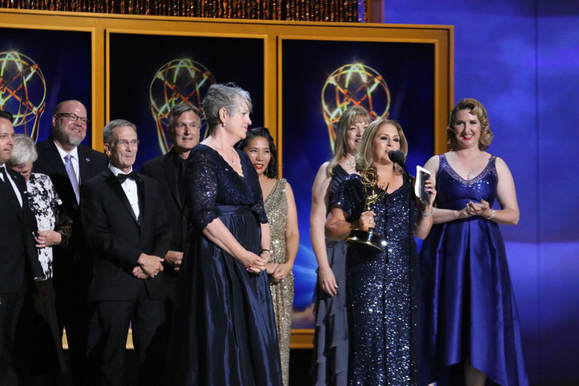
Members of the JPL Media Relations and Public Engagement offices, and leaders of the Cassini Mission received an Emmy for Outstanding Original Interactive Program at the Television Academy's 2018 Creative Arts Emmy Awards at the Microsoft Theater on Saturday, Sept. 8, 2018, in Los Angeles. L to R: Preston Dyches, Julie Webster, Phil Davis, Earl Maize, Jess Doherty, Alice Wessen, Jia-Rui Cook, Linda Spilker, Veronica McGregor (holding the Emmy), Stephanie L. Smith.
Credits: Courtesy of the Television Academy
And the Emmy goes to: Cassini's Grand Finale
Sept. 11, 2018
JPL has won an Emmy Award for Outstanding Original Interactive Program for its coverage of the Cassini mission's Grand Finale at Saturn. The award was presented Saturday, Sept. 8, at the Creative Arts Emmy Awards in Los Angeles by the Academy of Television Arts & Sciences.
Accepting the award were members of the JPL Media Relations and Public Engagement offices, and leaders of the Cassini Mission.
Please read all about this amazing win for the Cassini Mission specialists at:
https://www.nasa.gov/feature/jpl/and-the-emmy-goes-to-cassinis-grand-finale
https://www.nasa.gov/feature/jpl/nasa-s-cassini-coverage-lands-an-emmy-nomination
An extract from the story Alice Wessen:
"To an incredible spacecraft that could and did. To an amazing mission that guided her.
To our public that followed her for 20 years before she plunged into Saturn but sent science to the end.
Go NASA!" said Alice Wessen, manager at JPL's Public Engagement Office.
"Thank you to space fans, if you're a current space fan or future space fan. We can't fit you all into mission control but we can give you a virtual seat and we can put you at Saturn and we can put you at Mars," said Veronica McGregor, manager of JPL's Media Relations Office.
"Thanks also to NASA and JPL for having a culture that tells us to shoot for the stars in all of our positions, whether we are explorers or storytellers. This is for science, for science literacy, and discovery."
Footnote: The Saturn Observation Campaign members was part of one of these outreach education programs for our communities and countries…what an honour is has been to be part of this incredible mission! Noeleen Lowndes SOC member in Australia :-)
Accepting the award were members of the JPL Media Relations and Public Engagement offices, and leaders of the Cassini Mission.
Please read all about this amazing win for the Cassini Mission specialists at:
https://www.nasa.gov/feature/jpl/and-the-emmy-goes-to-cassinis-grand-finale
https://www.nasa.gov/feature/jpl/nasa-s-cassini-coverage-lands-an-emmy-nomination
An extract from the story Alice Wessen:
"To an incredible spacecraft that could and did. To an amazing mission that guided her.
To our public that followed her for 20 years before she plunged into Saturn but sent science to the end.
Go NASA!" said Alice Wessen, manager at JPL's Public Engagement Office.
"Thank you to space fans, if you're a current space fan or future space fan. We can't fit you all into mission control but we can give you a virtual seat and we can put you at Saturn and we can put you at Mars," said Veronica McGregor, manager of JPL's Media Relations Office.
"Thanks also to NASA and JPL for having a culture that tells us to shoot for the stars in all of our positions, whether we are explorers or storytellers. This is for science, for science literacy, and discovery."
Footnote: The Saturn Observation Campaign members was part of one of these outreach education programs for our communities and countries…what an honour is has been to be part of this incredible mission! Noeleen Lowndes SOC member in Australia :-)
For Your Consideration: NASA Cassini Grand Finale
Uploaded on Jul 12, 2018
The Academy of Television Arts & Sciences nominated NASA's Jet Propulsion Laboratory for outstanding original interactive program for its coverage of the Cassini mission's Grand Finale at Saturn, including news, web, education, television and social media efforts.
~ Missions to Mars & Saturn presented by Noeleen Lowndes for Science Week 2018 ~
Broadbeach Library on the 16th August 2018 at 5.30 - 7.00pm
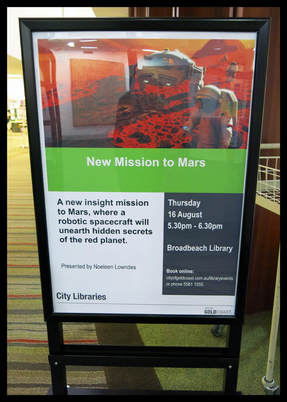
You are invited to come along to the Broadbeach Library on the Gold Coast for a presentation on NASA’s long time exploration of the red planet Mars and an update on the Cassini mission to Saturn.
Thursday the 16th August 2018 from 5.30pm – 6.30pm Q&A to 7-00pm
Please book online at: http://goldcoast.evanced.info/eventcalendar.asp
Or phone 07 55811555
The latest mission to Mars is called InSight and the spacecraft will arrive at the planet on the 26th November 2018.
To find out more about NASA’s amazing missions to Mars please go to:
https://mars.nasa.gov
Noeleen will also give you an update on the Cassini-Huygens spacecraft that ended its 14-year mission at Saturn last September by spectacularly crashing into the dense atmosphere of the planet where the spacecraft disintegrated!
Noeleen is a lifetime member of the Southern Astronomical Society here on the Gold Coast &
NASA’s Saturn Observation Campaign Member here in Australia for the past 16 years.
http://sas.org.au
https://saturn.jpl.nasa.gov
Footnote: I had a really great evening at the library with many people coming along to see and hear all about NASA's journey to Mars and Cassini's Grand Finale ending.
Thursday the 16th August 2018 from 5.30pm – 6.30pm Q&A to 7-00pm
Please book online at: http://goldcoast.evanced.info/eventcalendar.asp
Or phone 07 55811555
The latest mission to Mars is called InSight and the spacecraft will arrive at the planet on the 26th November 2018.
To find out more about NASA’s amazing missions to Mars please go to:
https://mars.nasa.gov
Noeleen will also give you an update on the Cassini-Huygens spacecraft that ended its 14-year mission at Saturn last September by spectacularly crashing into the dense atmosphere of the planet where the spacecraft disintegrated!
Noeleen is a lifetime member of the Southern Astronomical Society here on the Gold Coast &
NASA’s Saturn Observation Campaign Member here in Australia for the past 16 years.
http://sas.org.au
https://saturn.jpl.nasa.gov
Footnote: I had a really great evening at the library with many people coming along to see and hear all about NASA's journey to Mars and Cassini's Grand Finale ending.
~ Saturn, Jupiter & Mars are now in our night-time sky during April 2018 ~
~ Saturn, Jupiter & Mars are now in our night-time sky during April 2018 ~
What an exciting time it is now with a wonderful display of the three planets Saturn, Jupiter and Mars in the night sky. The magnificent planet Jupiter was the best that I’ve ever seen it with so much detail on its surface and one of its moon called Io not that far away.
And Saturn’s rings are a delight to behold!
The red planet Mars was in a gibbous phase as our planet quickly approaches it for a very close opposition at the end of July and Saturn also looked beautiful and will look even better with opposition at the end of June.
So try and make some time to go outside to look up and see some of our planetary neighbours :-)
Images were taken at my Stardust observatory during April 2018, with a Meade 10inch LX200 Schmidt Cassgrain telescope and a ZWO ASI120MC-S camera with a 2x Barlow lens attached; the conditions were excellent!
What an exciting time it is now with a wonderful display of the three planets Saturn, Jupiter and Mars in the night sky. The magnificent planet Jupiter was the best that I’ve ever seen it with so much detail on its surface and one of its moon called Io not that far away.
And Saturn’s rings are a delight to behold!
The red planet Mars was in a gibbous phase as our planet quickly approaches it for a very close opposition at the end of July and Saturn also looked beautiful and will look even better with opposition at the end of June.
So try and make some time to go outside to look up and see some of our planetary neighbours :-)
Images were taken at my Stardust observatory during April 2018, with a Meade 10inch LX200 Schmidt Cassgrain telescope and a ZWO ASI120MC-S camera with a 2x Barlow lens attached; the conditions were excellent!
~ The magnificent planet Saturn & Mars in a celestial sea of stars on the 14th April 2018 ~
(Images taken at my Stardust Observatory at Leyburn)
In the early hours of the morning on the 14th April 2018 the planets Saturn and Mars could be seen high up the eastern sky within the glorious constellation of Sagittarius where many astronomical wonders can be found.
One of the main parts of our Milky Way galaxy is shown in the image where dark dusty star clouds can be seen along with the beautiful Trifid (M20) and Lagoon (M8) nebulae embedded in a celestial sea of stars. Saturn is serenely gliding by the globular star cluster M22 and Mars was not that far away from the pretty blue white star called Nunki (Sigma Sagittarii).
The image was taken on a clear and very dark night at my Stardust observatory at Leyburn in Qld with a Canon 70D camera and a Canon 70-200mm lens set at 73mm with an aperture set at F4.5.
The camera and lens was piggybacked on a large tracking telescope, 14 images were taken and exposures times were 3 minutes each with corresponding dark frames, all images were stacked in Deep Sky Stacker and processed in Photoshop CS4.
One of the main parts of our Milky Way galaxy is shown in the image where dark dusty star clouds can be seen along with the beautiful Trifid (M20) and Lagoon (M8) nebulae embedded in a celestial sea of stars. Saturn is serenely gliding by the globular star cluster M22 and Mars was not that far away from the pretty blue white star called Nunki (Sigma Sagittarii).
The image was taken on a clear and very dark night at my Stardust observatory at Leyburn in Qld with a Canon 70D camera and a Canon 70-200mm lens set at 73mm with an aperture set at F4.5.
The camera and lens was piggybacked on a large tracking telescope, 14 images were taken and exposures times were 3 minutes each with corresponding dark frames, all images were stacked in Deep Sky Stacker and processed in Photoshop CS4.
~ My Invitation to support Girls who STEAM at the Robina Library ~
(Saturday the 10th February 2018)

International day of women and girls in science celebration
STEAM (science, technology, engineering, arts and mathematics)
On Saturday the 10th February I was invited to be part of the Gold Coast City Libraries launch of Girls who STEAM at the Robina Library (Auditorium).
This was a dedicated program of workshops just for girls, with exclusive activities across the sciences, technology, engineering and mathematics to inspire and unite girls aged 8 years and over in their passion for science.
I was part of the hands on activities, provoking ideas, and pop-up science to excite the Girls in Science with over two hundred people coming along on the day.
A couple of top female scientists from Griffith University also came along to the event to inspire the girls with there talks and my astronomy and NASA space displays was very popular.
I really enjoyed the day and had a lot of fun with all the girls :-)
Explore STEAM programs:
http://www.goldcoast.qld.gov.au/library/steam-programs-11684.html
STEAM (science, technology, engineering, arts and mathematics)
On Saturday the 10th February I was invited to be part of the Gold Coast City Libraries launch of Girls who STEAM at the Robina Library (Auditorium).
This was a dedicated program of workshops just for girls, with exclusive activities across the sciences, technology, engineering and mathematics to inspire and unite girls aged 8 years and over in their passion for science.
I was part of the hands on activities, provoking ideas, and pop-up science to excite the Girls in Science with over two hundred people coming along on the day.
A couple of top female scientists from Griffith University also came along to the event to inspire the girls with there talks and my astronomy and NASA space displays was very popular.
I really enjoyed the day and had a lot of fun with all the girls :-)
Explore STEAM programs:
http://www.goldcoast.qld.gov.au/library/steam-programs-11684.html
~ The Saturn System Through the Eyes of Cassini eBook produced by NASA ~
NASA has released an incredible eBook for you to download that shows you the beauty of the Saturnian system as seen though the eyes of the Cassini-Huygens Spacecraft.
https://www.nasa.gov/connect/ebooks/the-saturn-system.html
Please download and enjoy and thank you so much to all the wonderful people at NASA who do this for all of mankind to enjoy the wonders of our solar system :-)
https://www.nasa.gov/connect/ebooks/the-saturn-system.html
Please download and enjoy and thank you so much to all the wonderful people at NASA who do this for all of mankind to enjoy the wonders of our solar system :-)
Goodbye Cassini…drawings from the children at the Stardust Junior Astronomy Club
From the Runaway Bay Library in Qld Australia
Goodbye Cassini…
What an incredible spacecraft you’ve been for the human race with all the stunning images and amazing new discoveries you’ve made at Saturn, you’ve been very brave and passed by many of Saturn’s mysteries moons and shown us there beauty since you arrived in 2004.
There were a couple of tears in my eyes as I watch you plunge into Saturn in a blaze of glory, thank you for the journey, the excitement and the wonders you’ve shown us at the Saturnian system… I will miss you :-(
I think that it’s fitting that we end the mission with these lovely drawings from the children from the Stardust Junior Astronomy Club at the Runaway Bay Library, in celebration of my 15 years of education with NASA’s Saturn Observation Campaign, bye bye little spacecraft…thank you for the memories :-)
Noeleen Lowndes
NASA’s (SOC) member in Australia (2002 to 2017).
https://www.nasa.gov/vision/universe/watchtheskies/s_o_c_2003.html
https://saturn.jpl.nasa.gov
What an incredible spacecraft you’ve been for the human race with all the stunning images and amazing new discoveries you’ve made at Saturn, you’ve been very brave and passed by many of Saturn’s mysteries moons and shown us there beauty since you arrived in 2004.
There were a couple of tears in my eyes as I watch you plunge into Saturn in a blaze of glory, thank you for the journey, the excitement and the wonders you’ve shown us at the Saturnian system… I will miss you :-(
I think that it’s fitting that we end the mission with these lovely drawings from the children from the Stardust Junior Astronomy Club at the Runaway Bay Library, in celebration of my 15 years of education with NASA’s Saturn Observation Campaign, bye bye little spacecraft…thank you for the memories :-)
Noeleen Lowndes
NASA’s (SOC) member in Australia (2002 to 2017).
https://www.nasa.gov/vision/universe/watchtheskies/s_o_c_2003.html
https://saturn.jpl.nasa.gov
| nasa_-_for_the_love_of_saturn.pdf | |
| File Size: | 233 kb |
| File Type: | |
Beautiful drawings from the children at the Stardust Junior Astronomy Club in Australia
NASA’s Cassini Spacecraft Ends Its Historic Exploration of Saturn
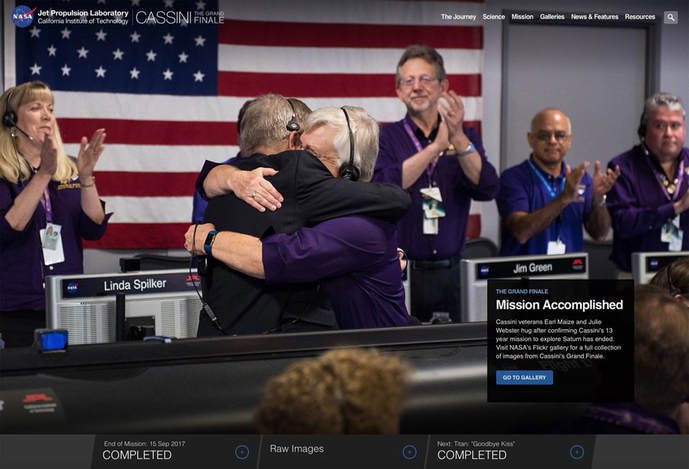
Cassini End of Mission (NHQ201709150004)
Cassini program manager at JPL, Earl Maize, left, and spacecraft operations team manager for the Cassini mission at Saturn, Julie Webster embrace after the Cassini spacecraft plunged into Saturn, Friday, Sept. 15, 2017 at NASA's Jet Propulsion Laboratory in Pasadena, California.
Since its arrival in 2004, the Cassini-Huygens mission has been a discovery machine, revolutionizing our knowledge of the Saturn system and captivating us with data and images never before obtained with such detail and clarity. On Sept. 15, 2017, operators will deliberately plunge the spacecraft into Saturn, as Cassini gathered science until the end. The “plunge” ensures Saturn’s moons will remain pristine for future exploration. During Cassini’s final days, mission team members from all around the world gathered at NASA’s Jet Propulsion Laboratory, Pasadena, California, to celebrate the achievements of this historic mission. Photo Credit: (NASA/Joel Kowsky)
Cassini plunged into Saturn's atmosphere and disintegrated about 3:31 a.m. PDT (7:31 a.m. EDT)
Australian Eastern Standard Time (AEST) 9.55pm on Sept. 15, 2017.
A thrilling epoch in the exploration of our solar system came to a close today, as NASA's Cassini spacecraft made a fateful plunge into the atmosphere of Saturn, ending its 13-year tour of the ringed planet.
Please go to NASA’s JPL website to read all about the exciting end of this incredible mission to Saturn at:
https://saturn.jpl.nasa.gov/news/3121/nasas-cassini-spacecraft-ends-its-historic-exploration-of-saturn
Australian Eastern Standard Time (AEST) 9.55pm on Sept. 15, 2017.
A thrilling epoch in the exploration of our solar system came to a close today, as NASA's Cassini spacecraft made a fateful plunge into the atmosphere of Saturn, ending its 13-year tour of the ringed planet.
Please go to NASA’s JPL website to read all about the exciting end of this incredible mission to Saturn at:
https://saturn.jpl.nasa.gov/news/3121/nasas-cassini-spacecraft-ends-its-historic-exploration-of-saturn
Her Journey Ends, but the legacy will last for decades, goodbye faithful little spacecraft : -)
Goodbye Cassini…. live images streaming now from Cassini!
Well this is it; later this evening (AEST) the amazing Cassini spacecraft will plunge into the surface of the planet Saturn in a fiery ball, which will streak across the sky as it burns up in the gaseous atmosphere of Saturn!
There is no stopping what will happen at approximately 9.55pm tonight (AEST) and there will be many a tear in the eyes of everyone involved, including me after 15 years of sharing the wonders of Cassini’s discoveries to the community….
Here in Australia (AEST) the Canberra DSN starts tracking Cassini at 1.15pm on DSS43 & DSS35 and by about 9.55pm the spacecraft will have plunged into the planets surface. (Images are being transmitted now!)
Please go to the NASA’s Grand Finale website at: https://saturn.jpl.nasa.gov
Where is Cassini now link at:
https://saturn.jpl.nasa.gov/mission/saturn-tour/where-is-cassini-now/
Goodbye Cassini…thank you for all the wonderful images and discoveries, I will miss you so much :-)
There is no stopping what will happen at approximately 9.55pm tonight (AEST) and there will be many a tear in the eyes of everyone involved, including me after 15 years of sharing the wonders of Cassini’s discoveries to the community….
Here in Australia (AEST) the Canberra DSN starts tracking Cassini at 1.15pm on DSS43 & DSS35 and by about 9.55pm the spacecraft will have plunged into the planets surface. (Images are being transmitted now!)
Please go to the NASA’s Grand Finale website at: https://saturn.jpl.nasa.gov
Where is Cassini now link at:
https://saturn.jpl.nasa.gov/mission/saturn-tour/where-is-cassini-now/
Goodbye Cassini…thank you for all the wonderful images and discoveries, I will miss you so much :-)
Only 7 hours to go now...
Latest report from NASA's Jet Propulsion Laboratory
Sept. 14, 2017 (4:45 p.m. PDT): Cassini has begun transmitting data -- including the final images taken by its imaging cameras -- in advance of its final plunge into Saturn on Sept. 15. The spacecraft is in the process of emptying its onboard solid-state recorder of all science data, prior to reconfiguring for a near-real-time data relay during the final plunge. Unprocessed (or "raw" images) are available here. The communications link with the spacecraft is continuous from now through the end of mission (about 12 hours).
Where is Cassini Now!
https://saturn.jpl.nasa.gov/mission/saturn-tour/where-is-cassini-now/
Latest report from NASA's Jet Propulsion Laboratory
Sept. 14, 2017 (4:45 p.m. PDT): Cassini has begun transmitting data -- including the final images taken by its imaging cameras -- in advance of its final plunge into Saturn on Sept. 15. The spacecraft is in the process of emptying its onboard solid-state recorder of all science data, prior to reconfiguring for a near-real-time data relay during the final plunge. Unprocessed (or "raw" images) are available here. The communications link with the spacecraft is continuous from now through the end of mission (about 12 hours).
Where is Cassini Now!
https://saturn.jpl.nasa.gov/mission/saturn-tour/where-is-cassini-now/
Only One Day to Go until the Cassini Spacecraft plunges into Saturn!
~ How to Watch Cassini's last moments at Saturn ~
On the 15th September 2017.
Here in Australia (AEST) the Canberra DSN starts tracking Cassini at 1.15pm on DSS43 & DSS35
At 6.37pm Cassini is set up for real time transmissions and by about 9.55pm the spacecraft will have plunged into the planets surface :-(
NASA will be streaming live feeds from mission control at the Jet Propulsion Laboratory in Pasadena, California, where scientists will be receiving the final images and data from the spacecraft.
NASA Live Streaming Channel Guide
https://saturn.jpl.nasa.gov/mission/grand-finale/for-media/#streaming
NASA TV at:
https://www.nasa.gov/multimedia/nasatv/index.html#public
NASA YouTube at:
https://www.youtube.com/nasajpl/live
If you have any trouble with these links try the National Geographic website where they are also streaming the live feed on NASA LIVE ON USTREAM at:
http://news.nationalgeographic.com/2017/09/watch-live-cassini-grand-finale-saturn-space-science/
At 6.37pm Cassini is set up for real time transmissions and by about 9.55pm the spacecraft will have plunged into the planets surface :-(
NASA will be streaming live feeds from mission control at the Jet Propulsion Laboratory in Pasadena, California, where scientists will be receiving the final images and data from the spacecraft.
NASA Live Streaming Channel Guide
https://saturn.jpl.nasa.gov/mission/grand-finale/for-media/#streaming
NASA TV at:
https://www.nasa.gov/multimedia/nasatv/index.html#public
NASA YouTube at:
https://www.youtube.com/nasajpl/live
If you have any trouble with these links try the National Geographic website where they are also streaming the live feed on NASA LIVE ON USTREAM at:
http://news.nationalgeographic.com/2017/09/watch-live-cassini-grand-finale-saturn-space-science/
~ Cassini: A Saturn Odyssey ~
Cassini's epic journey will come to an end on Sept. 15, 2017.
Team members reflect on what has made the NASA/ESA Cassini mission such an epic journey—the extraordinary spacecraft,
tremendous science and historic international collaboration.
tremendous science and historic international collaboration.
~ Cassini-Huygens By the Numbers ~
August 29, 2017
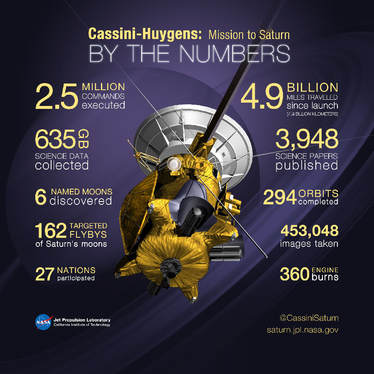 Wow...Look at what Cassini has achieved!!!
Wow...Look at what Cassini has achieved!!!
~ Cassini-Huygens By the Numbers ~
~ Some key numbers from the Cassini-Huygens mission to Saturn ~
2.5 million commands executed.
4.9 billion miles travelled since launch (7.9 billion kilometres)
635 GB science data collected
3,948 science papers published
6 named moons discovered
294 orbits completed
162 targeted flybys of Saturn's moons
453,048 images taken
27 nations participated
360 engine burns
Credit
NASA/Jet Propulsion Laboratory-Caltech
~ Some key numbers from the Cassini-Huygens mission to Saturn ~
2.5 million commands executed.
4.9 billion miles travelled since launch (7.9 billion kilometres)
635 GB science data collected
3,948 science papers published
6 named moons discovered
294 orbits completed
162 targeted flybys of Saturn's moons
453,048 images taken
27 nations participated
360 engine burns
Credit
NASA/Jet Propulsion Laboratory-Caltech
~ Cassini Diving Into History ~
Reported by the European Space Agency
Published on Sep 11, 2017
Following over a decade of ground-breaking discoveries, Cassini is now approaching its mission end. With little fuel left to correct the NASA's spacecraft trajectory, it has been decided to end the mission by plunging it into Saturn’s atmosphere on 15 September 2017. In the process, Cassini will burn up, satisfying planetary protection requirements to avoid possible contamination of any moons of Saturn that could have conditions suitable for life. These include Saturn’s largest moon Titan and Enceladus, which has a liquid ocean under its icy crust.
The grand finale is not only a spectacular way to complete this extraordinary mission, but will also return a bounty of unique scientific data that was not possible to collect during the previous phases of the mission. Cassini has never ventured into the area between Saturn and its rings before, so the new set of orbits is almost like a whole new mission. These close orbits will provide the highest resolution observations ever achieved of the inner rings and the planet's clouds. The orbits will also give the chance to examine in situ the material in the rings and plasma environment of Saturn. It will also probe the planet's magnetic field at close distances.
This video explains Cassini 's final operations, what the Cassini-Huygens mission has taught us about Saturn,
the potential for life on its moons and the promise of more science to come.
More about Cassini-Huygens:
http://www.esa.int/Our_Activities/Space_Science/Cassini-Huygens
Published on Sep 11, 2017
Following over a decade of ground-breaking discoveries, Cassini is now approaching its mission end. With little fuel left to correct the NASA's spacecraft trajectory, it has been decided to end the mission by plunging it into Saturn’s atmosphere on 15 September 2017. In the process, Cassini will burn up, satisfying planetary protection requirements to avoid possible contamination of any moons of Saturn that could have conditions suitable for life. These include Saturn’s largest moon Titan and Enceladus, which has a liquid ocean under its icy crust.
The grand finale is not only a spectacular way to complete this extraordinary mission, but will also return a bounty of unique scientific data that was not possible to collect during the previous phases of the mission. Cassini has never ventured into the area between Saturn and its rings before, so the new set of orbits is almost like a whole new mission. These close orbits will provide the highest resolution observations ever achieved of the inner rings and the planet's clouds. The orbits will also give the chance to examine in situ the material in the rings and plasma environment of Saturn. It will also probe the planet's magnetic field at close distances.
This video explains Cassini 's final operations, what the Cassini-Huygens mission has taught us about Saturn,
the potential for life on its moons and the promise of more science to come.
More about Cassini-Huygens:
http://www.esa.int/Our_Activities/Space_Science/Cassini-Huygens
~ Cassini: The Wonder of Saturn ~
Published on Aug 24, 2017
NASA Jet Propulsion Laboratory
NASA’s Cassini spacecraft has explored the Saturn system since 2004, re-writing our understanding of the giant planet, its rings, moons and magnetosphere. For 13 years the spacecraft’s incredible, truly otherworldly images have revealed the wonder of Saturn in surprising, often awe-inspiring ways. Cassini is planetary exploration at its finest, proving that to truly reveal the grandeur of a world, there is no substitute for actually going there. For more information about the Cassini mission to Saturn, visit https://saturn.jpl.nasa.gov/
NASA Jet Propulsion Laboratory
NASA’s Cassini spacecraft has explored the Saturn system since 2004, re-writing our understanding of the giant planet, its rings, moons and magnetosphere. For 13 years the spacecraft’s incredible, truly otherworldly images have revealed the wonder of Saturn in surprising, often awe-inspiring ways. Cassini is planetary exploration at its finest, proving that to truly reveal the grandeur of a world, there is no substitute for actually going there. For more information about the Cassini mission to Saturn, visit https://saturn.jpl.nasa.gov/
~ Why Cassini Matters ~
The Cassini-Huygens mission is a joint endeavor of NASA
ESA (the European Space Agency),
and the Italian Space Agency
'And is the first mission to orbit Saturn and explore its environs in detail'
The mission was conceived from the beginning as an international endeavor, in 1982, just after the two NASA Voyager spacecraft flew past Saturn. The Voyager flybys whetted the appetites of planetary scientists for more in-depth exploration, particularly with regard to the mysterious moon Titan. Launched in 1997, Cassini has been touring the Saturn system since arriving there in 2004, performing a detailed,
up-close study of the planet, its rings and moons.
The mission delivered ESA's Huygens probe to Titan in 2005, where it performed the first descent and landing on a world in the outer solar system. In complement to Huygens' dazzling revelations about Titan, the Cassini orbiter performed 127 of its own close flybys of Titan
(with many more distant encounters).
By the end of its mission, the Cassini spacecraft will have observed almost half of a Saturn year, which is 29 Earth years long. The four seasons of Saturn's year last about seven Earth years apiece, and upon Cassini's arrival at Saturn, the planet's northern hemisphere was just beginning to emerge from winter. Following its initial, four-year tour, Cassini's mission was extended two more years, to enable the spacecraft to observe changes -- particularly in the rings -- as Saturn reached equinox and the Sun shone edge-on to the rings. After equinox, Cassini was granted an additional seven-year extension. This enabled scientists to follow up on their earlier discoveries at Enceladus and Titan, and watch as summer sunlight came to the northern hemisphere of Saturn and its moons, while winter darkness embraced the south.
The findings of the Cassini mission have revolutionized our understanding of Saturn, its complex rings, the amazing assortment of moons and the planet’s dynamic magnetic environment. The most distant planetary orbiter ever launched, Cassini started making astonishing discoveries immediately upon arrival and continues today. Icy jets shoot from the tiny moon Enceladus. Titan’s hydrocarbon lakes and seas are dominated by liquid ethane and methane, and complex pre-biotic chemicals form in the atmosphere and rain to the surface. Three-dimensional structures tower above Saturn’s rings, and a giant Saturn storm circled the entire planet for most of a year. Cassini’s findings at Saturn have also fundamentally altered many of our concepts of how planets form around stars.
When Cassini ends, it will leave a rich scientific and engineering legacy.
~ Nine Ways Cassini-Huygens Matters ~
To find out more please go to NASA’s Cassini website at:
https://saturn.jpl.nasa.gov/mission/grand-finale/why-cassini-matters/
ESA (the European Space Agency),
and the Italian Space Agency
'And is the first mission to orbit Saturn and explore its environs in detail'
The mission was conceived from the beginning as an international endeavor, in 1982, just after the two NASA Voyager spacecraft flew past Saturn. The Voyager flybys whetted the appetites of planetary scientists for more in-depth exploration, particularly with regard to the mysterious moon Titan. Launched in 1997, Cassini has been touring the Saturn system since arriving there in 2004, performing a detailed,
up-close study of the planet, its rings and moons.
The mission delivered ESA's Huygens probe to Titan in 2005, where it performed the first descent and landing on a world in the outer solar system. In complement to Huygens' dazzling revelations about Titan, the Cassini orbiter performed 127 of its own close flybys of Titan
(with many more distant encounters).
By the end of its mission, the Cassini spacecraft will have observed almost half of a Saturn year, which is 29 Earth years long. The four seasons of Saturn's year last about seven Earth years apiece, and upon Cassini's arrival at Saturn, the planet's northern hemisphere was just beginning to emerge from winter. Following its initial, four-year tour, Cassini's mission was extended two more years, to enable the spacecraft to observe changes -- particularly in the rings -- as Saturn reached equinox and the Sun shone edge-on to the rings. After equinox, Cassini was granted an additional seven-year extension. This enabled scientists to follow up on their earlier discoveries at Enceladus and Titan, and watch as summer sunlight came to the northern hemisphere of Saturn and its moons, while winter darkness embraced the south.
The findings of the Cassini mission have revolutionized our understanding of Saturn, its complex rings, the amazing assortment of moons and the planet’s dynamic magnetic environment. The most distant planetary orbiter ever launched, Cassini started making astonishing discoveries immediately upon arrival and continues today. Icy jets shoot from the tiny moon Enceladus. Titan’s hydrocarbon lakes and seas are dominated by liquid ethane and methane, and complex pre-biotic chemicals form in the atmosphere and rain to the surface. Three-dimensional structures tower above Saturn’s rings, and a giant Saturn storm circled the entire planet for most of a year. Cassini’s findings at Saturn have also fundamentally altered many of our concepts of how planets form around stars.
When Cassini ends, it will leave a rich scientific and engineering legacy.
~ Nine Ways Cassini-Huygens Matters ~
To find out more please go to NASA’s Cassini website at:
https://saturn.jpl.nasa.gov/mission/grand-finale/why-cassini-matters/
~ Cassini’s final year at Saturn ends in spectacularly on the 15th September 2017 ~
Published on Apr 4, 2017 by NASA
The final chapter in a remarkable mission of exploration and discovery, Cassini's Grand Finale is in many ways like a brand new mission. Twenty-two times, NASA's Cassini spacecraft will dive through the unexplored space between Saturn and its rings. What we learn from these ultra-close passes over the planet could be some of the most exciting revelations ever returned by the long-lived spacecraft. This animated video tells the story of Cassini's final, daring assignment and looks back at what the mission has accomplished.
For more about the making of this video, including the science behind the imagery, see the feature at:
https://saturn.jpl.nasa.gov/news/3016/making-cassinis-grand-finale/
The final chapter in a remarkable mission of exploration and discovery, Cassini's Grand Finale is in many ways like a brand new mission. Twenty-two times, NASA's Cassini spacecraft will dive through the unexplored space between Saturn and its rings. What we learn from these ultra-close passes over the planet could be some of the most exciting revelations ever returned by the long-lived spacecraft. This animated video tells the story of Cassini's final, daring assignment and looks back at what the mission has accomplished.
For more about the making of this video, including the science behind the imagery, see the feature at:
https://saturn.jpl.nasa.gov/news/3016/making-cassinis-grand-finale/
~ Cassini’s final year at Saturn by Noeleen Lowndes ~
Well this is it… after nearly 20 years in space, on the 15th September 2017 the Cassini spacecraft will plunge into the giant planets atmosphere and hopefully stay together in one piece long enough to show us the first ever images of Saturn’s turbulent atmosphere, and information on the mass and structure of those astonishing rings.
It seems so sad to say goodbye to this incredible robotic explorer, but on the other hand the legacy it leaves behind from all the scientific discoveries and incredible images taken by the Cassini spacecraft and the Huygens probe, will keep the astronomical community learning about Saturn and its moons for many years to come.
Just this week on the 13th April, NASA released that scientists have discovered the spectrum of molecular Hydrogen among the icy material jetting out from the small moon Enceladus. Wow, that’s an outstanding discovery in the search for life in our Solar System.
You can read all the stunning new details about it at:
https://saturn.jpl.nasa.gov/news/3023/hydrothermal-activity/
But the Cassini mission has not ended just yet, over the next 4 months it will be like a brand new mission for the spacecraft, where it will dive down into the rings 22 times (starting on the 26th April) close to the planets surface before plunging into the planet atmosphere on the 15th September 2017.
Where we will say goodbye forever to this wonderful spacecraft called Cassini…
It seems so sad to say goodbye to this incredible robotic explorer, but on the other hand the legacy it leaves behind from all the scientific discoveries and incredible images taken by the Cassini spacecraft and the Huygens probe, will keep the astronomical community learning about Saturn and its moons for many years to come.
Just this week on the 13th April, NASA released that scientists have discovered the spectrum of molecular Hydrogen among the icy material jetting out from the small moon Enceladus. Wow, that’s an outstanding discovery in the search for life in our Solar System.
You can read all the stunning new details about it at:
https://saturn.jpl.nasa.gov/news/3023/hydrothermal-activity/
But the Cassini mission has not ended just yet, over the next 4 months it will be like a brand new mission for the spacecraft, where it will dive down into the rings 22 times (starting on the 26th April) close to the planets surface before plunging into the planet atmosphere on the 15th September 2017.
Where we will say goodbye forever to this wonderful spacecraft called Cassini…
~ Luminary lectures at the Gold Coast libraries in 2017 ~
On Wednesday evening 19th April 2017 at the Broadbeach Library (Gold Coast)
 ~ Please book online ~
~ Please book online ~
~ NASA’s Cassini spacecraft mission to Saturn on the 19th April 2017 from 6.30pm to 7.30pm ~
Presented by Noeleen Lowndes (SOC member in Australia)
I will be giving a presentation on the Cassini mission at the Broadbeach Library on Wednesday evening the 19th April 2017…this is my first SOC event for 2017 before Saturn is back in our skies for opposition on the 15th June.
If you live on the Gold Coast in Queensland please come along and hear all about this most amazing mission to Saturn, after nearly 20 years this incredible mission will end spectacularly on the 15th September when the Cassini spacecraft will plunge into the planet atmosphere!
Contact the library to book a seat at:
http://www.goldcoast.qld.gov.au/library/luminary-lectures-at-the-library-11686.html
~ Cassini Grand Finale presentation at the Broadbeach Library on the Gold Coast ~
Held on the 19th April 2017
~ Cassini Grand Finale presentation at the Broadbeach Library on the Gold Coast ~
What a great evening it was at the Broadbeach library when over 80 very interested people came to see and hear all about the latest news from the amazing mission to Saturn by the Cassini spacecraft.
There's more about the evening on my Astro Blog at:
http://www.mystardustobservatory.com/astro-blog/cassinis-grand-finale-at-the-broadbeach-library-on-the-gold-coast
What a great evening it was at the Broadbeach library when over 80 very interested people came to see and hear all about the latest news from the amazing mission to Saturn by the Cassini spacecraft.
There's more about the evening on my Astro Blog at:
http://www.mystardustobservatory.com/astro-blog/cassinis-grand-finale-at-the-broadbeach-library-on-the-gold-coast
~ The Magnificent Planet Saturn in 2016 ~
Saturn is now back in our evenings skies, and this year Saturn's stunning rings are fully on display for you to enjoy as the northern hemisphere of the planet is now titled toward us here on Earth.
Opposition this year is on the 3rd June and Saturn has now moved slightly into the constellation of Ophiuchus, but it’s still meandering very close to the stars of Scorpius.
Saturn is very easy to find in 2016, because it appears not far away from the red super giant star Antares in the constellation of Scorpius. Also, the brilliant red planet Mars is doing a celestial dance going back and forth in the same area from March to September, as Mars comes to opposition on The 22nd May 2016. (Opposition means that the planets will be on the same side as the Sun as our Earth so Saturn and Mars will be at there closest to our planet and at there brightest).
So over the coming months Saturn, Mars and Antares will make some beautiful celestial triangles in the night sky, which will make for some pretty viewings and photographs. So here’s hoping the weather’s kind to us and we see this spectacular celestial show :-)
The Science at NASA story is at: http://science.nasa.gov/science-news/science-at-nasa/2016/red-and-golden-planets-opposition/
Opposition this year is on the 3rd June and Saturn has now moved slightly into the constellation of Ophiuchus, but it’s still meandering very close to the stars of Scorpius.
Saturn is very easy to find in 2016, because it appears not far away from the red super giant star Antares in the constellation of Scorpius. Also, the brilliant red planet Mars is doing a celestial dance going back and forth in the same area from March to September, as Mars comes to opposition on The 22nd May 2016. (Opposition means that the planets will be on the same side as the Sun as our Earth so Saturn and Mars will be at there closest to our planet and at there brightest).
So over the coming months Saturn, Mars and Antares will make some beautiful celestial triangles in the night sky, which will make for some pretty viewings and photographs. So here’s hoping the weather’s kind to us and we see this spectacular celestial show :-)
The Science at NASA story is at: http://science.nasa.gov/science-news/science-at-nasa/2016/red-and-golden-planets-opposition/
~ NASA’s Saturn Observation Campaign for 2016 ~
I’ll be out and about again this year presenting all the new discoveries and images that the Cassini spacecraft has taken and also showing the real planet in the night sky to the community. I’ll also organised with my club members from the Southern Astronomical Society another ‘Saturn in the Park’ event at Paradise Point for the month of June…details will be posted here on my website and also on our clubs website at http://sas.org.au
Now the sad news, the Cassini Mission will end next year on the 15th of September 2017, it will have been nearly 20 years since the spacecraft left Earth in 1997 and now NASA has decided that this incredible mission is to end.
This new phase of the mission is called The Grand Finale, and in itself will be like a whole new thrilling mission for the Cassini spacecraft. The project scientists are going to take the spacecraft to unbelievable positions above the poles of Saturn where Cassini will plunge down within the inner rings 22 times before crashing into the atmosphere where it will be vaporized by the huge pressures from within the planet’s body…this is the only safe way to destroy the spacecraft without polluting the pristine environment of the icy moons and the magnificent rings. It will be a very sad day for all of us that have been involved with the mission, but “O My’ what an incredible mission its been!!!
The science that the Cassini spacecraft will provide from this very bold manoeuvre will be another magnificent milestone for this incredible spacecraft, and if all goes well, there will be many more new and exciting discoveries that will have been made about the inner rings and the atmosphere of Saturn.
I’ve been involved with this mission since 2002 and it has been an absolutely incredible experience, to be daily seeing new discoveries from another world and trying to comprehend it is truly a special privilege…I can’t really imagine how some of these mission scientist at NASA sleep at night with the excitement of it all.
I must also say while I’m being a bit sentimental… that having the opportunity to share my time and equipment to show so many people there first views of Saturn has been the most rewarding and happy experience ever…but it’s not over yet, I’ve still go all of 2016 and 2017 to tell everyone about this most AMAZING mission ever that NASA as ever done…Cassini rules the Solar System!!!
Please see some of my pictures and events below for the SOC campaign for 2016 :-)
Now the sad news, the Cassini Mission will end next year on the 15th of September 2017, it will have been nearly 20 years since the spacecraft left Earth in 1997 and now NASA has decided that this incredible mission is to end.
This new phase of the mission is called The Grand Finale, and in itself will be like a whole new thrilling mission for the Cassini spacecraft. The project scientists are going to take the spacecraft to unbelievable positions above the poles of Saturn where Cassini will plunge down within the inner rings 22 times before crashing into the atmosphere where it will be vaporized by the huge pressures from within the planet’s body…this is the only safe way to destroy the spacecraft without polluting the pristine environment of the icy moons and the magnificent rings. It will be a very sad day for all of us that have been involved with the mission, but “O My’ what an incredible mission its been!!!
The science that the Cassini spacecraft will provide from this very bold manoeuvre will be another magnificent milestone for this incredible spacecraft, and if all goes well, there will be many more new and exciting discoveries that will have been made about the inner rings and the atmosphere of Saturn.
I’ve been involved with this mission since 2002 and it has been an absolutely incredible experience, to be daily seeing new discoveries from another world and trying to comprehend it is truly a special privilege…I can’t really imagine how some of these mission scientist at NASA sleep at night with the excitement of it all.
I must also say while I’m being a bit sentimental… that having the opportunity to share my time and equipment to show so many people there first views of Saturn has been the most rewarding and happy experience ever…but it’s not over yet, I’ve still go all of 2016 and 2017 to tell everyone about this most AMAZING mission ever that NASA as ever done…Cassini rules the Solar System!!!
Please see some of my pictures and events below for the SOC campaign for 2016 :-)
The Cassini Spacecraft has now been exploring the Saturnian system for 12 years and these are the incredible numbers released by NASA for 2016.
~ Exploration of Saturn & the Solar System ~
Broadbeach Library on Thursday 12th May 2016 from 5.30pm - 7.00pm
https://www.goldcoast.qld.gov.au/library/default.html
Presented by Noeleen Lowndes
NASA’s Saturn Observation Campaign Member in Australia
https://saturn.jpl.nasa.gov
http://sas.org.au
My visit to the Broadbeach Library on the 12th May was very well received, with the presentation room full of people wanting to hear all about the incredible mission to Saturn by the Cassini Spacecraft and all the other discoveries being made at the planets in the Solar System.
Presented by Noeleen Lowndes
NASA’s Saturn Observation Campaign Member in Australia
https://saturn.jpl.nasa.gov
http://sas.org.au
My visit to the Broadbeach Library on the 12th May was very well received, with the presentation room full of people wanting to hear all about the incredible mission to Saturn by the Cassini Spacecraft and all the other discoveries being made at the planets in the Solar System.
~ Saturn is now back in view in our evening sky ~
I took my camera down onto the beach on Friday the 13th May and captured a lovely image of Saturn and Mars rising in the east above the ocean in the constellation of Scorpio at Kingscliff in NSW.
Mars and Saturn are now at opposition, which means that both planets are at there closest to Earth and are on the same side as the Sun as us. Mars will be travelling quite quickly back and forth through the constellation of Scorpius (The Scorpion) and Saturn will slowly meander through the stars of Ophiuchus (The Serpent-bearer) in the coming months.
I took this image below with a Canon DSLR 70D camera and a Tokina 11-16mm lens @11mm, the exposure time was 30seconds at F2.8 and ISO 1600.
Mars and Saturn are now at opposition, which means that both planets are at there closest to Earth and are on the same side as the Sun as us. Mars will be travelling quite quickly back and forth through the constellation of Scorpius (The Scorpion) and Saturn will slowly meander through the stars of Ophiuchus (The Serpent-bearer) in the coming months.
I took this image below with a Canon DSLR 70D camera and a Tokina 11-16mm lens @11mm, the exposure time was 30seconds at F2.8 and ISO 1600.
~ Finding Saturn in the night sky for the month of May 2016 ~
I always use the excellent educational star charts from Skymaps.com by Kym Thalassoudis.
Please go to the website below to download the star chart for your latitude; I’m in Australia so I download the Southern Hemisphere start chart at:
http://www.skymaps.com/downloads.html
Please go to the website below to download the star chart for your latitude; I’m in Australia so I download the Southern Hemisphere start chart at:
http://www.skymaps.com/downloads.html
~ Spectacular Saturn and Mars on show in the eastern sky ~
Saturn is now looking stunning in the night sky in May 2016 and it’s not that far away from Mars on the ecliptic with its glorious rings now nearly fully open and showing the Cassini ring beautifully.
The magnificent red planet Mars is also putting on a spectacular show in the eastern sky near the crown of Scorpius (The Scorpion). I can’t believe I’m seeing so much detail on the planets surface and I think it’s only going to get better over the next few nights as the dusty red planet reaches opposition.
You must go outside have a look at this planetary show…it’s just wonderful :-)
My images were taken with a Meade LX200 10inch telescope and an Orion Deep Space Video Camera with a 5x Barlow lens attached that saves avi movies, which are loaded and stacked in RegiStax6 and processed in Photoshop.
The magnificent red planet Mars is also putting on a spectacular show in the eastern sky near the crown of Scorpius (The Scorpion). I can’t believe I’m seeing so much detail on the planets surface and I think it’s only going to get better over the next few nights as the dusty red planet reaches opposition.
You must go outside have a look at this planetary show…it’s just wonderful :-)
My images were taken with a Meade LX200 10inch telescope and an Orion Deep Space Video Camera with a 5x Barlow lens attached that saves avi movies, which are loaded and stacked in RegiStax6 and processed in Photoshop.
~ Amazing Saturn at the Stardust Junior Astronomy Club ~
All the children had a great day at the Runaway Bay library learning all about the amazing mission to Saturn by the Cassini spacecraft that’s currently orbiting the beautiful Saturn and many of its mysterious moons.
In a weeks time on the 11th June, all the families will be coming along to our clubs ‘Saturn in the Park’ event to see the real planet in the night sky through many large telescopes…and they are all very excited about that :-)
The activity sheet that I used for the Saturn lesson is from the ESA kids PAXI Fun Book called ‘Explore the Universe’ you will find many more fun space activities in this book for your students and children to enjoy.
Please go to the European Space Agency’s website to download a copy at:
http://www.esa.int/spaceinimages/Images/2014/10/Activity_book
In a weeks time on the 11th June, all the families will be coming along to our clubs ‘Saturn in the Park’ event to see the real planet in the night sky through many large telescopes…and they are all very excited about that :-)
The activity sheet that I used for the Saturn lesson is from the ESA kids PAXI Fun Book called ‘Explore the Universe’ you will find many more fun space activities in this book for your students and children to enjoy.
Please go to the European Space Agency’s website to download a copy at:
http://www.esa.int/spaceinimages/Images/2014/10/Activity_book
~ Saturn in the Park on the 11th June 2016 ~
~ Saturn in the Park ~
Members from the Southern Astronomical Society invite you to a viewing of the magnificent planets Saturn, Jupiter and Mars
along with viewings of the Moon through our large telescopes.
~ Come along to the park for a wonderful night under the stars ~
Date: Saturday the 11th June from 6.00 p.m. to 9.30 p.m.
Place: Esplanade North Park, The Esplanade at Paradise Point
(Opposite Mallard Ave on the beachfront)
For more information please go to our clubs website at:
http://sas.org.au
Or contact Noeleen Lowndes
(President) Southern Astronomical Society (Gold Coast)
*Unfortunately if the weather is cloudy the event will be cancelled*
Members from the Southern Astronomical Society invite you to a viewing of the magnificent planets Saturn, Jupiter and Mars
along with viewings of the Moon through our large telescopes.
~ Come along to the park for a wonderful night under the stars ~
Date: Saturday the 11th June from 6.00 p.m. to 9.30 p.m.
Place: Esplanade North Park, The Esplanade at Paradise Point
(Opposite Mallard Ave on the beachfront)
For more information please go to our clubs website at:
http://sas.org.au
Or contact Noeleen Lowndes
(President) Southern Astronomical Society (Gold Coast)
*Unfortunately if the weather is cloudy the event will be cancelled*
~ Members from the Southern Astronomical Society show Saturn in the night sky ~
Our clubs Saturn in the Park event turned out to be a beautiful clear night with many hundreds of people coming along to look through our telescopes at the beautiful planet Saturn in the sky…everyone had a wonderful night :-)
~ Images of Saturn, Mars and Jupiter taken in June 2016 ~
During the month of June 2016, I had the wonderful opportunity to take some of my best images yet of not only the planet Saturn but also Mars and Jupiter. I was not happy with the older Orion Deep Space Video camera that I was using and did not want to miss out on getting this fantastic planetary line-up in 2016.
I brought the new ZWO ASI 120 MC-S Colour CCD astronomy camera, which was very easy to use, but you have to take the images with your computer out in the field.
The images were saved in an AVI file and then imported into Registax6 where the movie file images are stacked which produces an image from hundreds or thousands of images captured.
Once you have the final image, you can then go to the wavelet feature within the program to do more processing. There’s a bit of time working out which settings to use, but after playing around with the settings for a while it’s just amazing what detail is captured.
(When I do my tutorial page, I’ll outline the process)
I always use my Meade LX200 10inch telescope to take the planetary images, the bigger the aperture the more resolution with the images.
Saturn’s rings are now nearly wide open…next year in 2017 they will be fully open wide with no planet shadow on the rings.
I brought the new ZWO ASI 120 MC-S Colour CCD astronomy camera, which was very easy to use, but you have to take the images with your computer out in the field.
The images were saved in an AVI file and then imported into Registax6 where the movie file images are stacked which produces an image from hundreds or thousands of images captured.
Once you have the final image, you can then go to the wavelet feature within the program to do more processing. There’s a bit of time working out which settings to use, but after playing around with the settings for a while it’s just amazing what detail is captured.
(When I do my tutorial page, I’ll outline the process)
I always use my Meade LX200 10inch telescope to take the planetary images, the bigger the aperture the more resolution with the images.
Saturn’s rings are now nearly wide open…next year in 2017 they will be fully open wide with no planet shadow on the rings.
~ Saturn night in September at St Andrews Lutheran College on the Gold Coast ~
~ Saturn on the Mountain 10th & 11th September 2016 ~
~ Saturn on the Mountain ~
Every year I’m invited to be a guest speaker at the beautiful world heritage O’Reilly’s Rainforest Retreat at Lamington National Park in Queensland.
This year on the 10th and the 11th of September, we had an amazing weekend on the mountain to celebrate Saturn in the night sky, where a lot of the guests enjoyed learning all about the Cassini Mission and seeing the real planet Saturn through a large telescope in the night sky.
This was a complimentary event put on by the resort for the enjoyment of all there guests and staff and I’m very proud to have been invited to give this presentation on Saturn at one of the most beautiful places in the world :-)
https://oreillys.com.au
~ Please see some images from the weekend below ~
Every year I’m invited to be a guest speaker at the beautiful world heritage O’Reilly’s Rainforest Retreat at Lamington National Park in Queensland.
This year on the 10th and the 11th of September, we had an amazing weekend on the mountain to celebrate Saturn in the night sky, where a lot of the guests enjoyed learning all about the Cassini Mission and seeing the real planet Saturn through a large telescope in the night sky.
This was a complimentary event put on by the resort for the enjoyment of all there guests and staff and I’m very proud to have been invited to give this presentation on Saturn at one of the most beautiful places in the world :-)
https://oreillys.com.au
~ Please see some images from the weekend below ~
~ NASA’s Saturn Observation Campaign for 2015 ~
By SOC Member Noeleen Lowndes
The best time to view Saturn in the night sky this year will be at the time of opposition during the month of May, you can also see Saturn a lot earlier than this if you’re prepared to get up in the early hours of the morning.
At opposition, the planet Saturn will be at its brightest and closest to us here on Earth because of the perfect alignment between the Sun, Earth and Saturn that are all in line on the same side of the Sun…that's why at opposition we see Saturn rise in the eastern sky at sunset and set in the west at sunrise. As the days and weeks go by after opposition, the Earth quickly moves along in its orbit around the Sun and leaves Saturn behind…but you have plenty of time to view this beautiful planet for the next couple of months in the evening sky :-)
My first images of Saturn this year were taken in the early hours of the morning during April at my Stardust Observatory. I observed that Saturn was shinning with its bright golden light among the arc of curved stars in the crown of Scorpius, Saturn was right next to the double star (Beta) Scorpii. …Which looked quite remarkable!
I used my tracking Meade LX200 10 inch telescope to take large images of Saturn using my Orion Deep Space Video Camera and a 2x Barlow lens for more magnification. To take the wide field images to show Saturn’s position in Scorpius, I attached my DSLR camera with a wide field lens on top of the tracking telescope and took some short exposures that I stacked together.
At opposition, the planet Saturn will be at its brightest and closest to us here on Earth because of the perfect alignment between the Sun, Earth and Saturn that are all in line on the same side of the Sun…that's why at opposition we see Saturn rise in the eastern sky at sunset and set in the west at sunrise. As the days and weeks go by after opposition, the Earth quickly moves along in its orbit around the Sun and leaves Saturn behind…but you have plenty of time to view this beautiful planet for the next couple of months in the evening sky :-)
My first images of Saturn this year were taken in the early hours of the morning during April at my Stardust Observatory. I observed that Saturn was shinning with its bright golden light among the arc of curved stars in the crown of Scorpius, Saturn was right next to the double star (Beta) Scorpii. …Which looked quite remarkable!
I used my tracking Meade LX200 10 inch telescope to take large images of Saturn using my Orion Deep Space Video Camera and a 2x Barlow lens for more magnification. To take the wide field images to show Saturn’s position in Scorpius, I attached my DSLR camera with a wide field lens on top of the tracking telescope and took some short exposures that I stacked together.
Saturn’s rings are now fully on show with the northern summer hemisphere on view.
~ A perfect time to see the stunning rings of this beautiful planet in our solar system ~
~ Beautiful Saturn ~
Image taken 17th April 2015 through My Meade LX200 10inch Schmidt-Cassegrain telescope and an Orion Deep Space Video Camera with a 2x barlow lens, avi movie stacked in RegiStack 6 and lightly processed in PS CS4.
Image taken 17th April 2015 through My Meade LX200 10inch Schmidt-Cassegrain telescope and an Orion Deep Space Video Camera with a 2x barlow lens, avi movie stacked in RegiStack 6 and lightly processed in PS CS4.
~ Saturn in the crown of Scorpius 17th April 2015 ~
The information for my images:
~ Saturn in Scorpius ~
A quick wide field image to show where Saturn was in the Head of Scorpius on the 17th April 2015, 6x20 second images taken with a Canon 700D camera and Tokina 11-16mm lens @15mm ISO3200 and the image is cropped.
The second image is marked to show the outline of Scorpius (The Scorpion)
~ Saturn in Scorpius ~
A quick wide field image to show where Saturn was in the Head of Scorpius on the 17th April 2015, 6x20 second images taken with a Canon 700D camera and Tokina 11-16mm lens @15mm ISO3200 and the image is cropped.
The second image is marked to show the outline of Scorpius (The Scorpion)
What will the Cassini spacecraft be up to this year?
After all the excitement of celebrating the 10th anniversary of the Cassini spacecrafts arrival at Saturn in 2014, the exploration of the Saturnian system continues…
To find the full Saturn tour dates for the spacecrafts events for 2015 please go to the Cassini website at:
http://saturn.jpl.nasa.gov/mission/saturntourdates/saturntourdates2015/
To find the full Saturn tour dates for the spacecrafts events for 2015 please go to the Cassini website at:
http://saturn.jpl.nasa.gov/mission/saturntourdates/saturntourdates2015/
~ Saturn in the night sky for the month of June 2015 ~
Saturn has now moved a little away from the curve of stars in the crown of Scorpius as seen in my image taken on the 20th June 2015 at my Stardust Observatory at Leyburn.
The images were taken with a Canon 40D with a 10-20mm lens attached set at 20mm. The ISO was 800 and the focal length f5.6 that required me to take longer exposures to capture the starlight.
The4 camera was attached to the top of my Meade LX200 10inch telescope that was polar aligned and tracking the night sky.
There are 6 x10 minute subs and 6x10 minute dark frames, which were stacked in DSS (Deep Sky Stacker) and processed in PS CS4.
The images were taken with a Canon 40D with a 10-20mm lens attached set at 20mm. The ISO was 800 and the focal length f5.6 that required me to take longer exposures to capture the starlight.
The4 camera was attached to the top of my Meade LX200 10inch telescope that was polar aligned and tracking the night sky.
There are 6 x10 minute subs and 6x10 minute dark frames, which were stacked in DSS (Deep Sky Stacker) and processed in PS CS4.
~ Saturn in the Constellation of Scorpius (The Scorpion) 20th June 2015 ~
~ NASA's Cassini's Mission Top 10 Images and Science Results of 2015 ~
I’ve made up a montage from some of the images and science results of 2015.
But please go to the Cassini website to read all about the new discoveries made this year at:
http://saturn.jpl.nasa.gov/news/cassinifeatures/topimages2015/
But please go to the Cassini website to read all about the new discoveries made this year at:
http://saturn.jpl.nasa.gov/news/cassinifeatures/topimages2015/
The European Space Agency (ESA) have released 10th anniversary video of Huygens landing on Titan
~ HUYGENS'S DESCENT TO TITAN'S SURFACE ~
The European Space Agency (ESA) have also release a 10th anniversary video from the images taken as there remarkable Huygens probe was released from the Cassini spacecraft on the 12th January 2005 to cruise down onto the surface of Saturn’s largest moon Titan.
The European Space Agency (ESA) have also release a 10th anniversary video from the images taken as there remarkable Huygens probe was released from the Cassini spacecraft on the 12th January 2005 to cruise down onto the surface of Saturn’s largest moon Titan.
Date: 14 January 2015
Copyright: ESA/NASA/JPL/University of Arizona
On 15 October 1997, NASA's Cassini orbiter embarked on an epic, seven-year voyage to the Saturnian system. Hitching a ride was ESA's Huygens probe, destined for Saturn's largest moon, Titan. The final chapter of the interplanetary trek for Huygens began on 25 December 2004 when it deployed from the orbiter for a 22-day solo cruise toward the haze-shrouded moon. Plunging into Titan’s atmosphere, on 14 January 2005, the probe survived the hazardous 2 hour 27 minute descent to touch down safely on Titan’s frozen surface.
More information on the video can be found at:
http://sci.esa.int/cassini-huygens/39218-huygens-descent-to-titan-surface/
The Main EUROPEAN SPACE AGENCY website is at: http://www.esa.int/ESA
Copyright: ESA/NASA/JPL/University of Arizona
On 15 October 1997, NASA's Cassini orbiter embarked on an epic, seven-year voyage to the Saturnian system. Hitching a ride was ESA's Huygens probe, destined for Saturn's largest moon, Titan. The final chapter of the interplanetary trek for Huygens began on 25 December 2004 when it deployed from the orbiter for a 22-day solo cruise toward the haze-shrouded moon. Plunging into Titan’s atmosphere, on 14 January 2005, the probe survived the hazardous 2 hour 27 minute descent to touch down safely on Titan’s frozen surface.
More information on the video can be found at:
http://sci.esa.int/cassini-huygens/39218-huygens-descent-to-titan-surface/
The Main EUROPEAN SPACE AGENCY website is at: http://www.esa.int/ESA
~ NASA’s Saturn Observation Campaign (SOC) for 2014 ~
~ Happy 10th Anniversary to the Cassini Spacecraft and all the Cassini Team at NASA’s Jet Propulsion Laboratory (JPL) ~
Lots of best wishes from Noeleen Lowndes (SOC) team member in Australia and friends :-)
Lots of best wishes from Noeleen Lowndes (SOC) team member in Australia and friends :-)
Above, you will see a collage of some of my recent events where everyone has enjoyed looking at and learning all about the new discoveries being made at Saturn by the Cassini Spacecraft and wishing the Cassini team at JPL a happy 10th Anniversary.
This year is a special milestone for the Cassini Mission in the fact that it’s now been 10 years since the spacecraft arrived Saturn. On the 30 June 2004 after nearly a 7-year journey through the solar system the Cassini-Huygens spacecraft finally arrived at the planet. In 2004 it had to perform a complicated Saturn Orbital Insertion (SOI) manoeuvre to be captured by the planets gravity so it could safely go into orbit about the planet. This was executed perfectly for the spacecraft to begin its amazing tour of the Saturnian system.
It’s now expected that the Cassini spacecraft will continue its incredible mission of discovery until the year 2017…so my role as a SOC member will also continue, where I'll give presentations to the community on all the latest discoveries being made by the spacecraft and show this magnificent planet to everyone through my large telescope.
This year is a special milestone for the Cassini Mission in the fact that it’s now been 10 years since the spacecraft arrived Saturn. On the 30 June 2004 after nearly a 7-year journey through the solar system the Cassini-Huygens spacecraft finally arrived at the planet. In 2004 it had to perform a complicated Saturn Orbital Insertion (SOI) manoeuvre to be captured by the planets gravity so it could safely go into orbit about the planet. This was executed perfectly for the spacecraft to begin its amazing tour of the Saturnian system.
It’s now expected that the Cassini spacecraft will continue its incredible mission of discovery until the year 2017…so my role as a SOC member will also continue, where I'll give presentations to the community on all the latest discoveries being made by the spacecraft and show this magnificent planet to everyone through my large telescope.
I think Saturn will always have the ‘Wow’ factor, because of its stunning rings and its pretty soft golden colour and the way it just seems to float there in the night sky…. nobody ever forgets there first views of this beautiful planet through a telescope. The image below is the stunning view of Saturn as the
Cassini spacecraft approached the planet on the 9th February 2004
from a distance of 69 million kilometres…Wow!!!
~ These are the Amazing numbers for NASA's Cassini-Huygens mission to Saturn since the spacecrafts arrival in 2004 ~
There are now hundreds of thousands of images taken of Saturn and its amazing moons, please go to the main Cassini website to view some of the most stunning image ever to be taken of a planet in our solar system. The main Cassini website is at: http://saturn.jpl.nasa.gov/
Carolyn Porco the mission imaging specialist at NASA, not only wanted to take scientific images of the Saturnian system, she also wanted to show the full beauty of this planet…in that, she and her imaging team have done the most outstanding job for every person to enjoy the stunning beauty of Saturn and its many amazing moons.
Since my involvement with the SOC campaign which began in 2002, so many spectacular new discoveries have been made at Saturn by the Cassini spacecraft that are just too numerous to mention, so please view this latest video from JPL that shows a preview of some of the most stunning images captured and what’s still to come, you will be absolutely amazed at the beauty of this spectacular planet….
Carolyn Porco the mission imaging specialist at NASA, not only wanted to take scientific images of the Saturnian system, she also wanted to show the full beauty of this planet…in that, she and her imaging team have done the most outstanding job for every person to enjoy the stunning beauty of Saturn and its many amazing moons.
Since my involvement with the SOC campaign which began in 2002, so many spectacular new discoveries have been made at Saturn by the Cassini spacecraft that are just too numerous to mention, so please view this latest video from JPL that shows a preview of some of the most stunning images captured and what’s still to come, you will be absolutely amazed at the beauty of this spectacular planet….
The main Cassini website is at: http://saturn.jpl.nasa.gov/
The SOC web site is at: http://saturn.jpl.nasa.gov/education/saturnobservation/
Please find below a selection of images taken from some of my past SOC events…it’s been such a privilege to be part of this wonderful community outreach campaign by NASA’s Jet Propulsion Laboratory for the past 12 years. Special mention must go to my coordinator at JPL, Jane Houston-Jones who has always made sure that I have lots of NASA goodies to hand out at my presentations, thank you Jane :-)
The SOC web site is at: http://saturn.jpl.nasa.gov/education/saturnobservation/
Please find below a selection of images taken from some of my past SOC events…it’s been such a privilege to be part of this wonderful community outreach campaign by NASA’s Jet Propulsion Laboratory for the past 12 years. Special mention must go to my coordinator at JPL, Jane Houston-Jones who has always made sure that I have lots of NASA goodies to hand out at my presentations, thank you Jane :-)
For me, this montage of images is what the Saturn Observation Campaign has been all about…sharing the delight of the night sky with everyone :-)
More images from past SOC events will follow soon from 2003 onwards....
More images from past SOC events will follow soon from 2003 onwards....

